Week 213: Lessons galore on the Canal du Centre
We have our first run in with a low hanging bridge as we come to grips with navigating Clair de Lune.
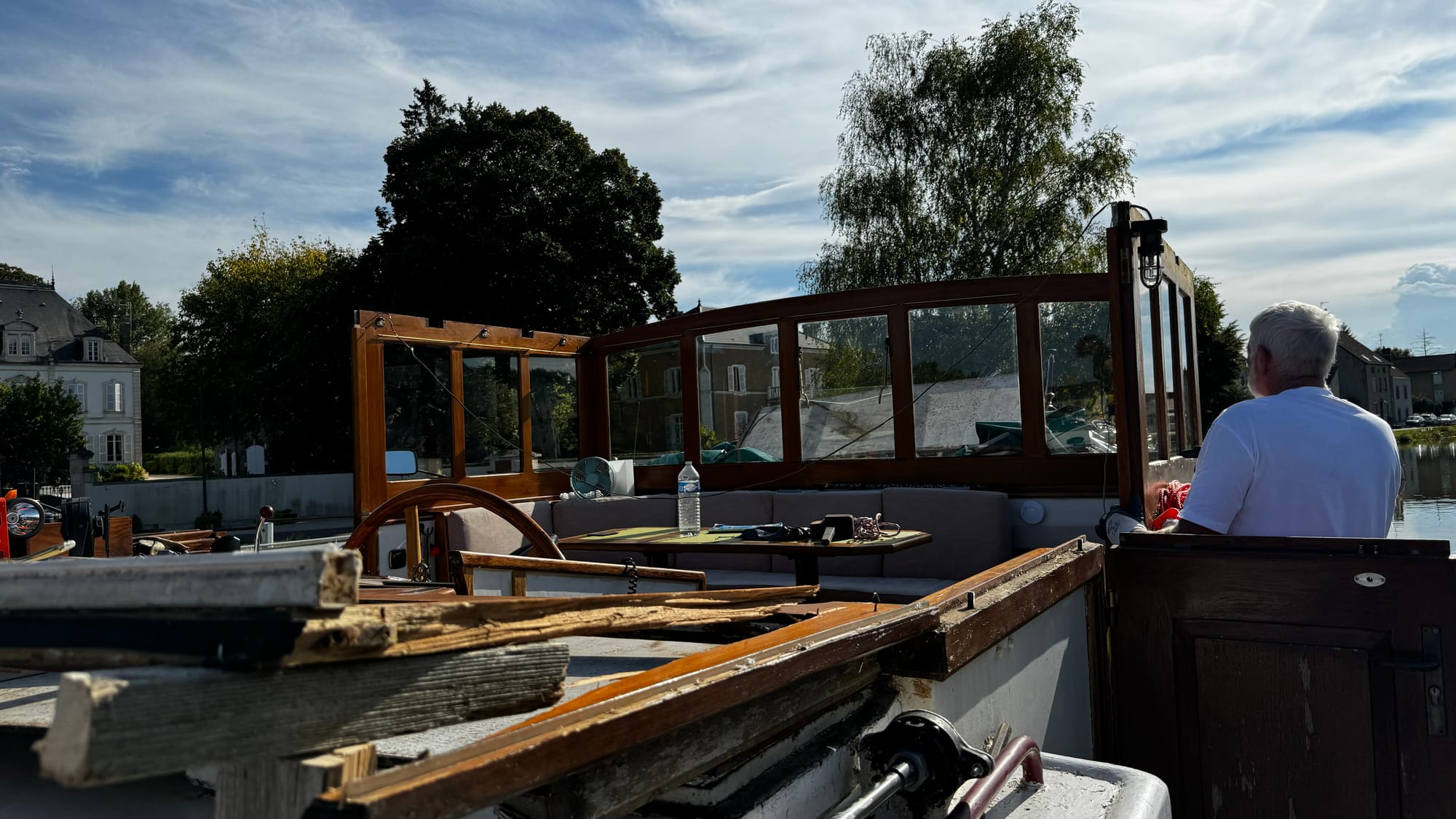
This week has been one with lots of learning. We are learning about living on Clair de Lune underway, learning how to handle her, how to enter locks or squeeze through narrows. We already know a lot from our time on Matilda, but there are hazards on canals that we're not yet familiar with. A lot of transferrable skills, but some that don't transfer, as well as some that don't matter.
Setting off, the first and strangest difference was the very physical nature of navigating a narrow canal. Whereas Matilda has never (in our time) touched the ground or a shore, with Clair de Lune, it's a contact sport. Depth gauges don't exist – after all, the canal is 1.6 meters deep (or thereabouts), and we draw 1.1 (or thereabouts). With silt and debris on the bottom, that's a tiny gap. The depth gauge wouldn't tell us anything we don't already know – you're close to hitting the bottom.
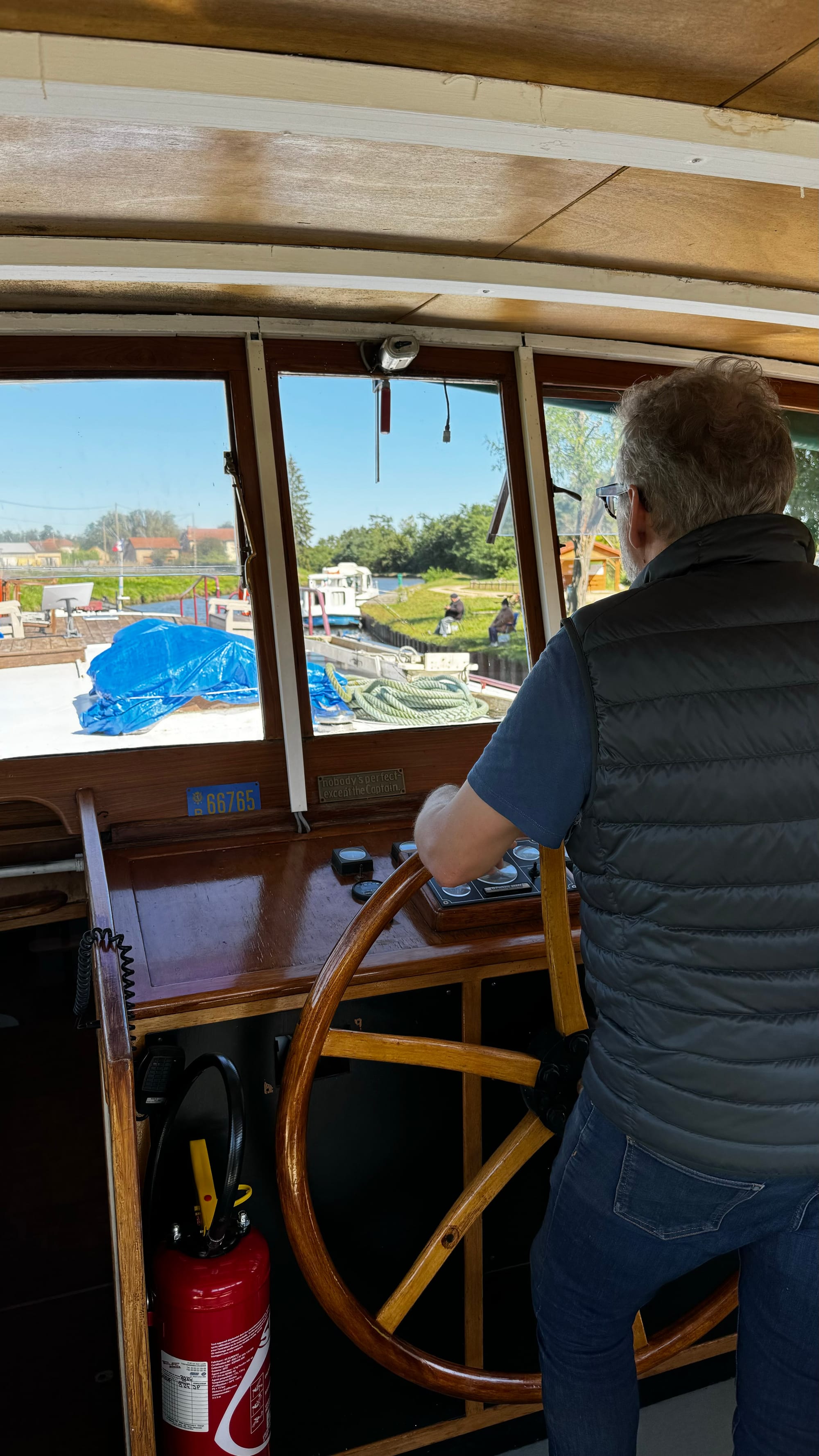
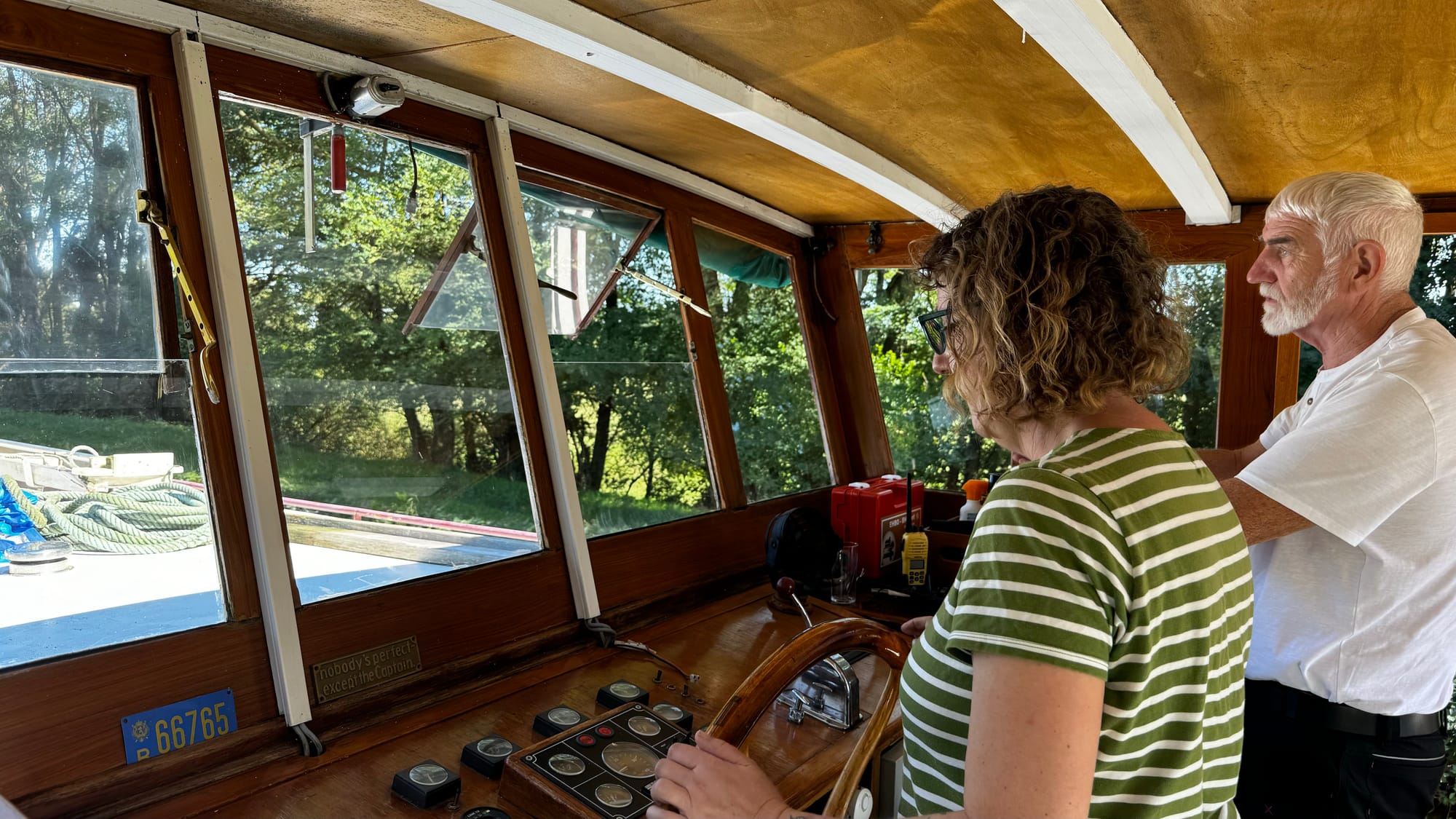
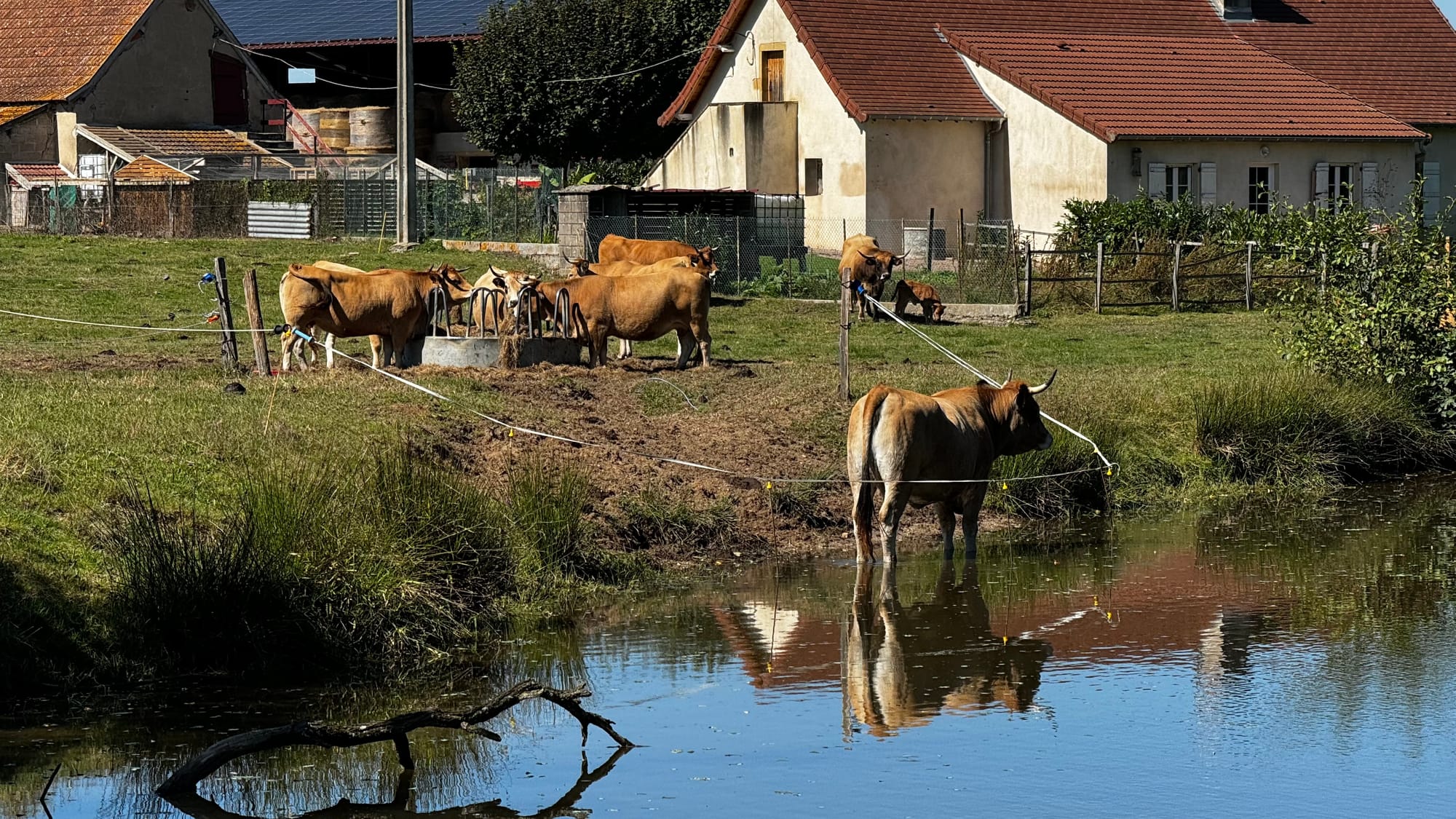
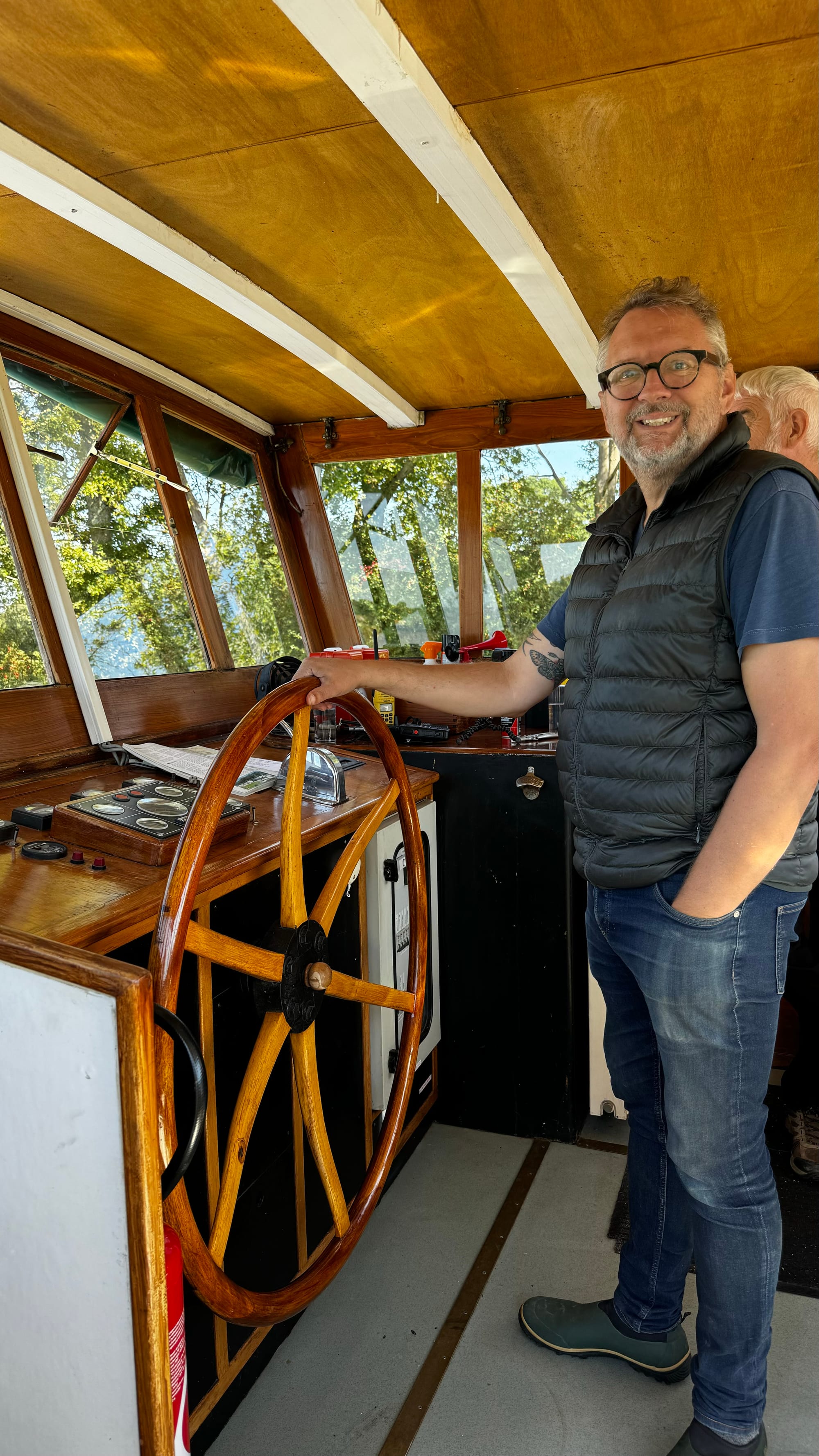
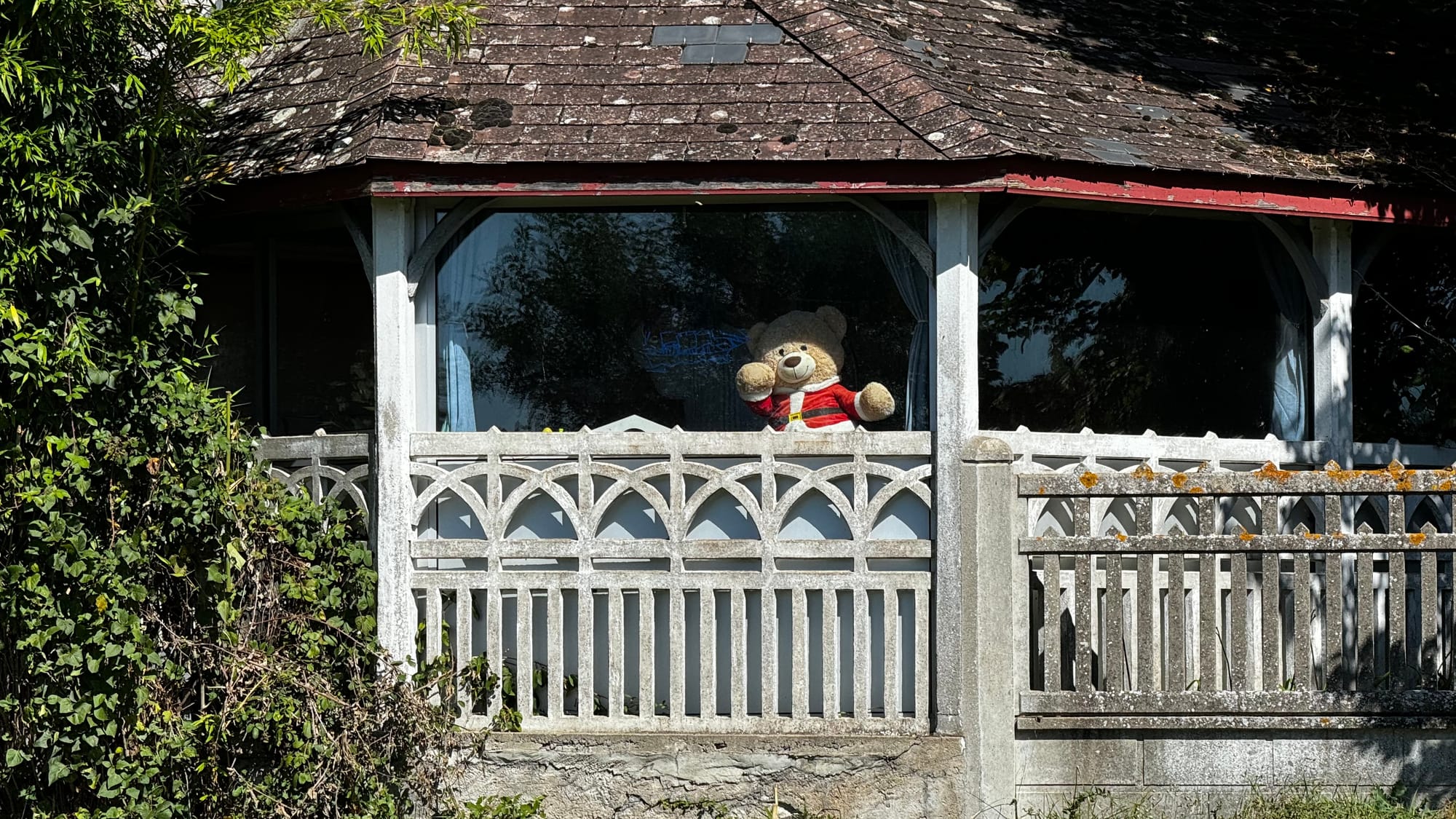
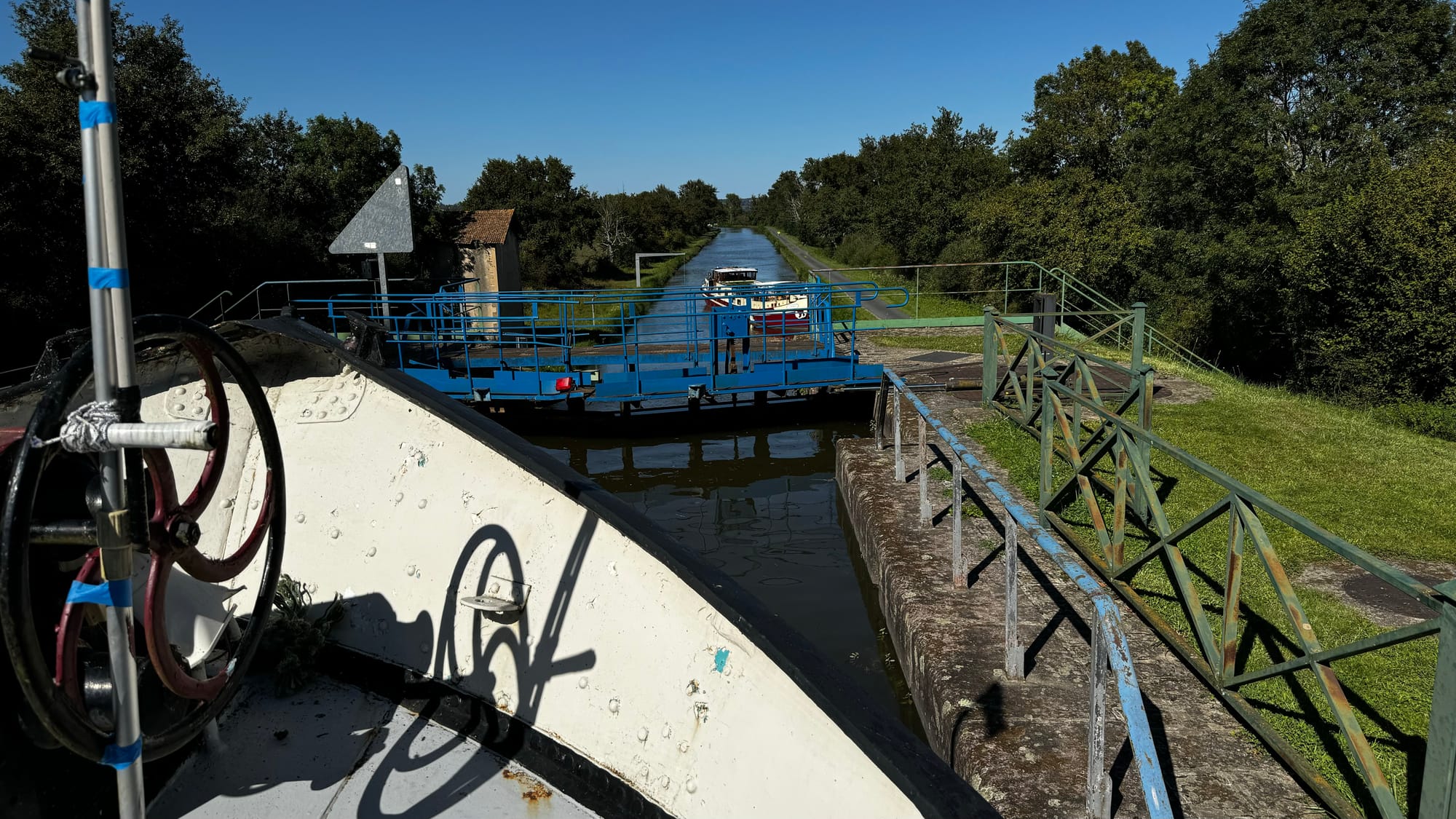
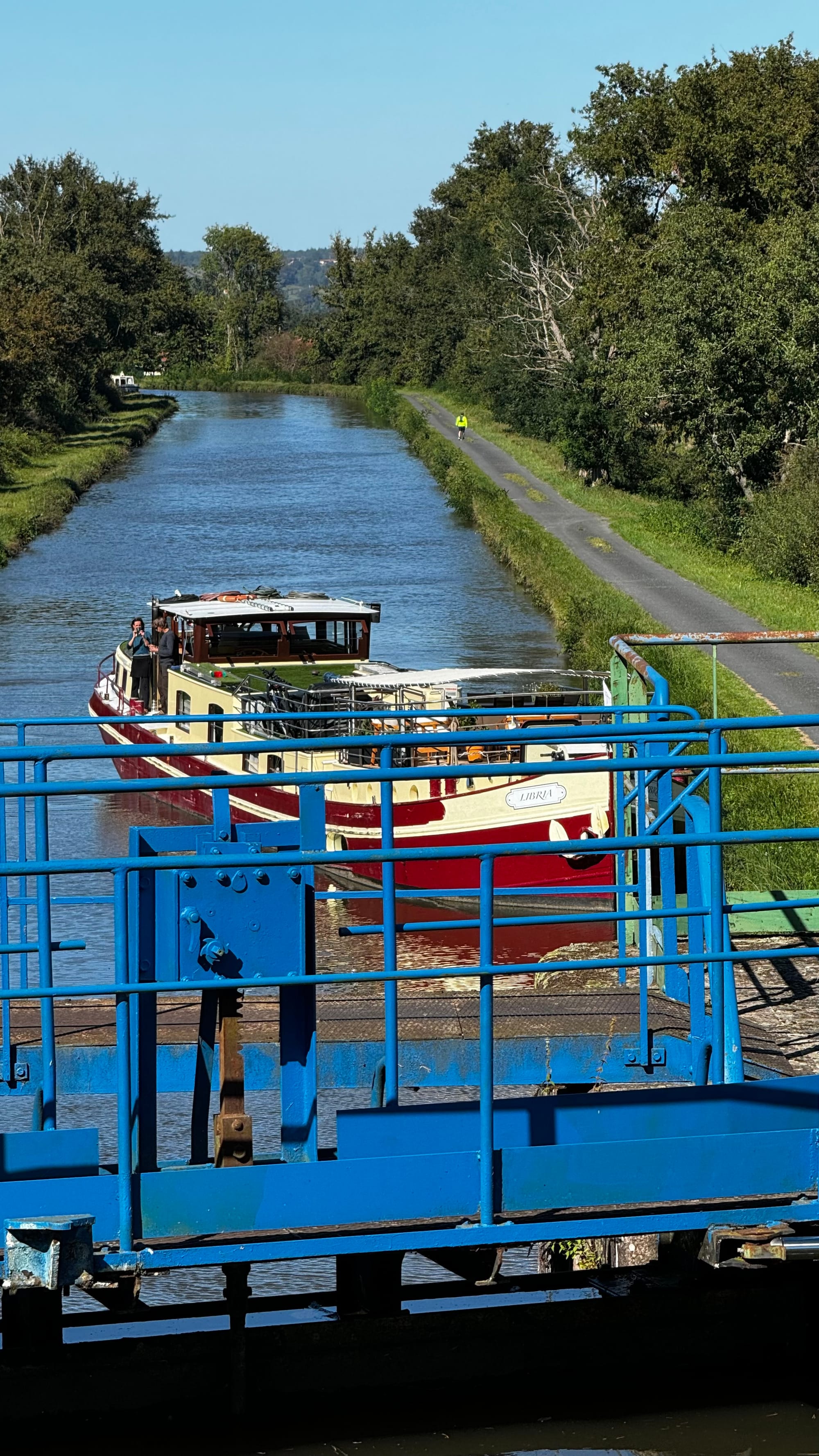
Underway on day one.
And you often do. Mostly, it's just silt or the occasional sand bank. You'll be cruising along, and then there's a rubbing (if it's sand) or dead quiet (if it's silt), and you come to a halt (generally quite gently). Reverse off (remember the bow is 20 meters away from the wheelhouse and 27 from the prop), and you go again.
Clair de Lune is apparently a bit light. At 100 tons (on paper, who, in fact, really knows in reality), Paul estimates that she needs an extra 30 tons of ballast to handle correctly. At the moment, she's a bit "flighty", skating across the surface and crabbing in a stiff breeze. For a big boat, she's very sensitive to small movements of the rudder.
Video of our day one journey.
There are other differences in cruising on the canals, too. It's much more scenic. We are in a beautiful part of France, where several hotel barges are cruising. The shore is only ever five meters away. The towpath is now a cycle and hiking route, so endless people are walking by, filming us as we pull into a lock or cruise past sedately.
The narrow width means that touching the edge is unavoidable. But Clair de Lune is built to bounce off and continue. In some parts of the canal, bigger barges than us (a 38-meter commercial) might have no option when navigating a tight bend other than planting the bow into a bank and pressing against it to spin the stern.
Clair was firmly stuck on the bank when we set off on Sunday morning. She was positioned tightly between two boats, and immediately after we pulled off, there was a bridge to navigate. Paul showed us how to use the rudder as a stern thruster and prop wash to try to move the silt beneath the boat, and before long, we'd drifted backward into the canal and were underway. Nose forwards and navigated gently under the very low bridge, and we were off.
Karina and I swapped roles several times as we got the hang of things. We initially intended to cruise down to the next Halte Nautique and rest for the night, satisfied we'd moved 5k downstream, but we soon discovered the realities of a bigger barge on the small canals. As we tried to moor, the stern touched the bottom; we grounded out and decided to, instead, push on. The height of the canals can vary a little as the locks go up and down, and Paul pointed out that while we might force our way onto the stop, we weren't guaranteed to get off again in the morning.
Instead of taking the time that afternoon to revise the locking technique, we were, instead, straight into it. Four locks and an aqueduct later, we found ourselves in Digoin, this time by barge. We'd only visited the outskirts and the box stores by car, so it was pretty novel to be in the centre and explore the cute town.
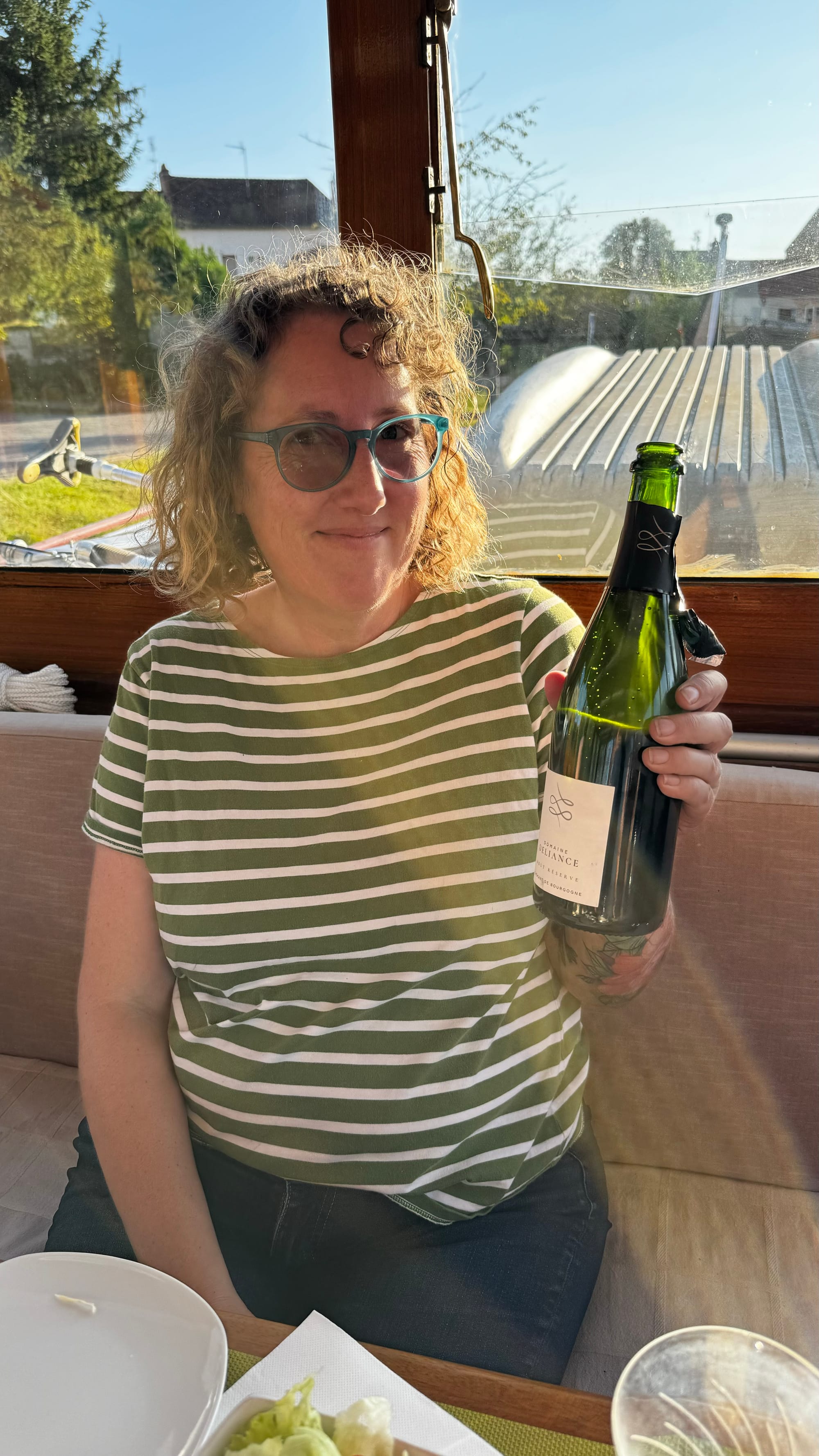
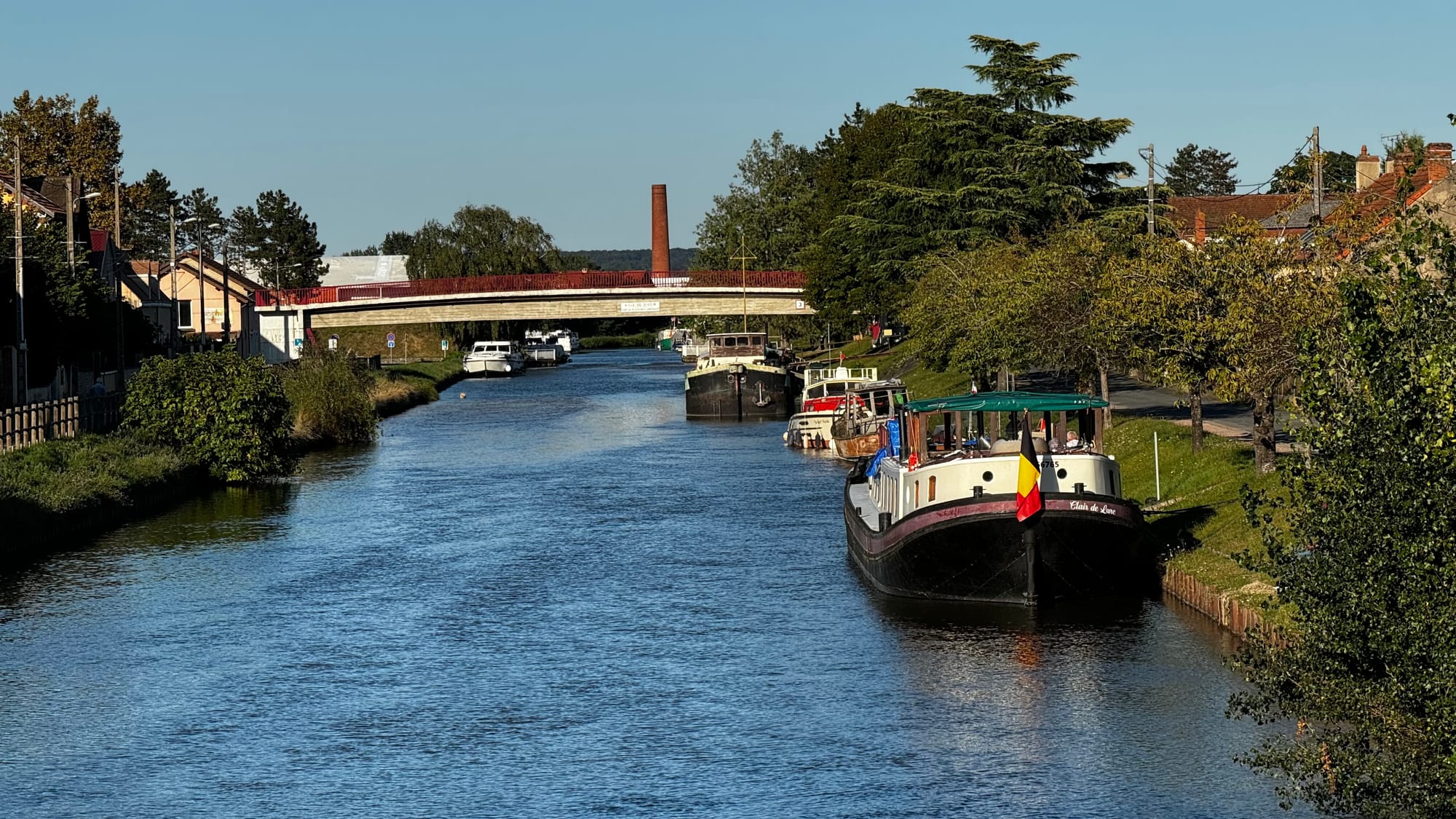
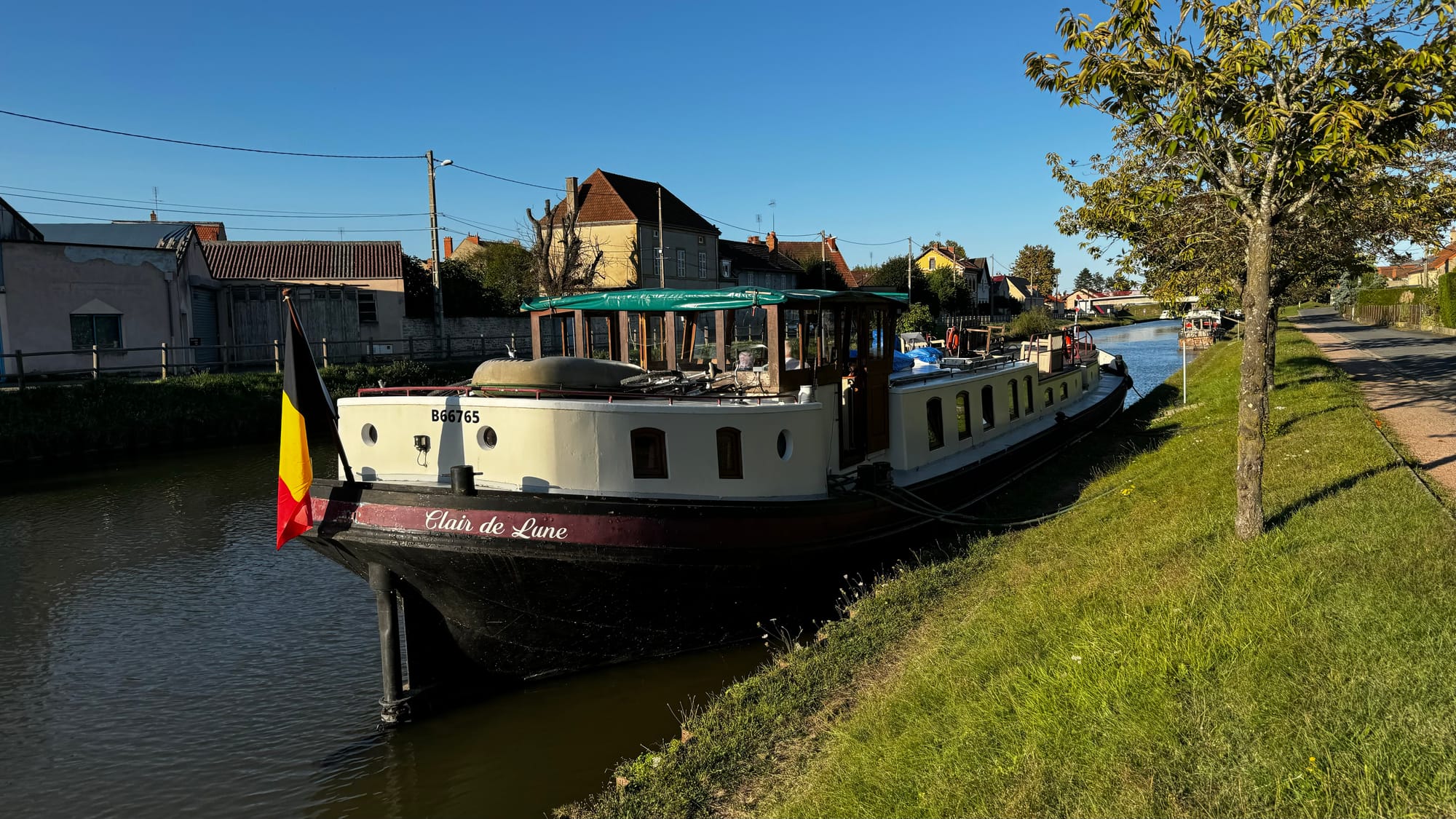
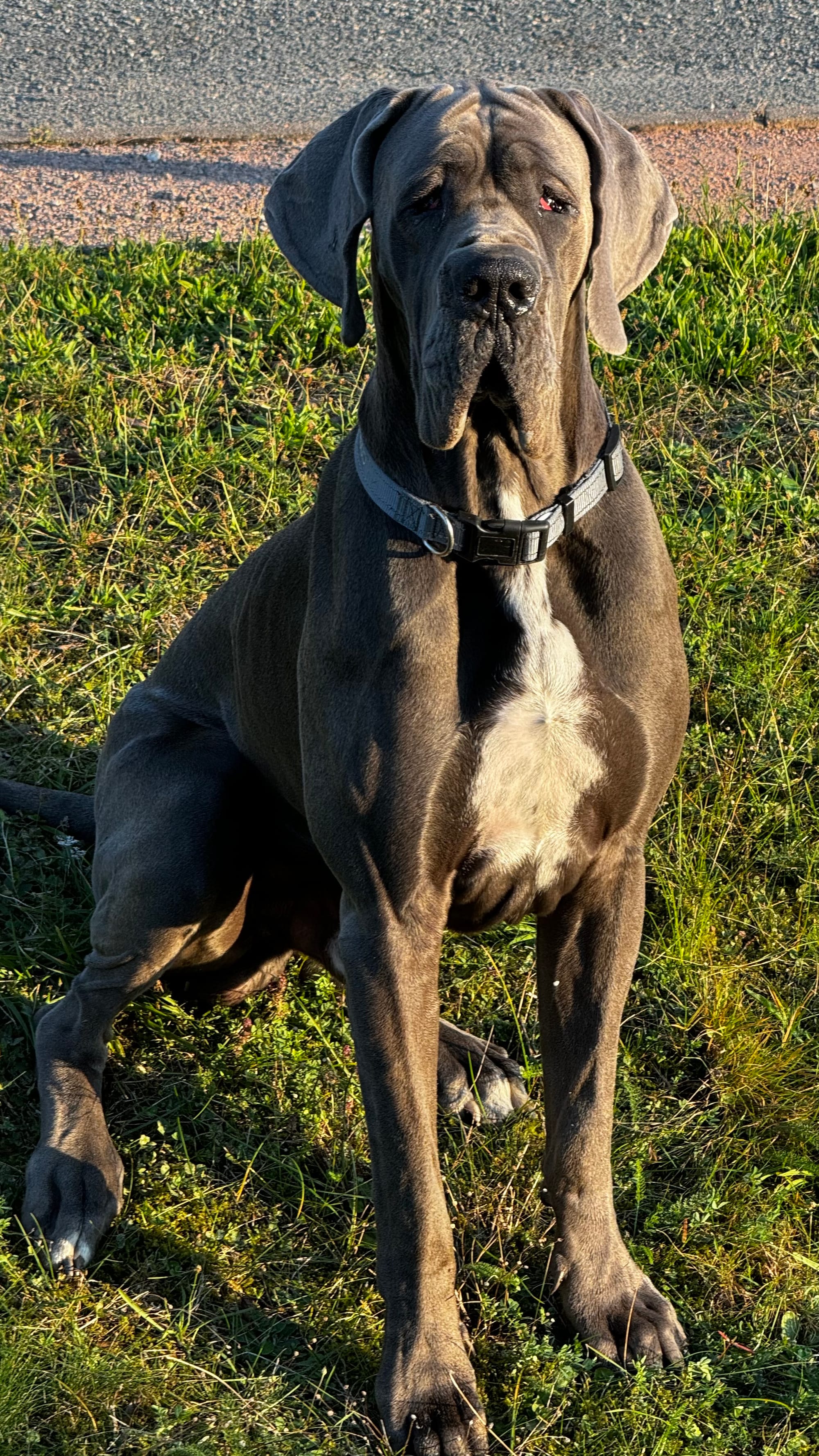
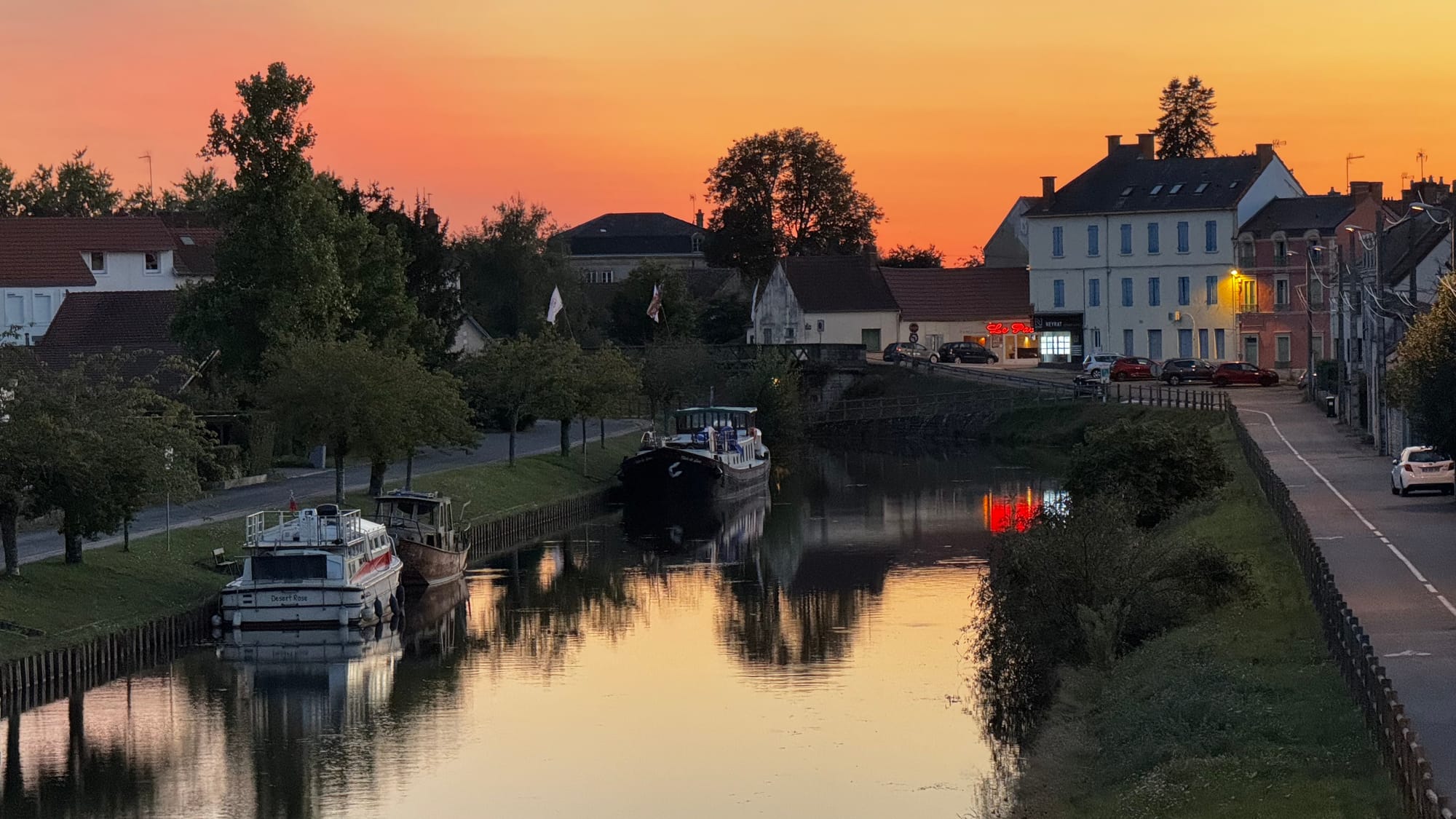
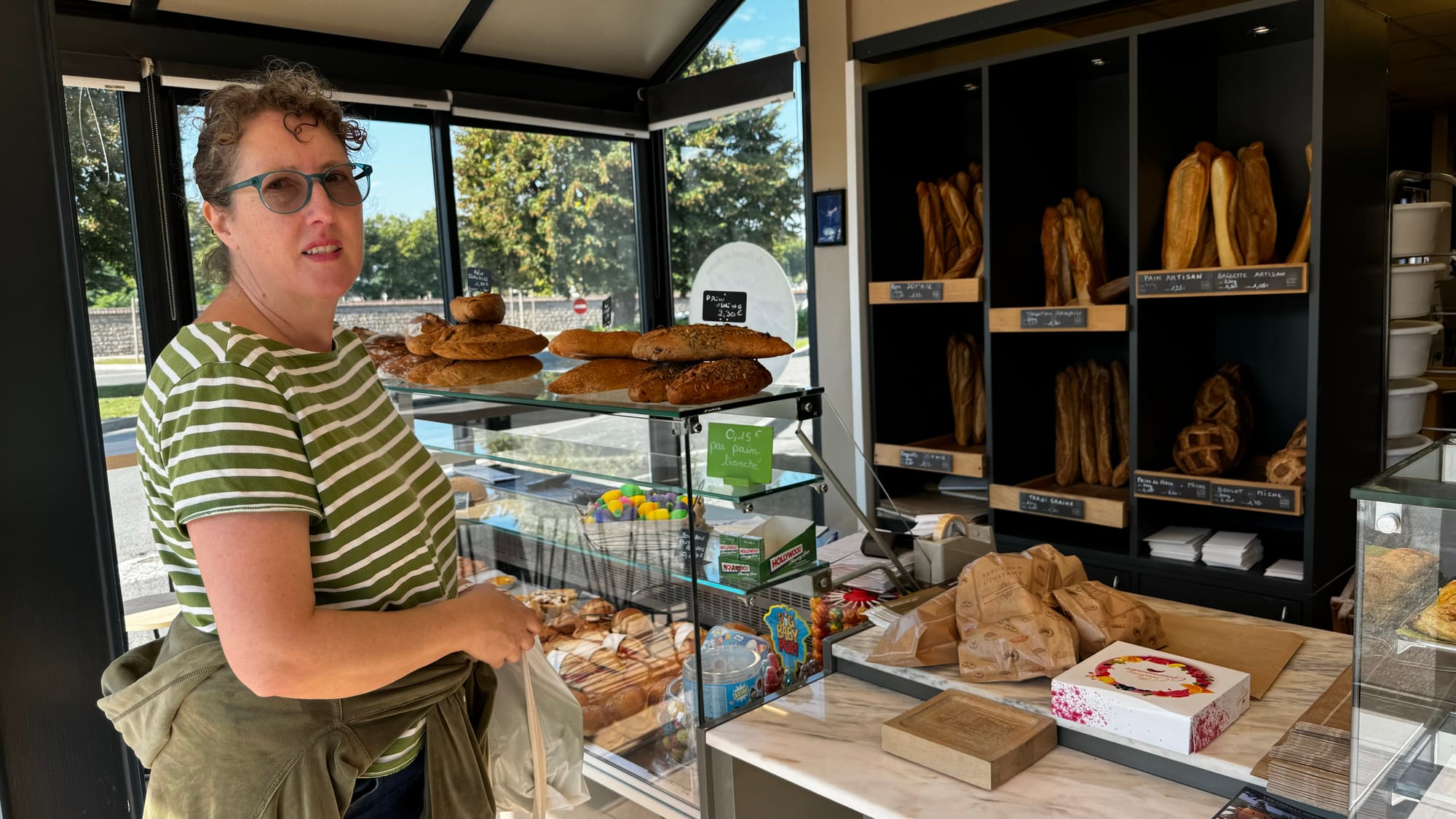
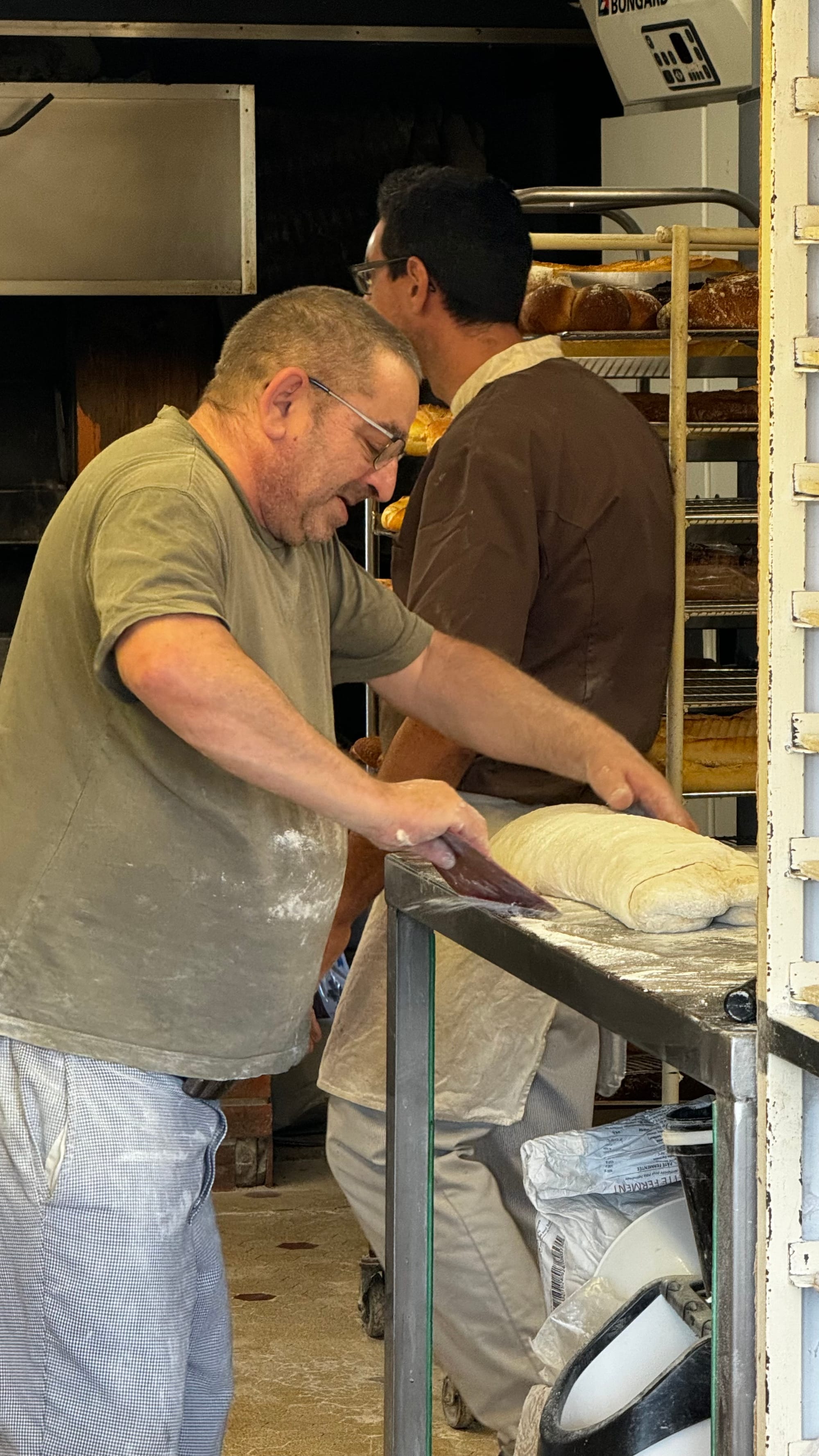
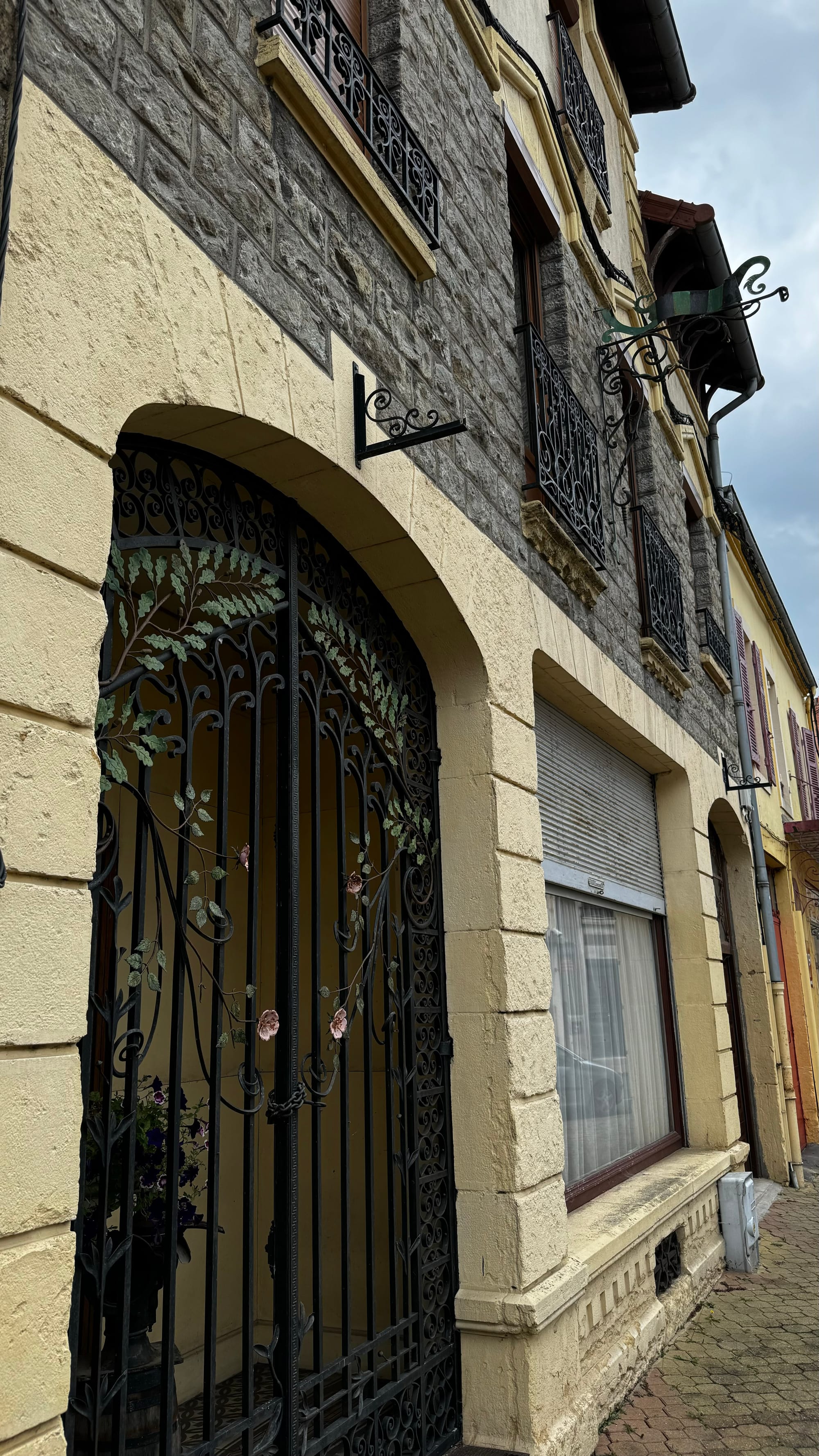
A lovely gift of crémant wine from our Bonnand neighbour, plus scenes underway, and a stop at a boulangerie
Seeing as we made a bigger journey than intended, we decided that on Monday, we'd take it easy, mend the bikes and collect some supplies. We needed a few more things from the hardware store (never-ending, really), which allowed us to work on a few projects. Paul is an ex-heating technician (amongst many other skills), and he set himself the goal of getting the boiler for the radiators working, which he did after many challenges. Clair de Lune now has a "functioning" internal radiator system (although it will need some more work) but we'll have heat underway to Belgium as required. I changed the gearbox oil and worked on several other projects. Gradually, Clair de Lune is in better and better shape.
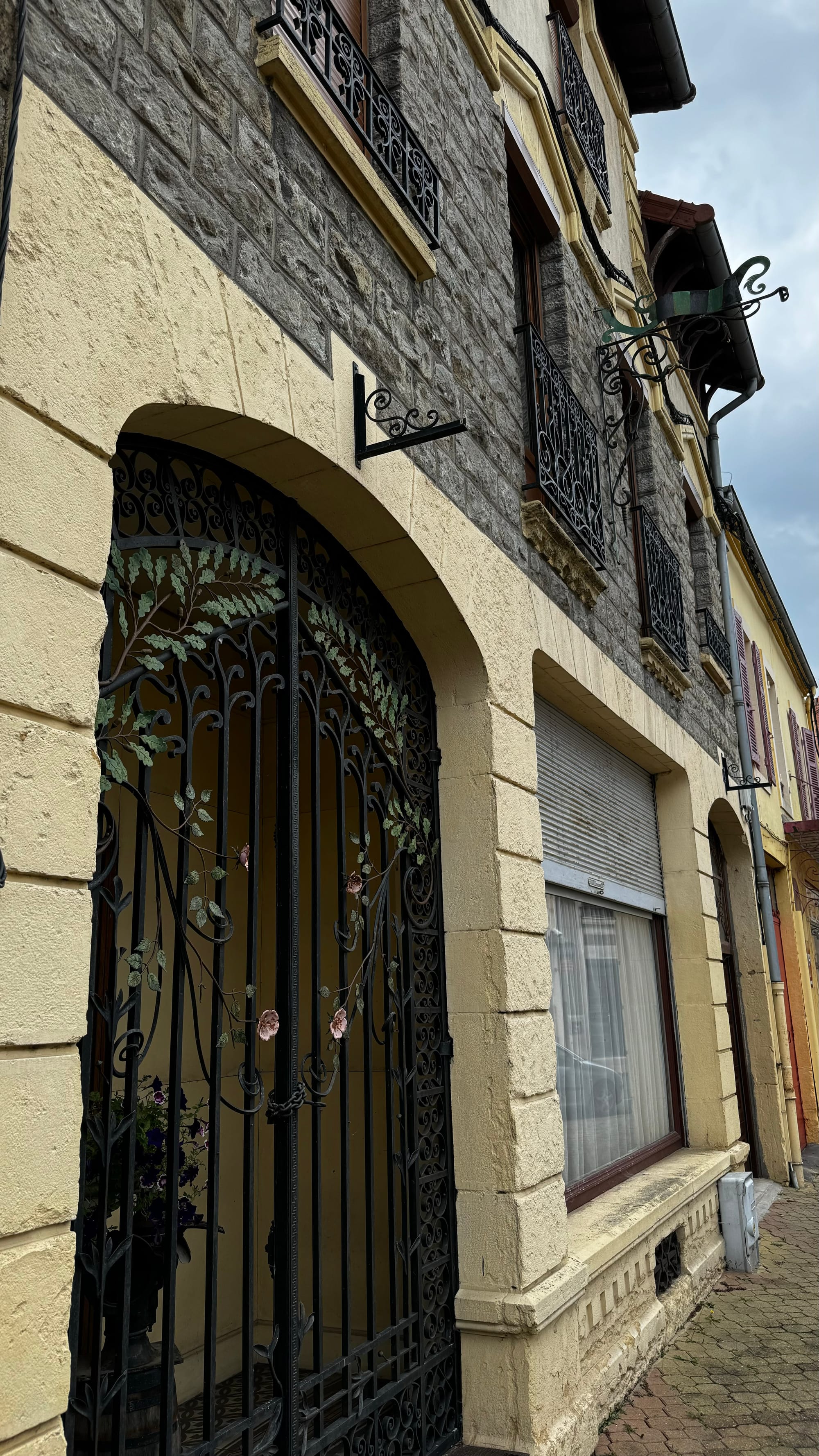
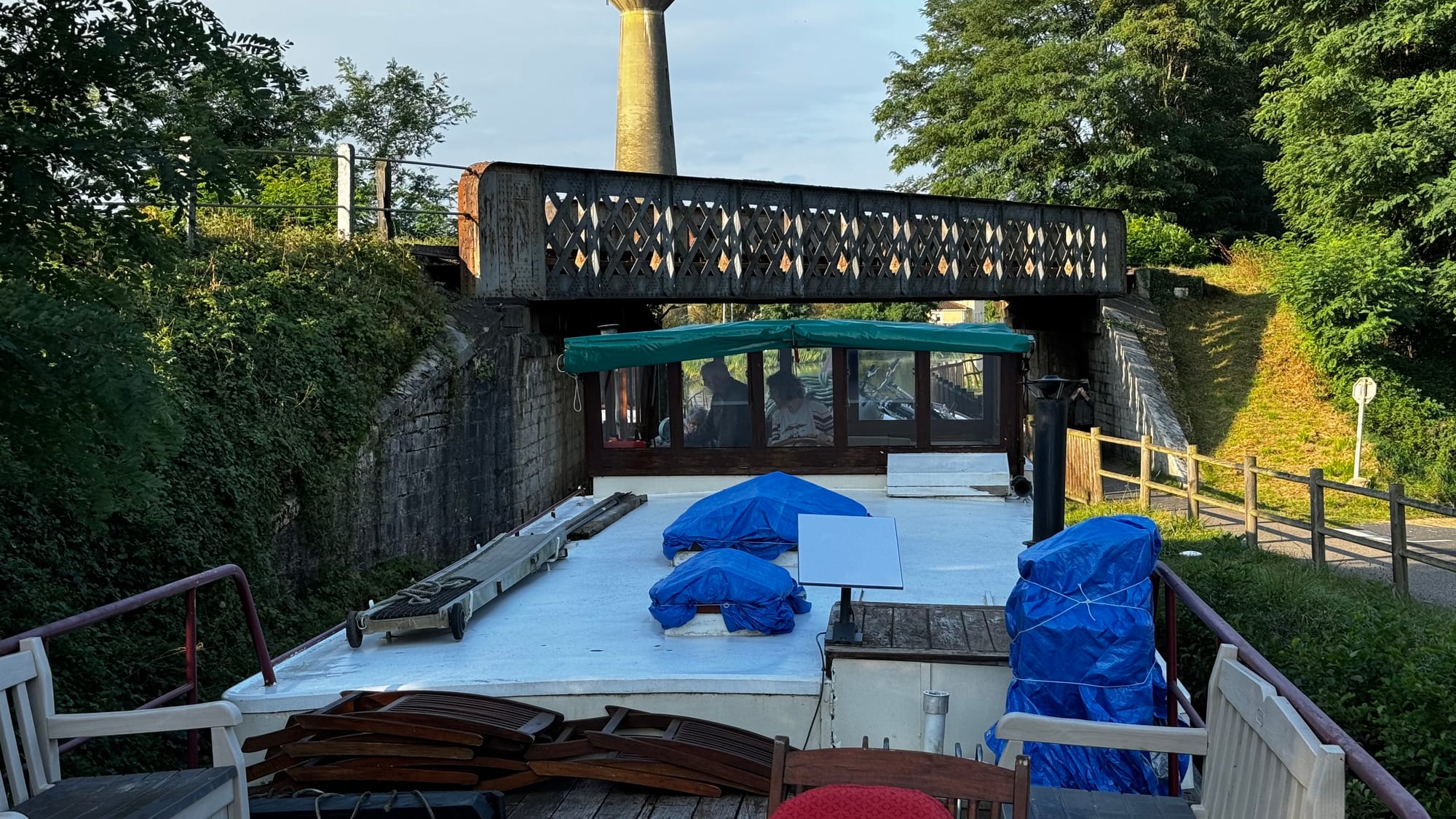
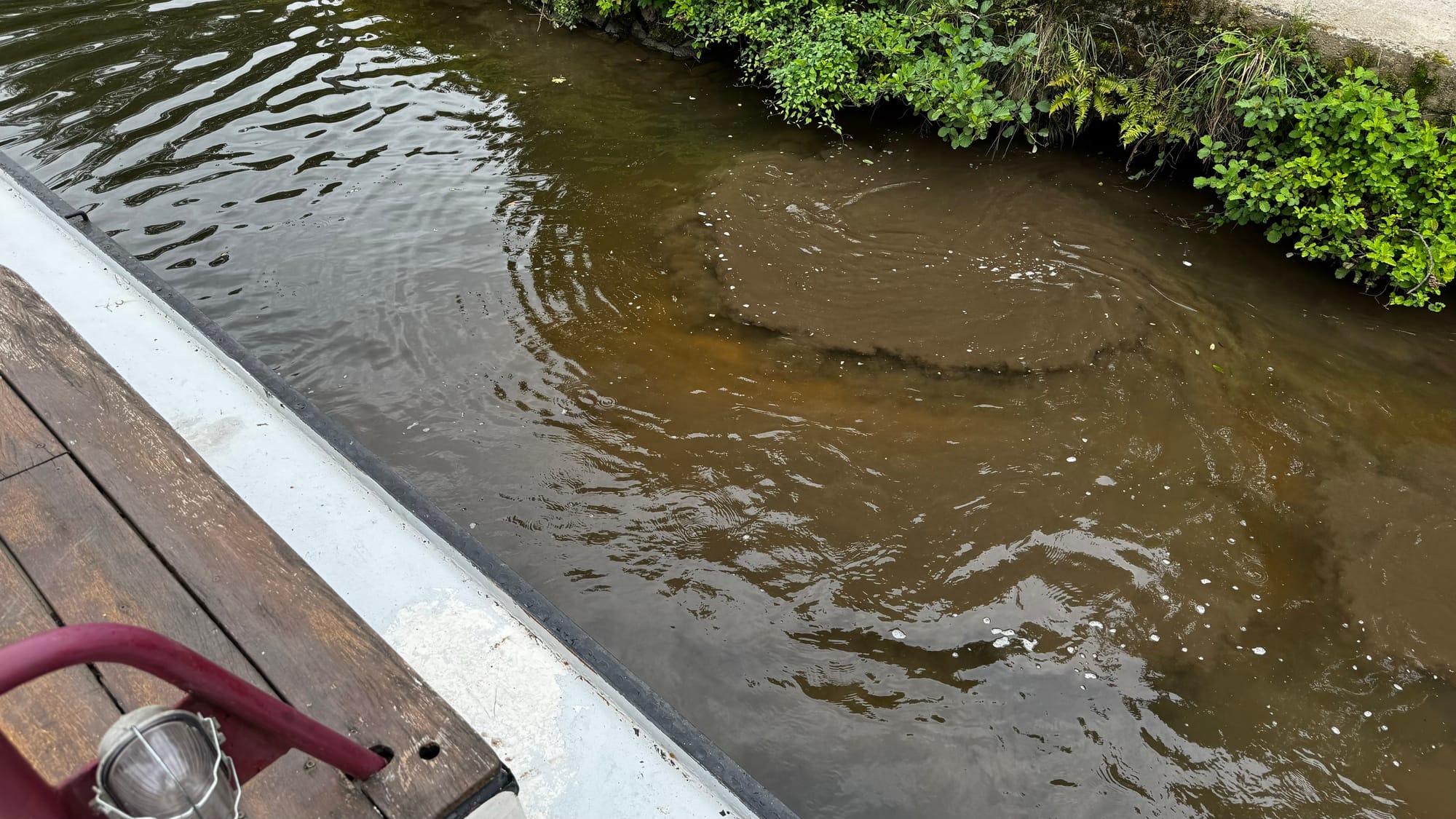
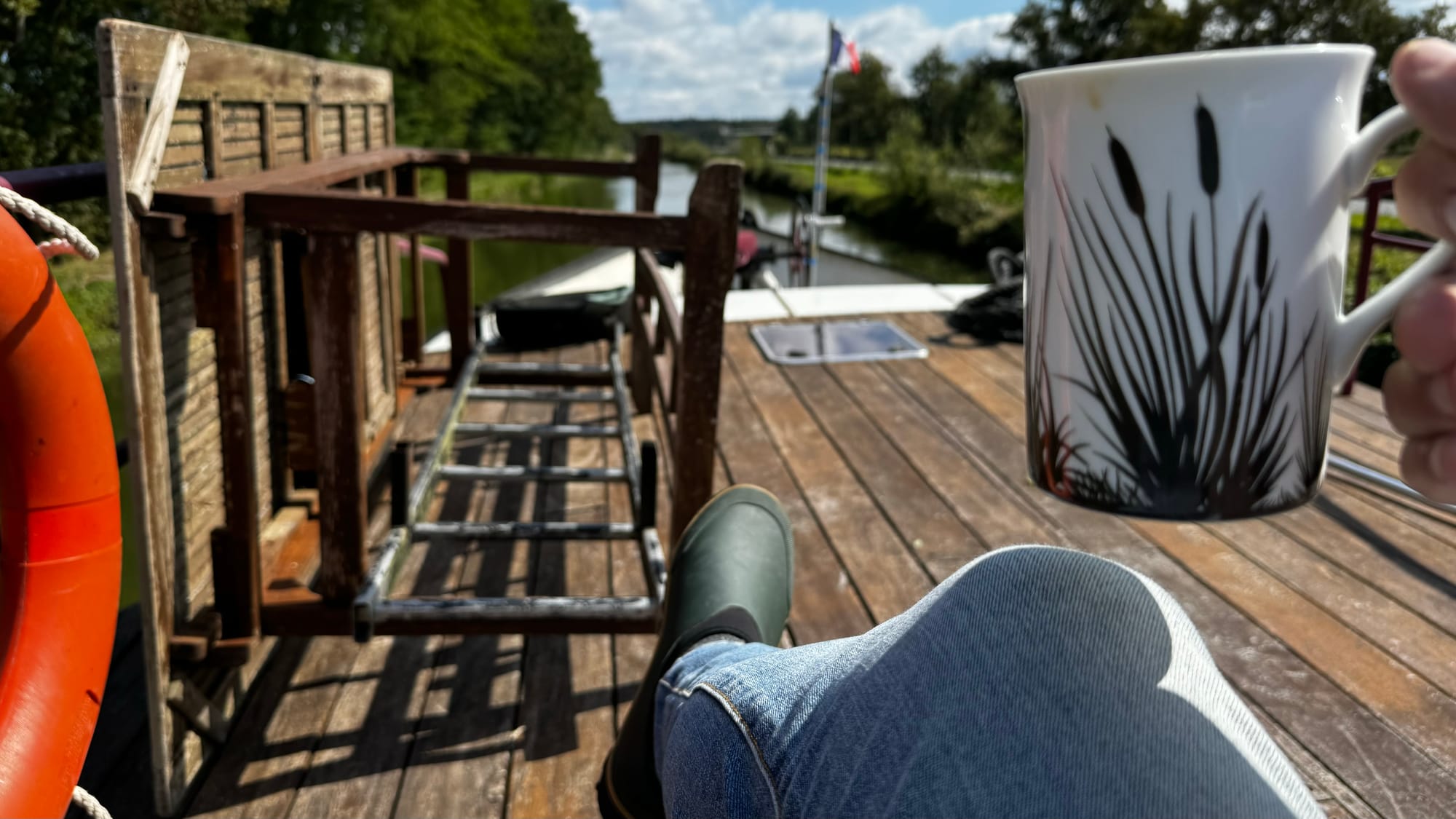
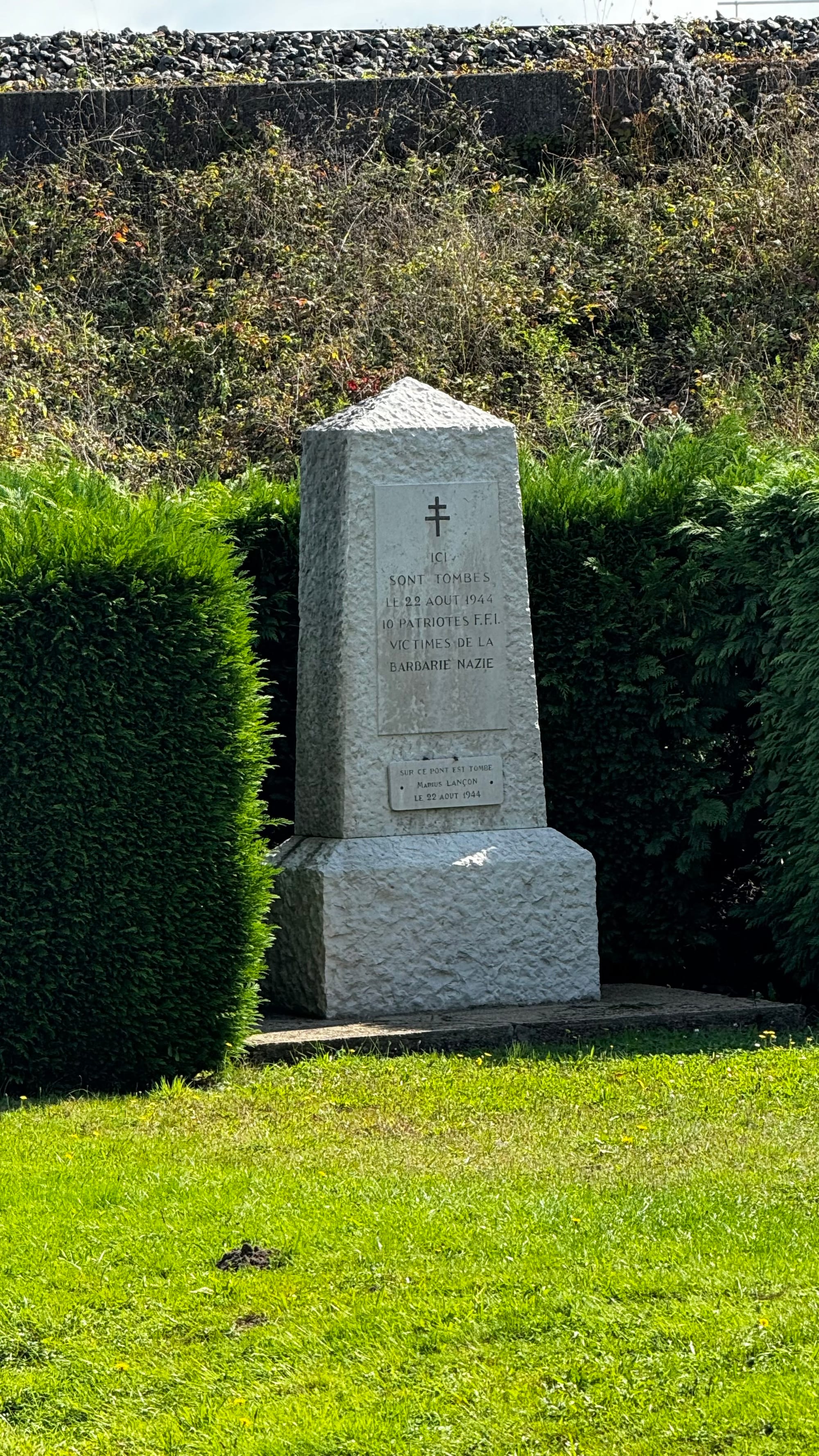
Underway, hitting a sandbank, memorials to victims of World War Two.
Tuesday was a long day of crawling uphill, heading up and up through the various locks. We both had plenty of chances to practice steering Clair de Lune and our French chatting with the lock keepers. We felt very pleased with our progress. We ran onto a sandbank but got off of that okay, and really, it was straightforward. The lock keepers are very helpful. They track which boats are on their section, relay that information forward, and advise where we can dock up for the night.
We stopped at the beautiful town of Génelard, which has a large turning circle and a big old quay. According to the local history signs, over a third of the paving stones in Paris came from here by a barge on this canal—big 38-meter boats that make our 27 meters seem simple. I can't imagine how they did it.
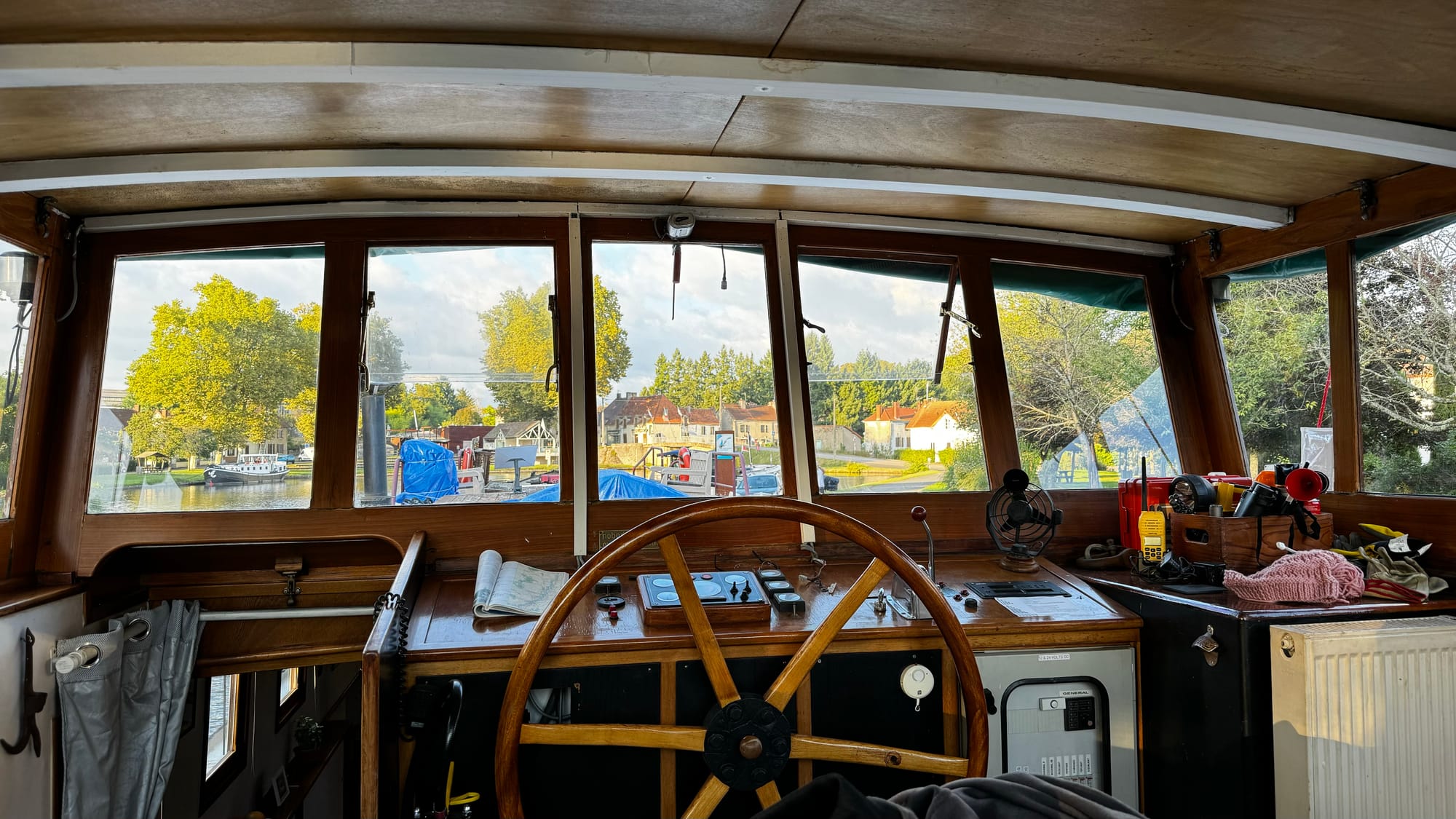
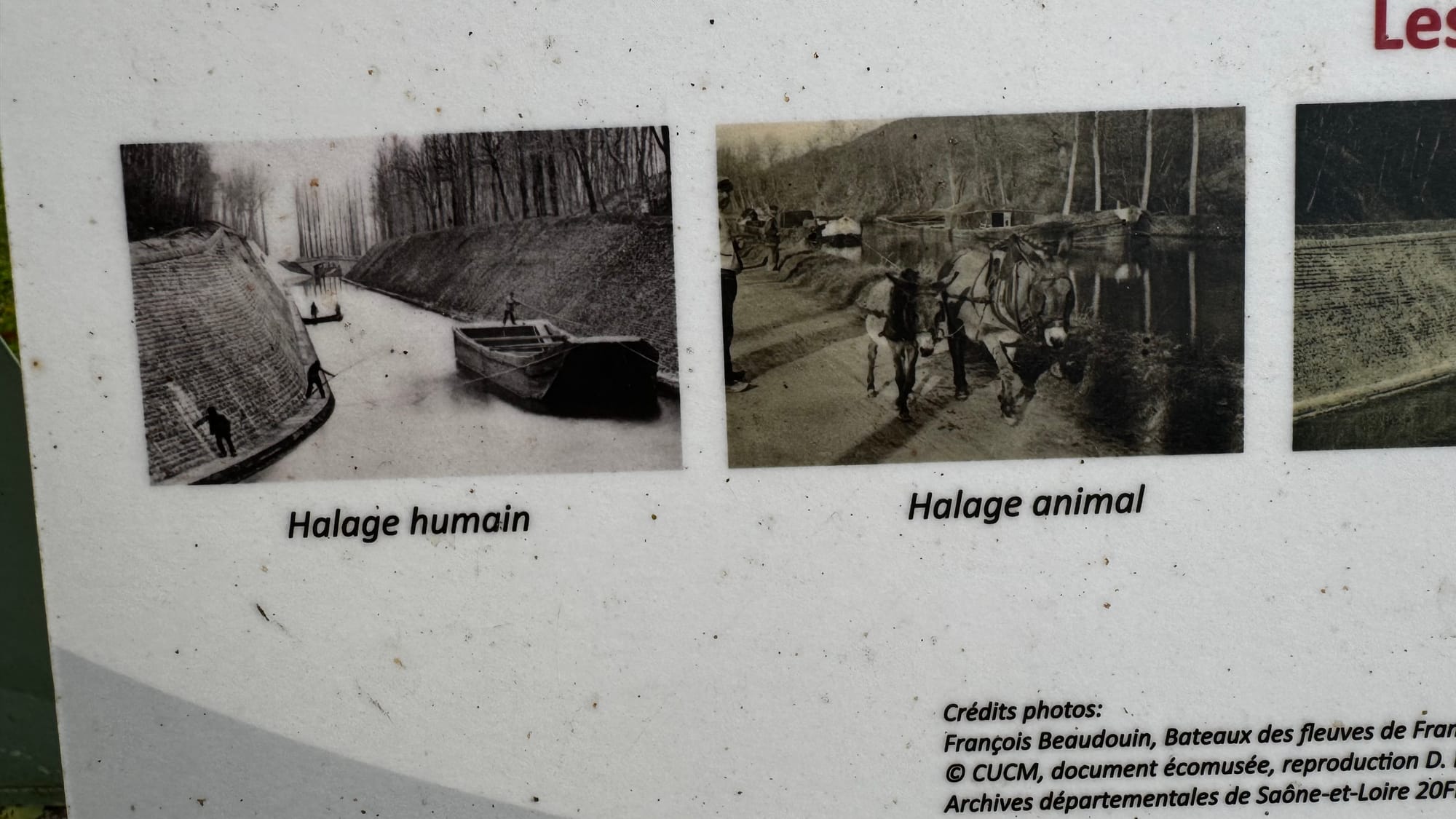
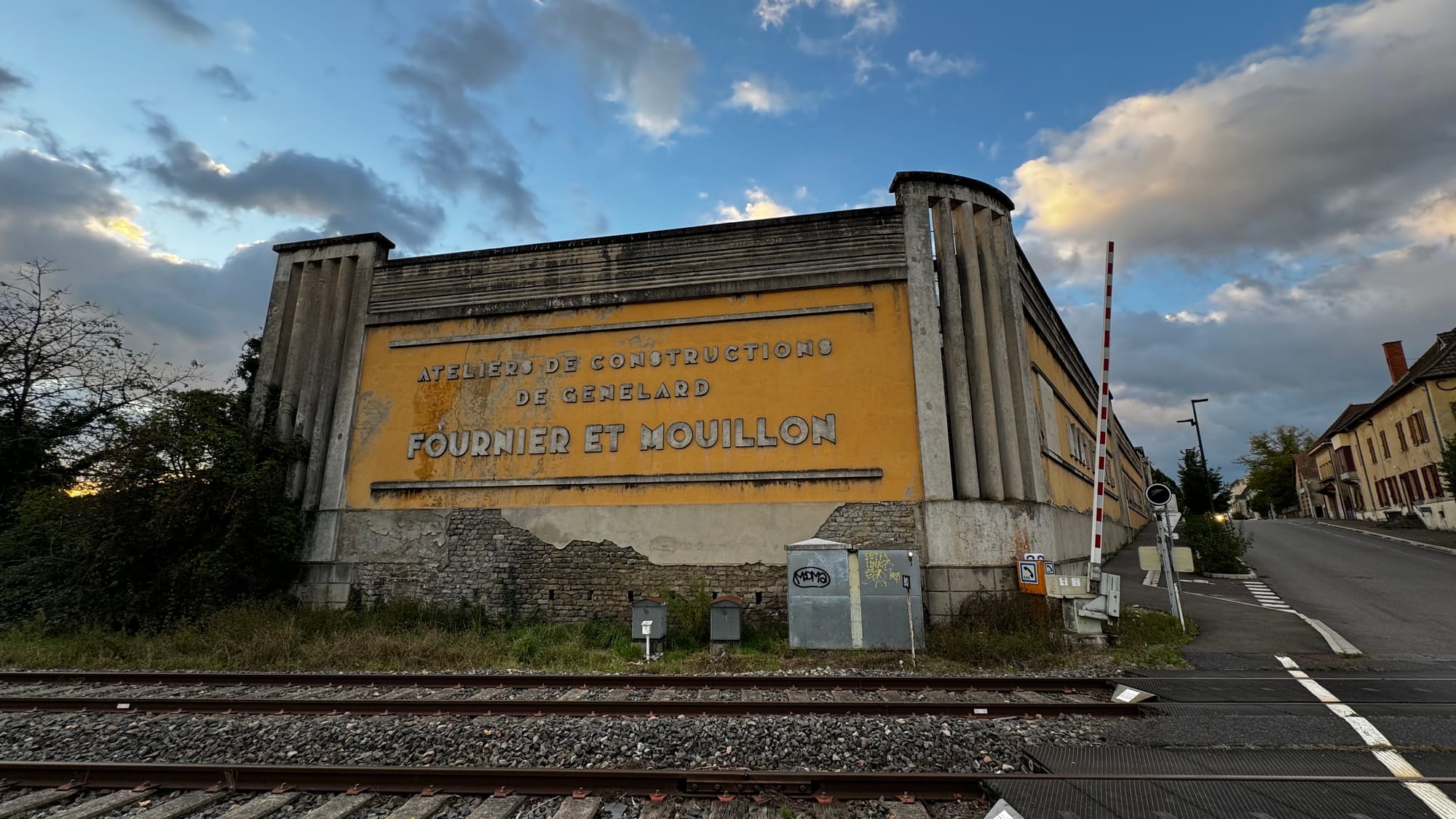
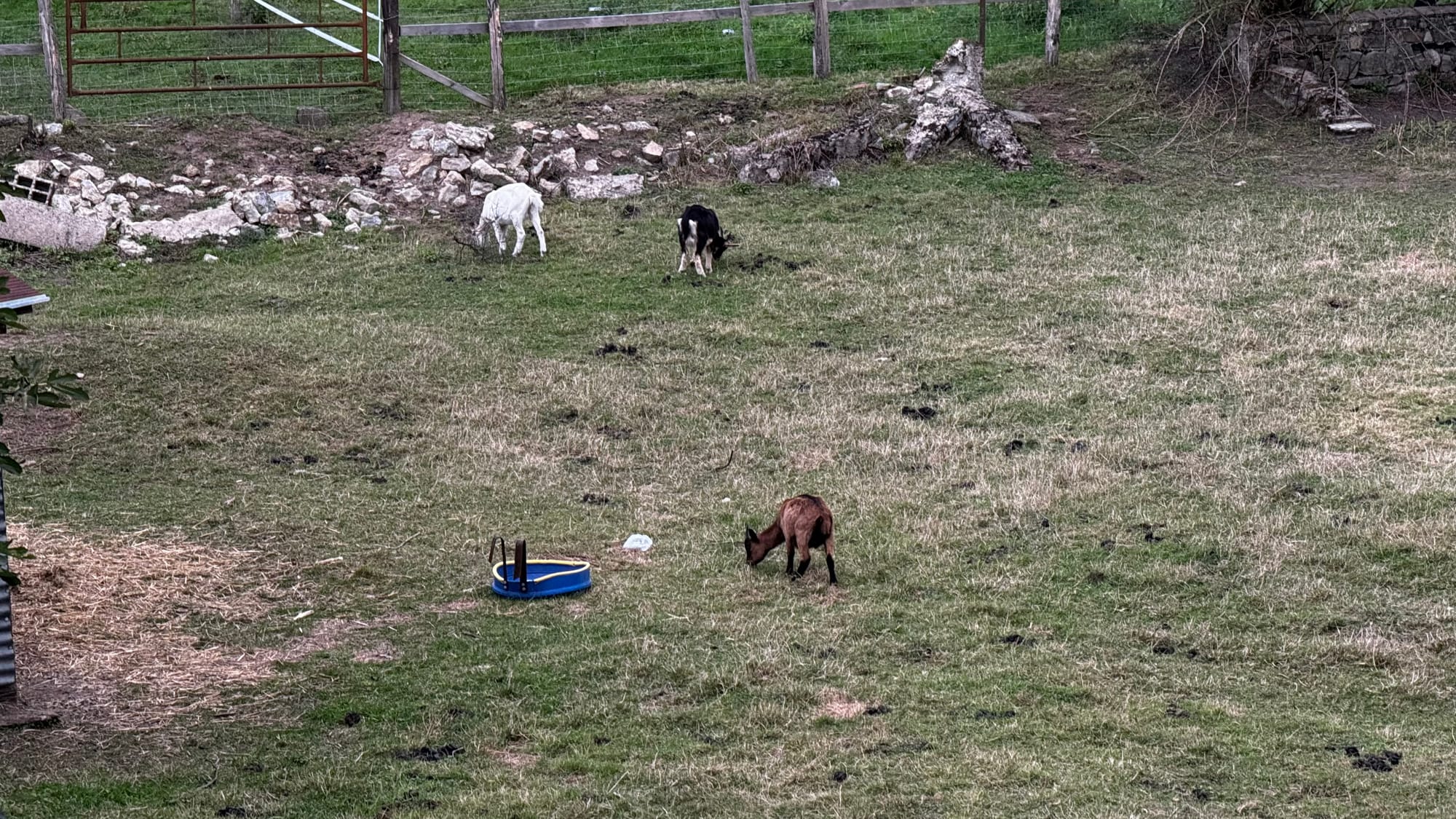
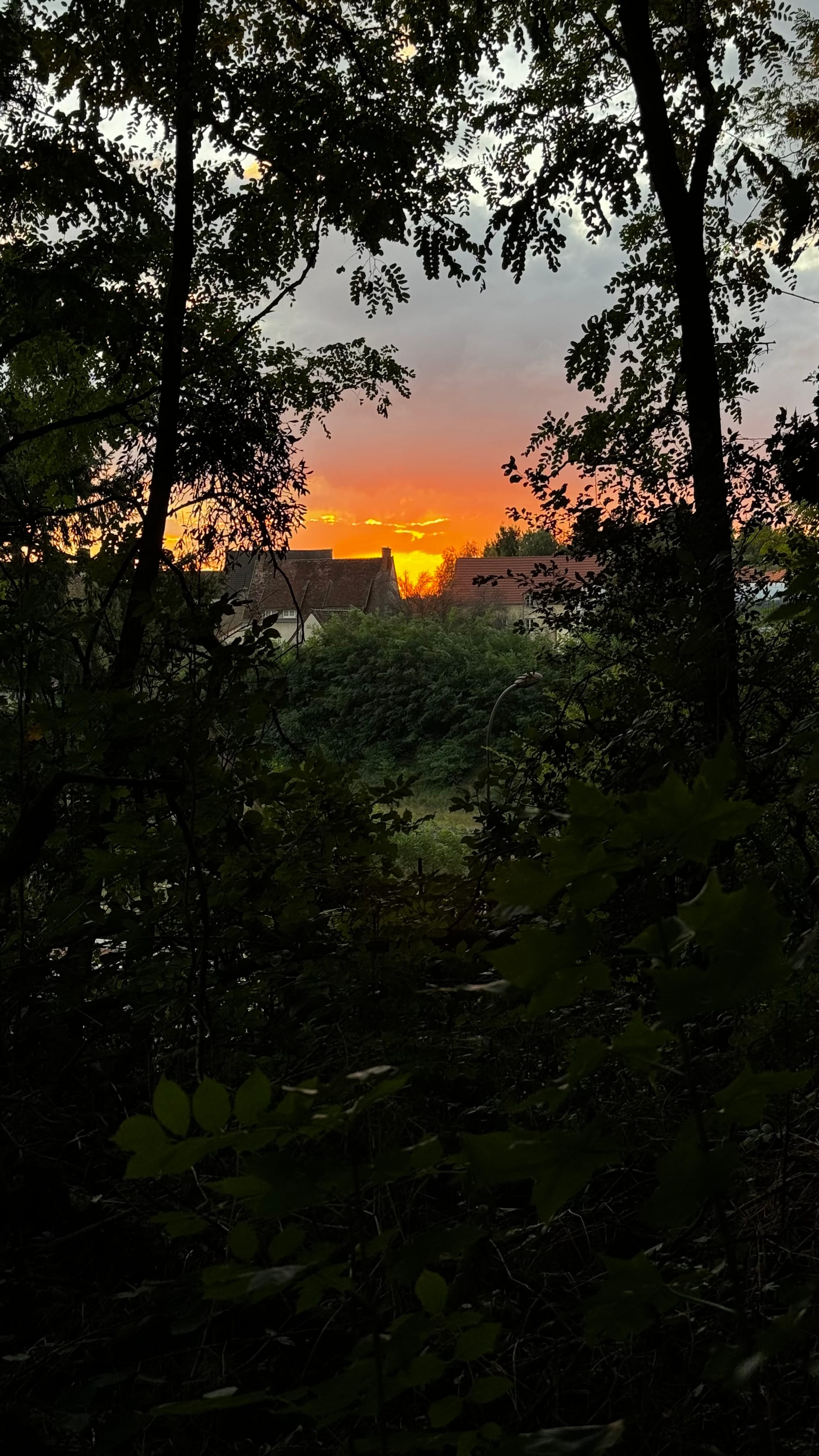
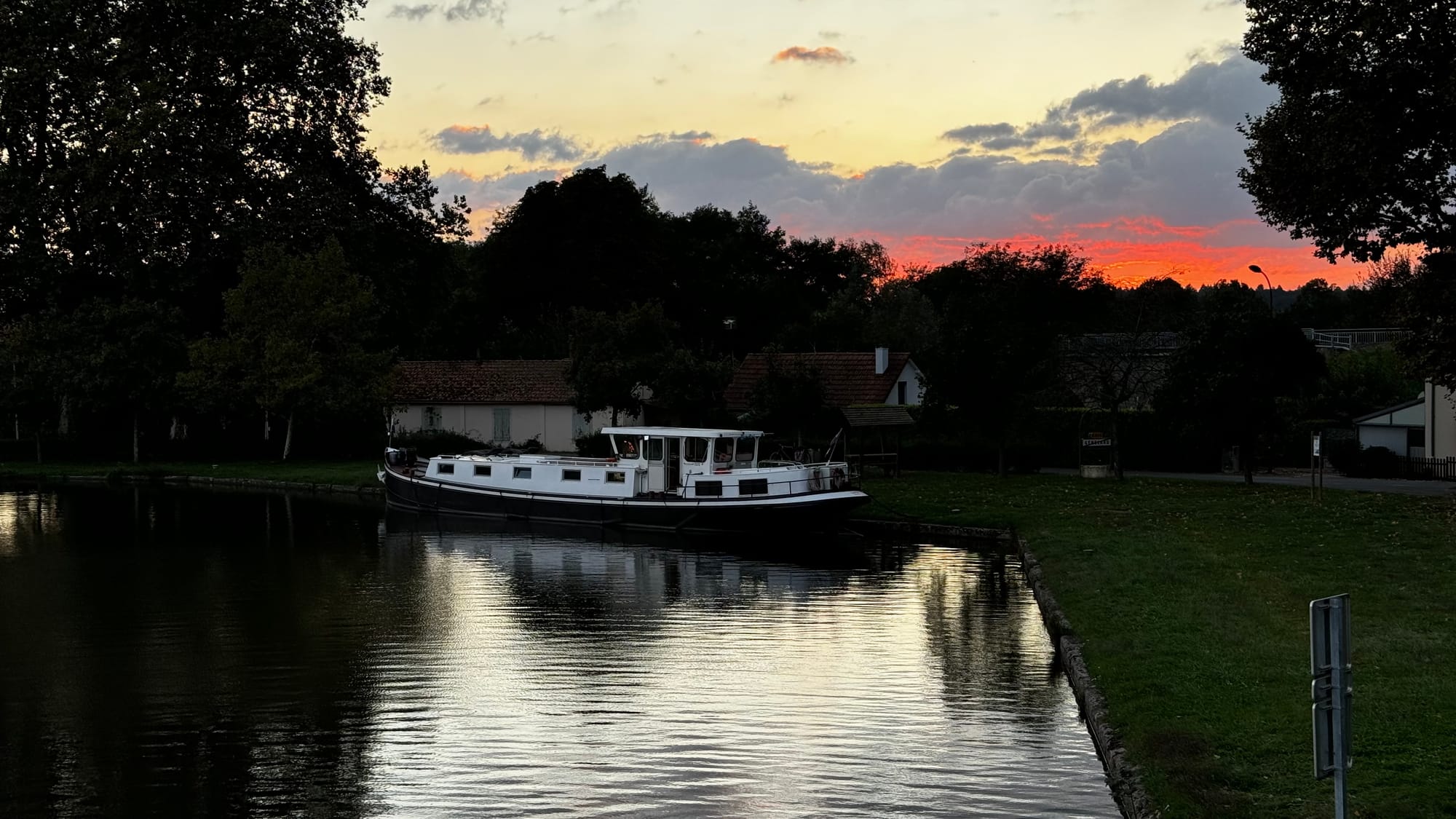
Génelard information sign showing people and horses pulling barges
Wednesday was a day with lots of locks again, and we pushed on until we eventually decided to moor for the night alongside a road just before a lock. One highlight Wednesday was the large E. Leclerc Supermarché on the canal, where we stopped and shopped for more food and some basics.
There was a meeting with the architects to review our contract, meet the last team member, and answer many questions. On Thursday, we also did the first revision with the branding team. All this process is going well, we just need a bit more time to get responses in place.
That night we improvised, using the safety barrier of the nearby road to secure Clair de Lune, and attracted lots of friendly toots from passing motorists. The traffic soon died down, and we had a peaceful night. We spent the evening trying to learn how to splice eyes into our new four strand lines. It is an ongoing project that has not yet achieved much success!
Thursday morning, I connected the dedicated engine starter batteries. Before the engine had been starting off the house batteries. Slowly, Clair de Lune continues to improve. This simple change seems to have stabilised our charging underway a little, too. Then we crossed the top of the hill! As we headed uphill, the water behind us ran toward the Atlantic Ocean. Once we crossed the hill, the water started running toward the Mediterranean. As friends pointed out, that's the wrong direction for Belgium! But we must make the Saône River to head upriver in the right direction.
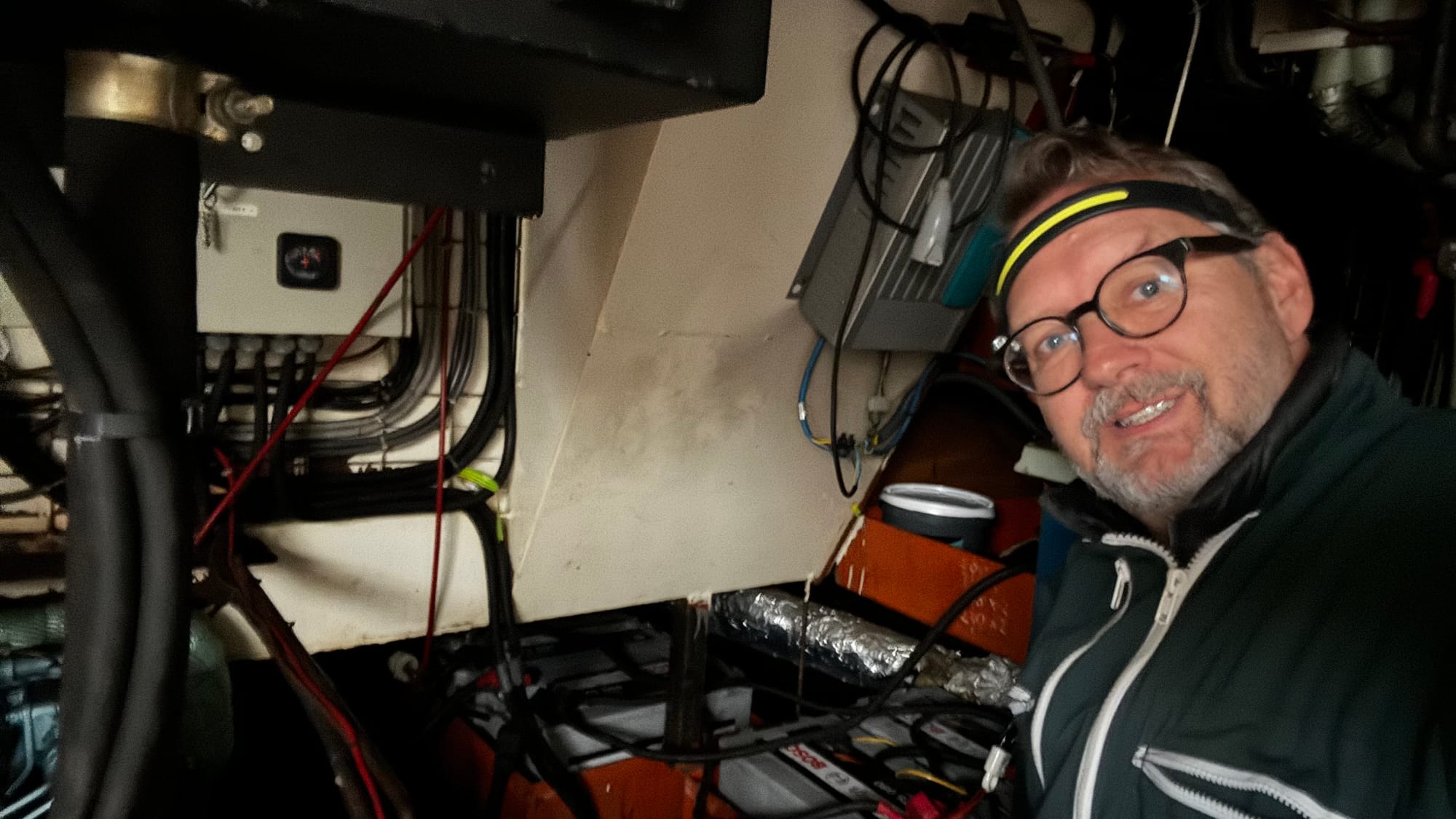
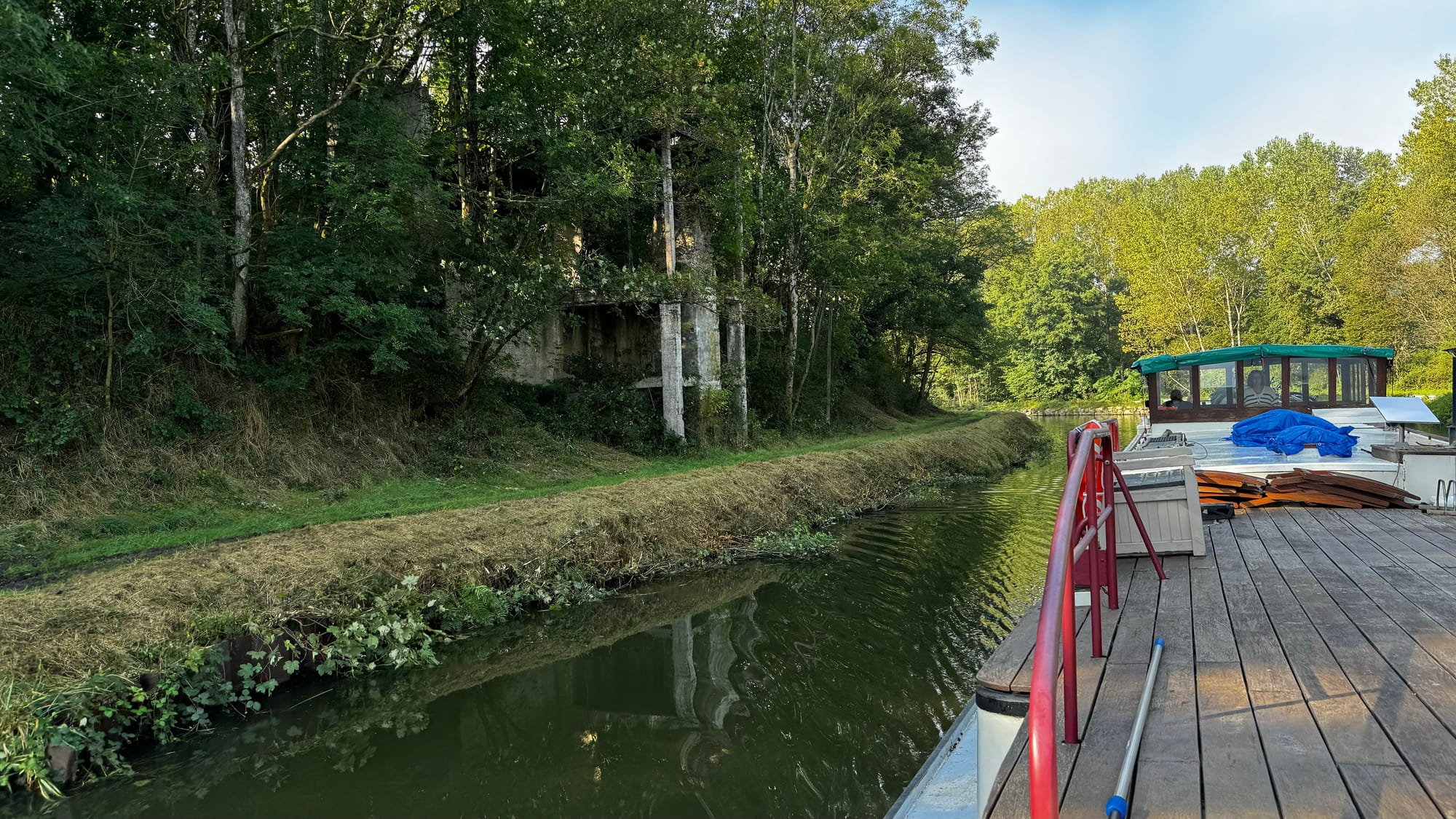
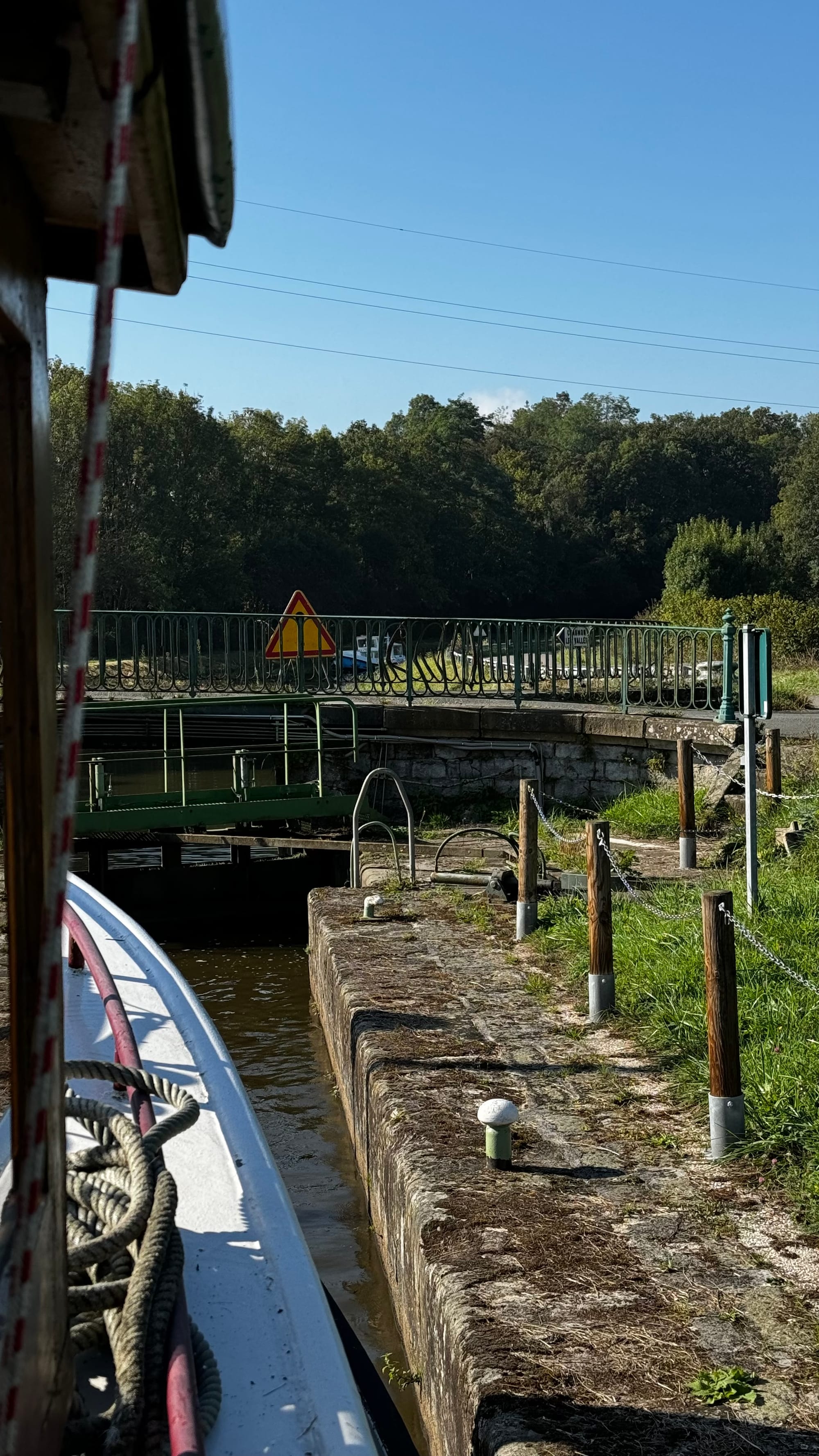

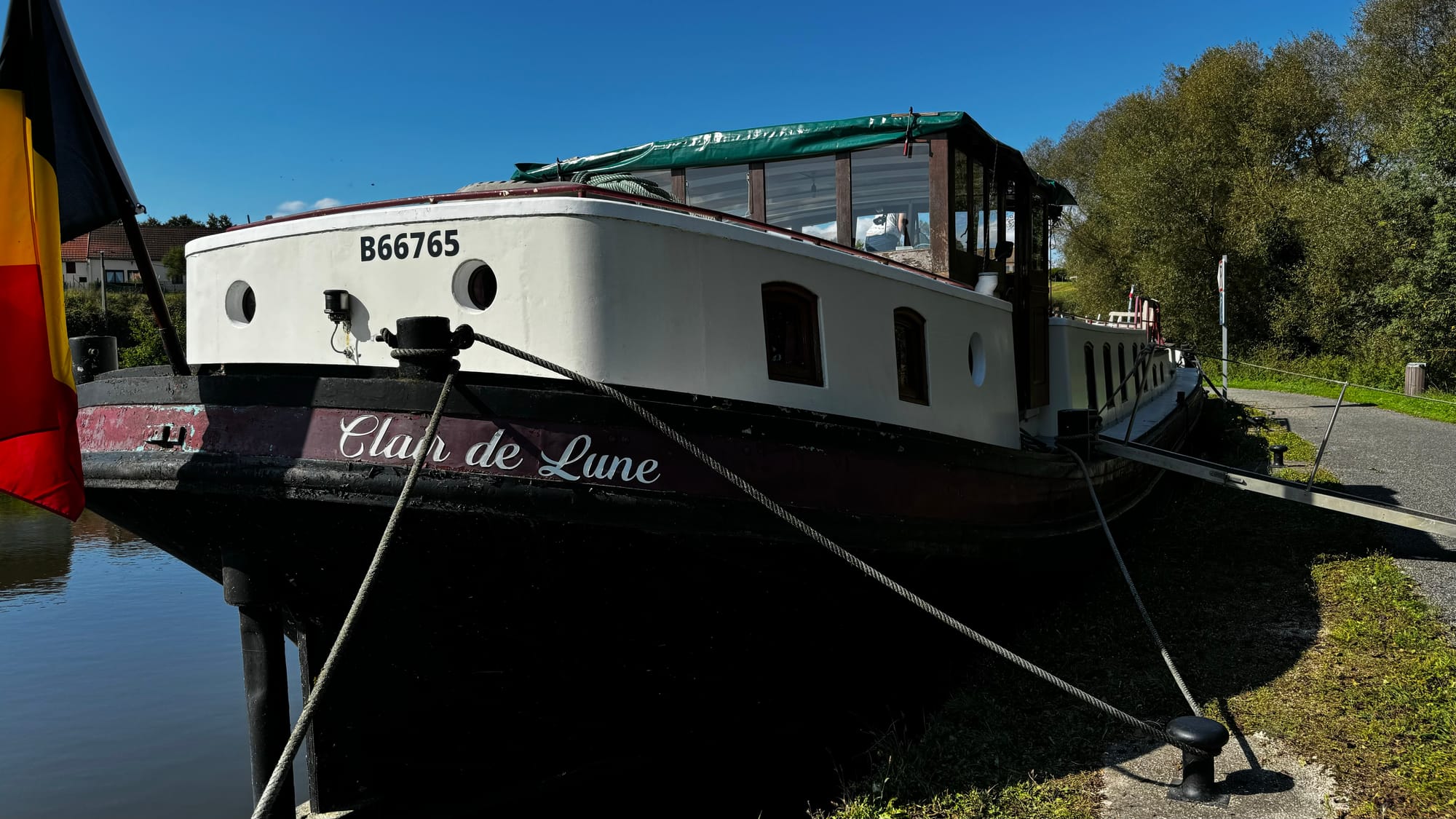
Rewiring the batteries, pole on the bow to indicate our height, another lovely mooring
We had a successful day without too much drama. The lockkeeper advised us to moor at St Julien as there was nothing further on. He kindly took Paul to the local boulangerie in his car. We did more chores, sawing up the wood we'd brought from Bonnand, and cleaning the lichen and slime off the prow. This barging business is hard work and often very dirty.
This brings us to Friday, the most dramatic day we'd had underway. The canal narrowed significantly, and on one occasion, the stern got stuck in silt. We had to move three of us up to the bow, which lifted the stern just enough that we could get free.
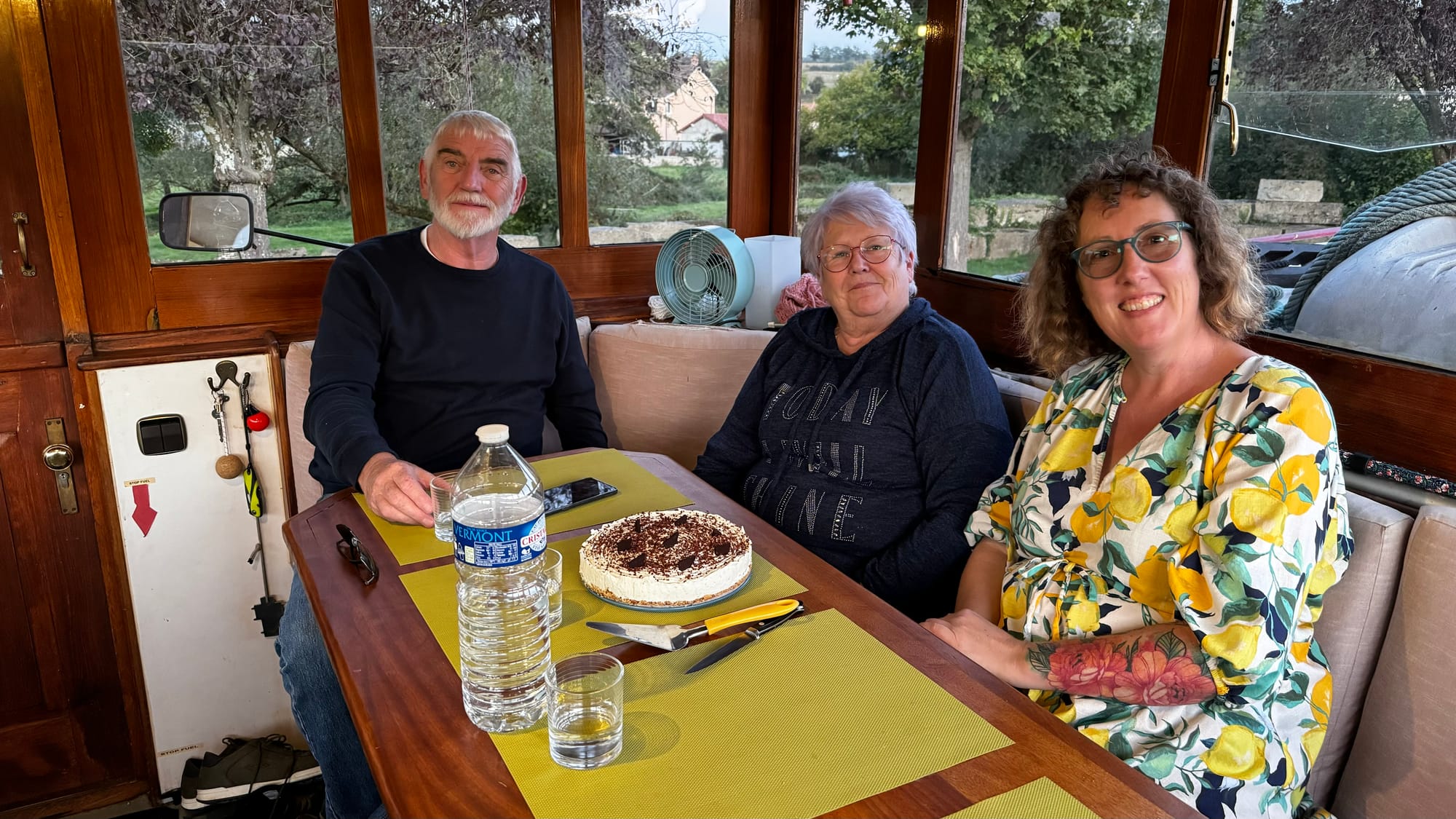
From there, everything continued well, with lots of deeper locks as we headed further downhill. Then, it was a disaster.
The physics are simple enough. A deep lock holds a huge volume of water. It empties quickly into the canal section below (called a pound). When the pound is short before the next lock, the water hits the lock and bounces back—literally a wave on the pound that can lift the boat by 5 centimetres.
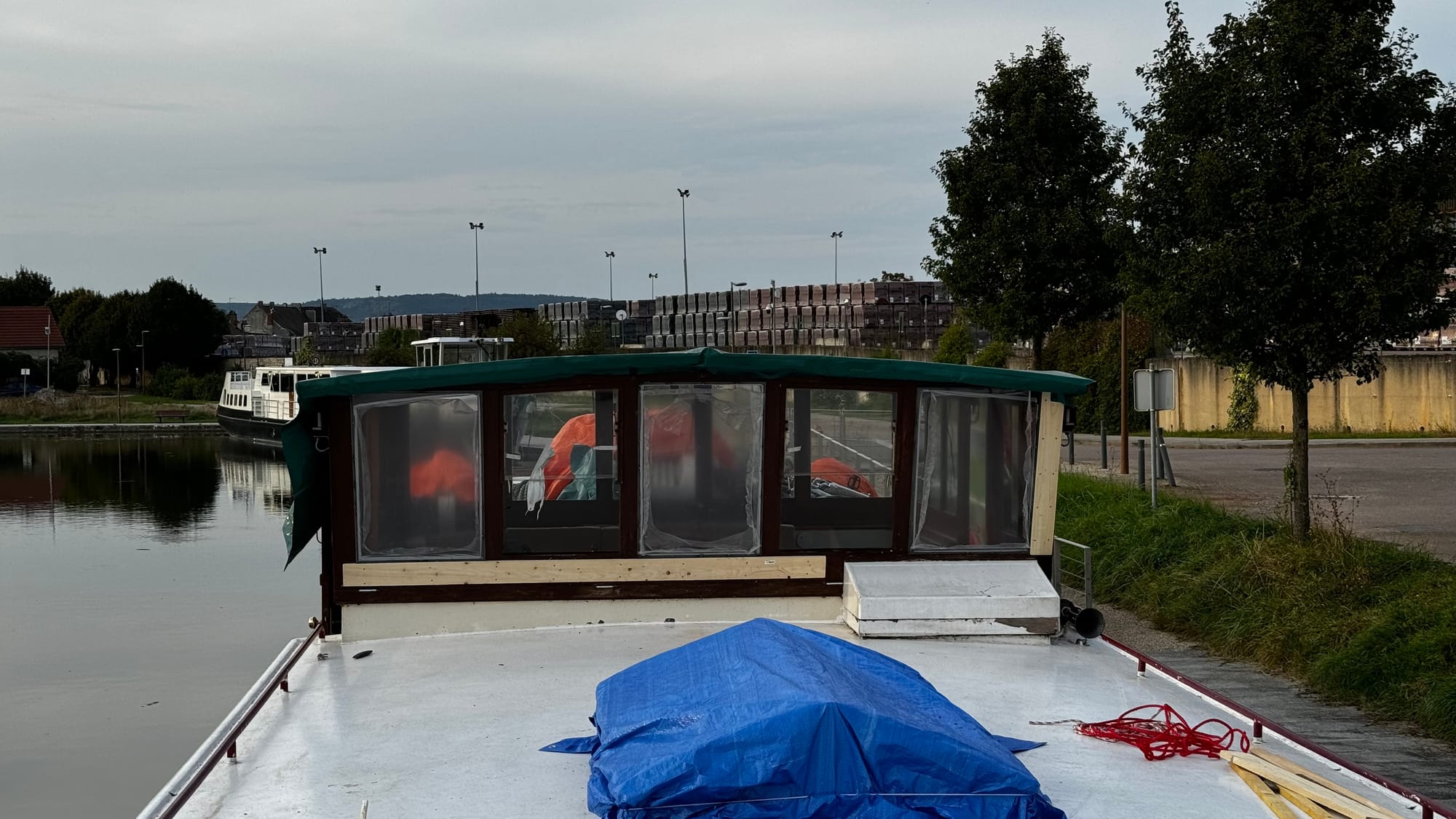
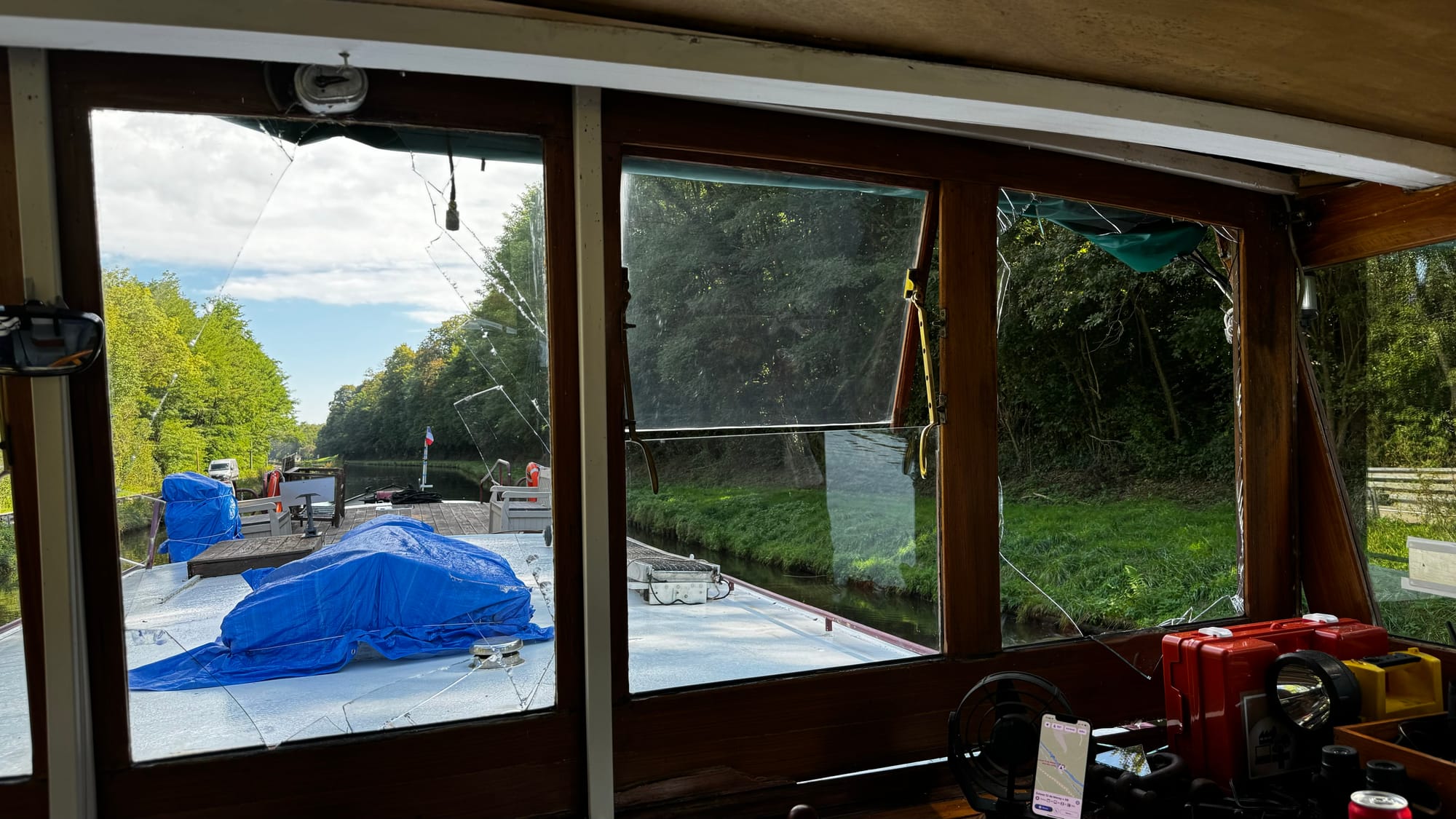
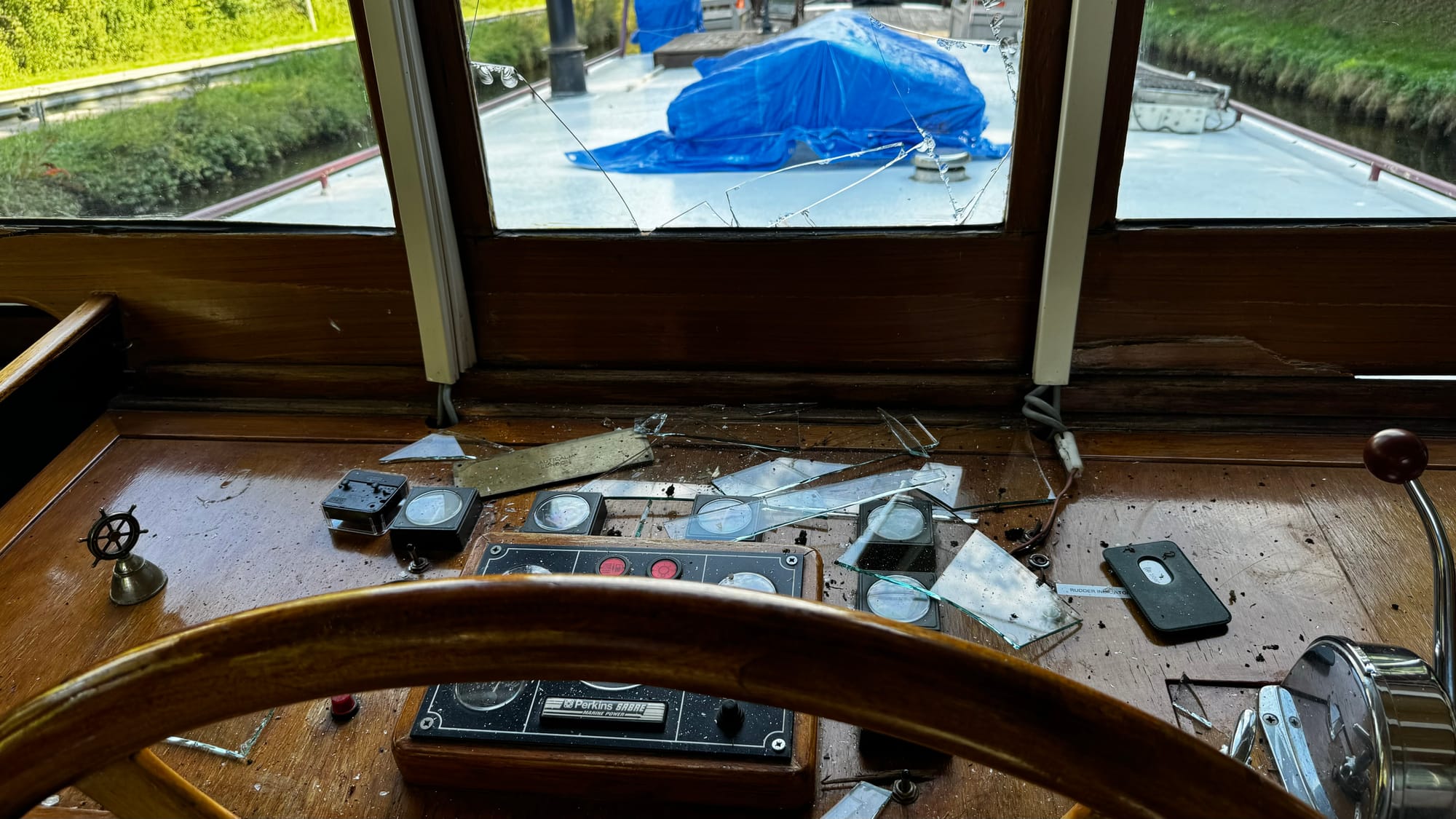
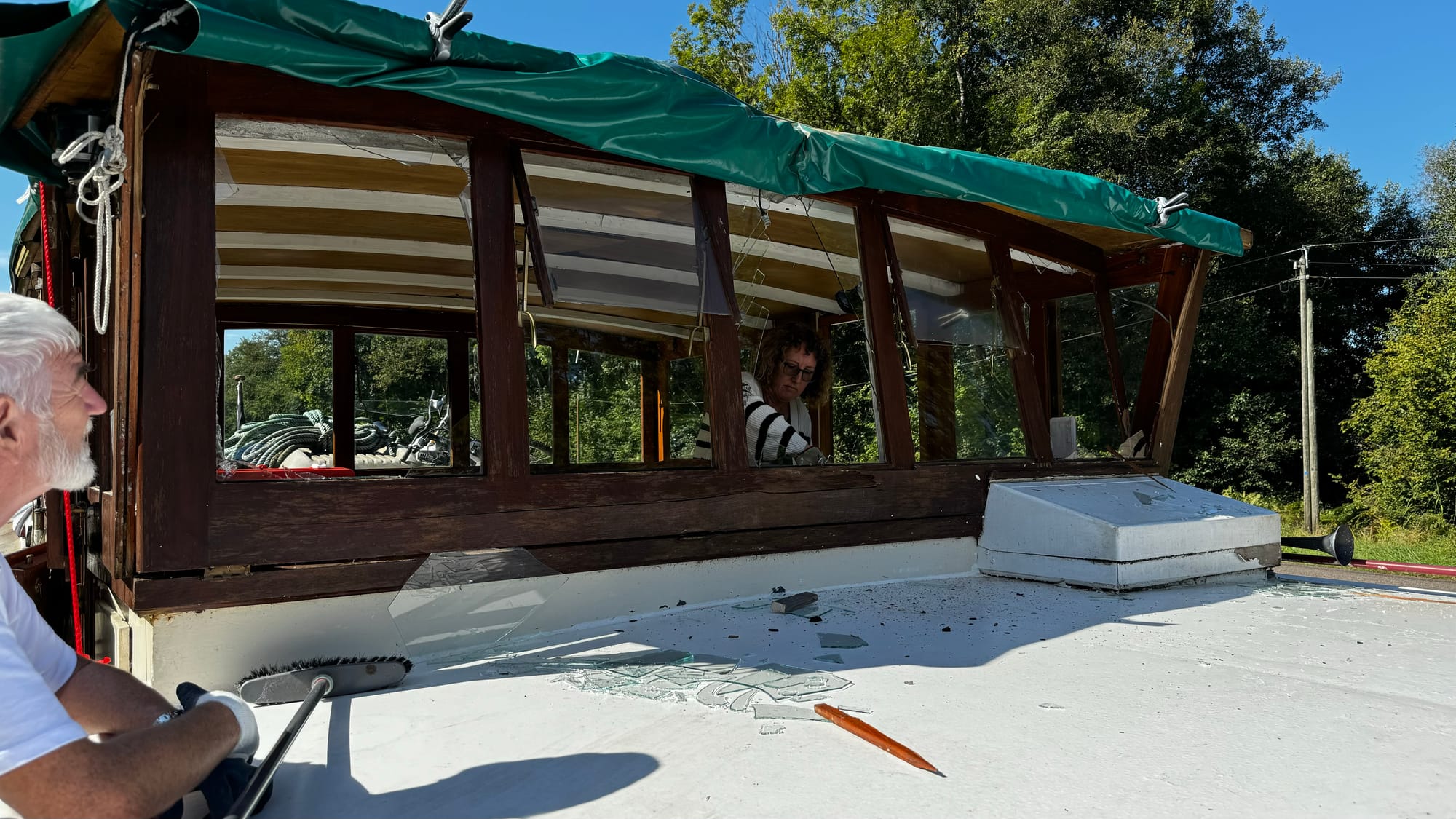
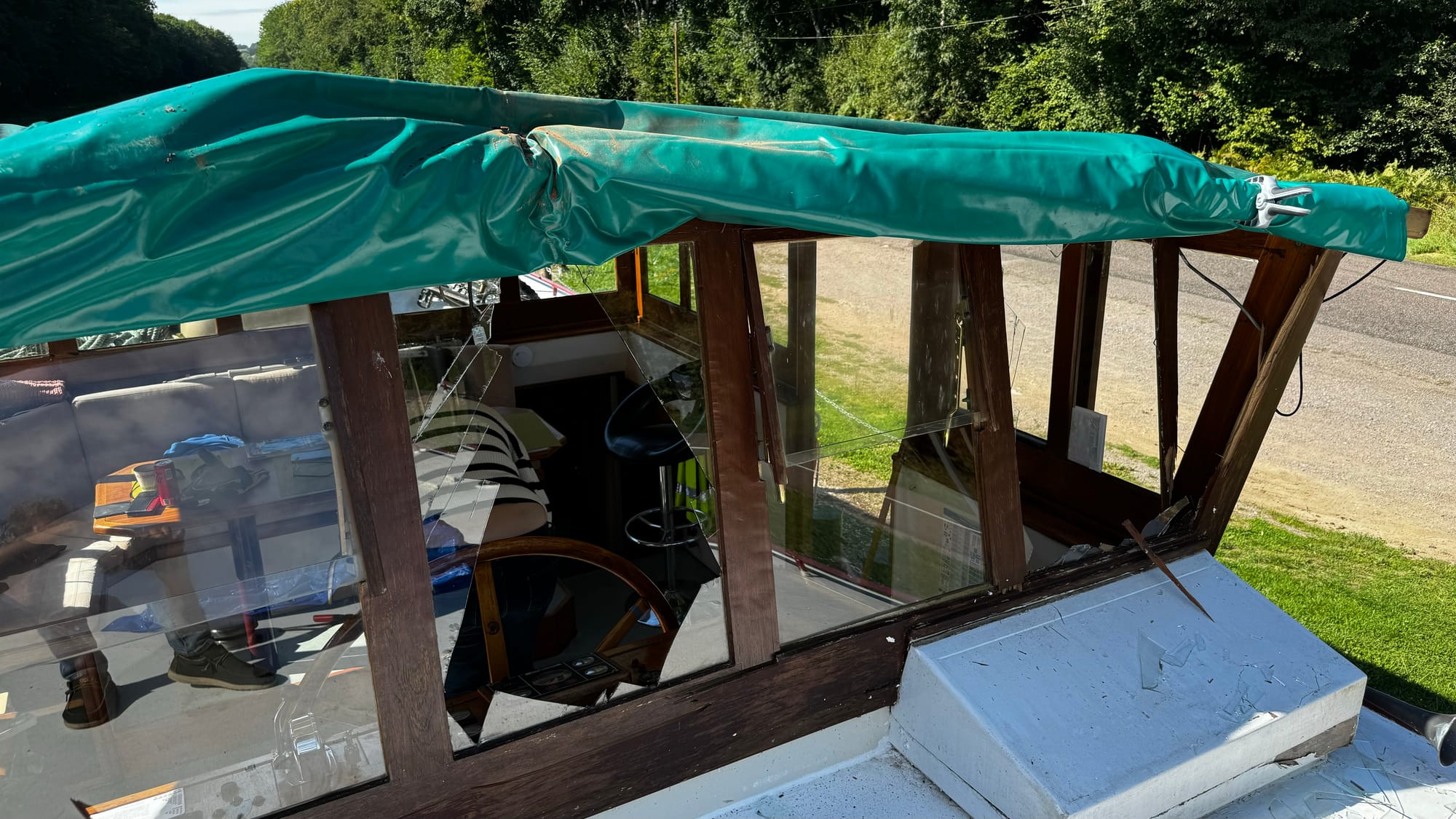
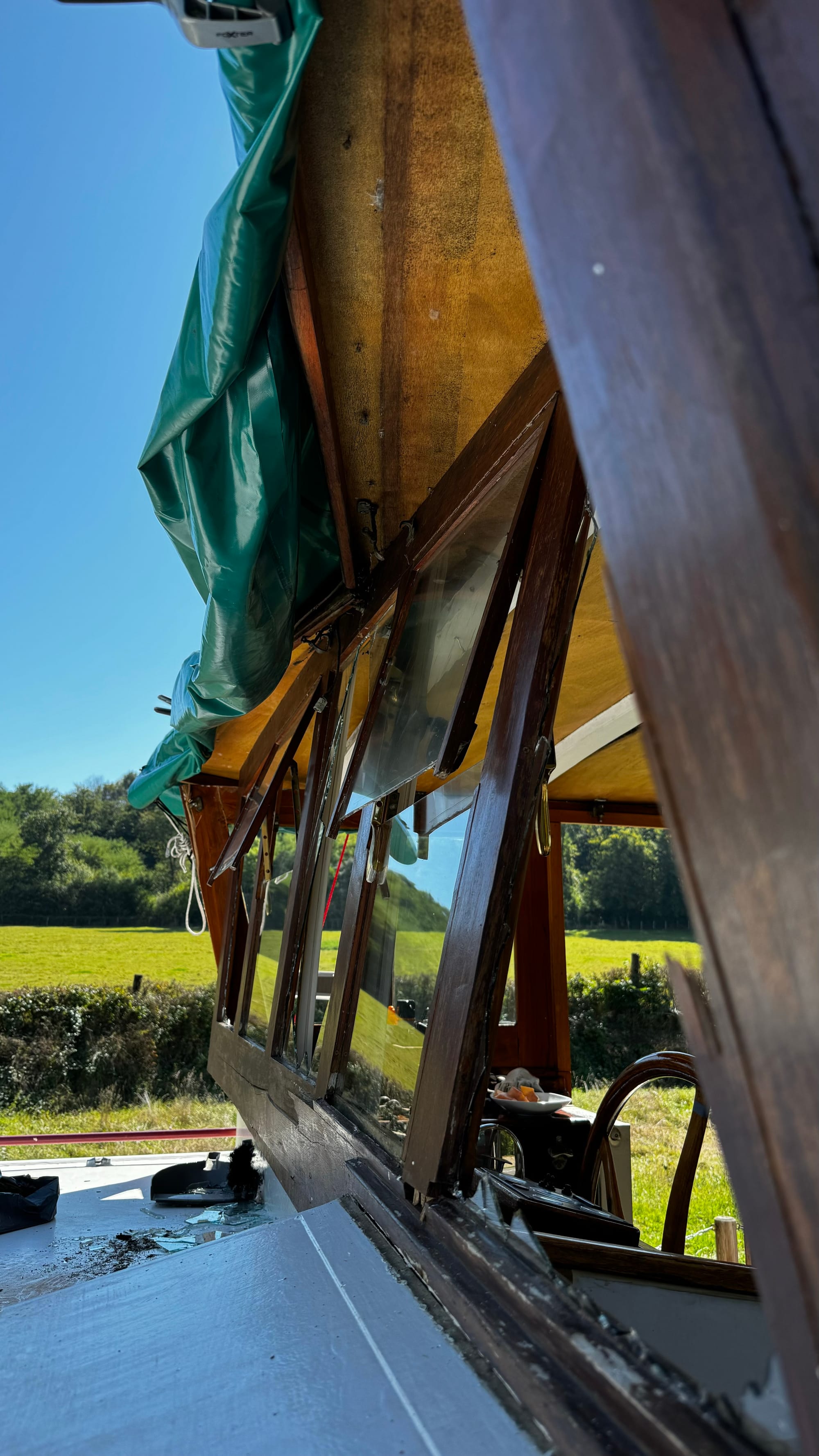
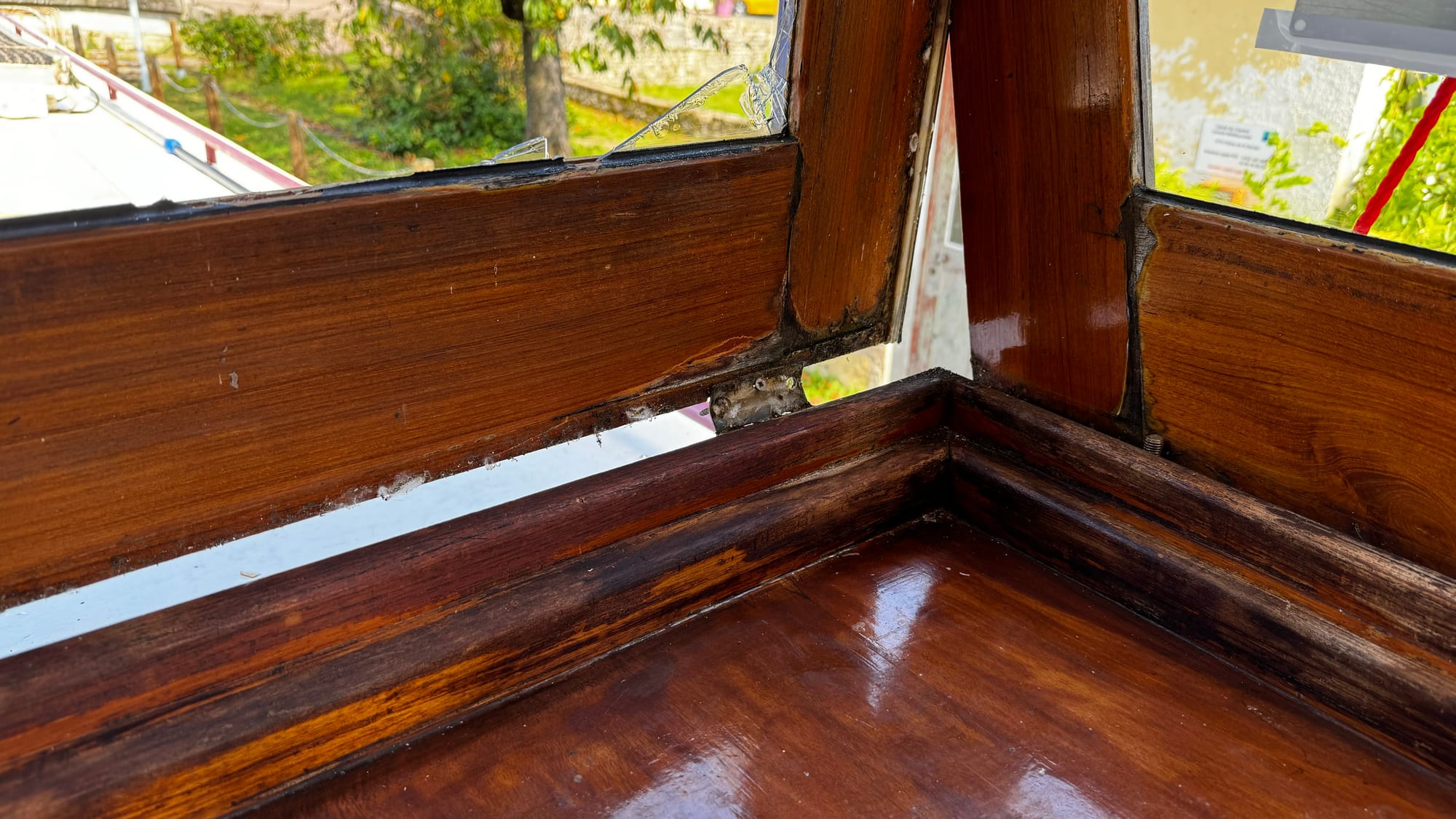
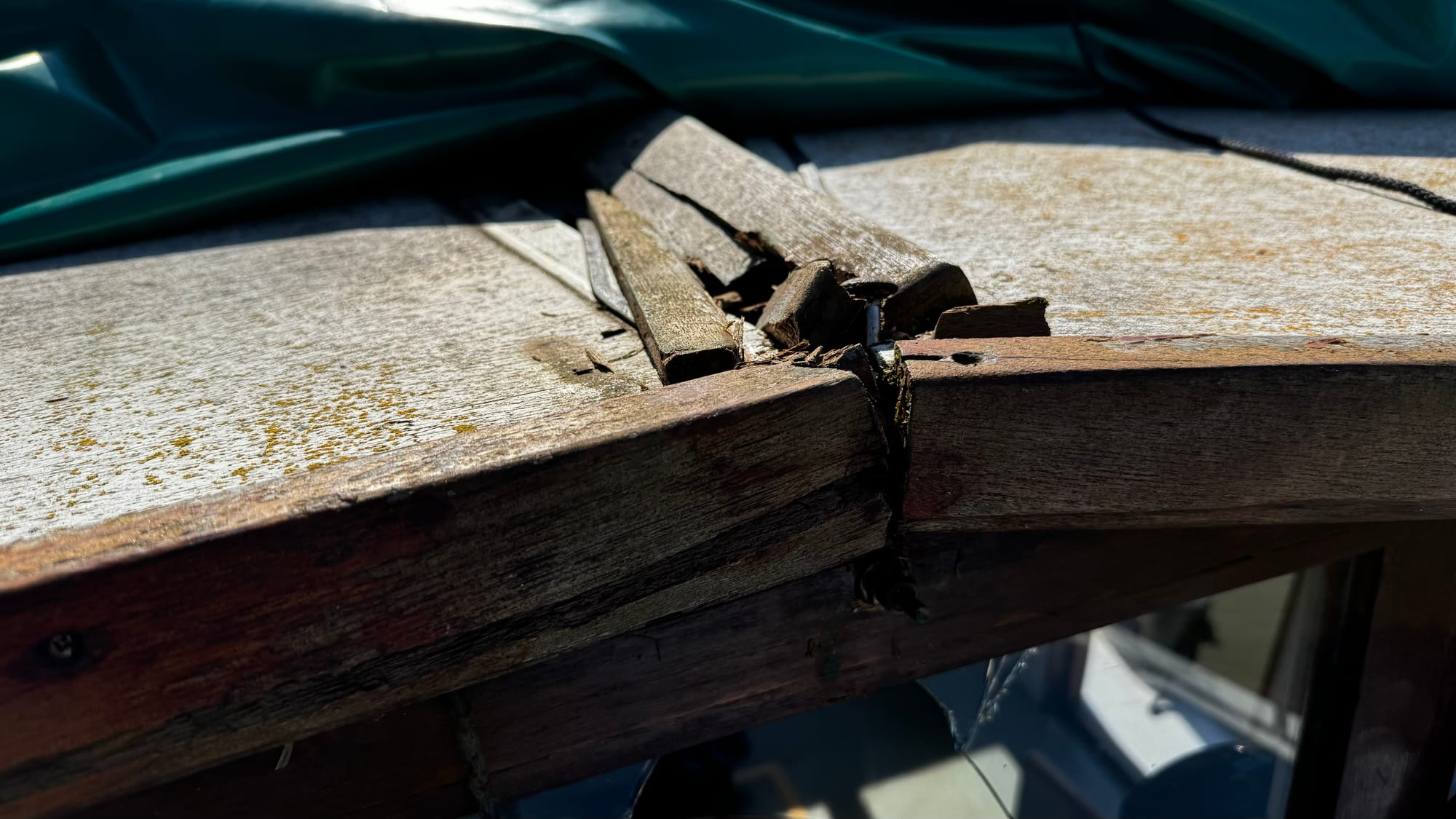
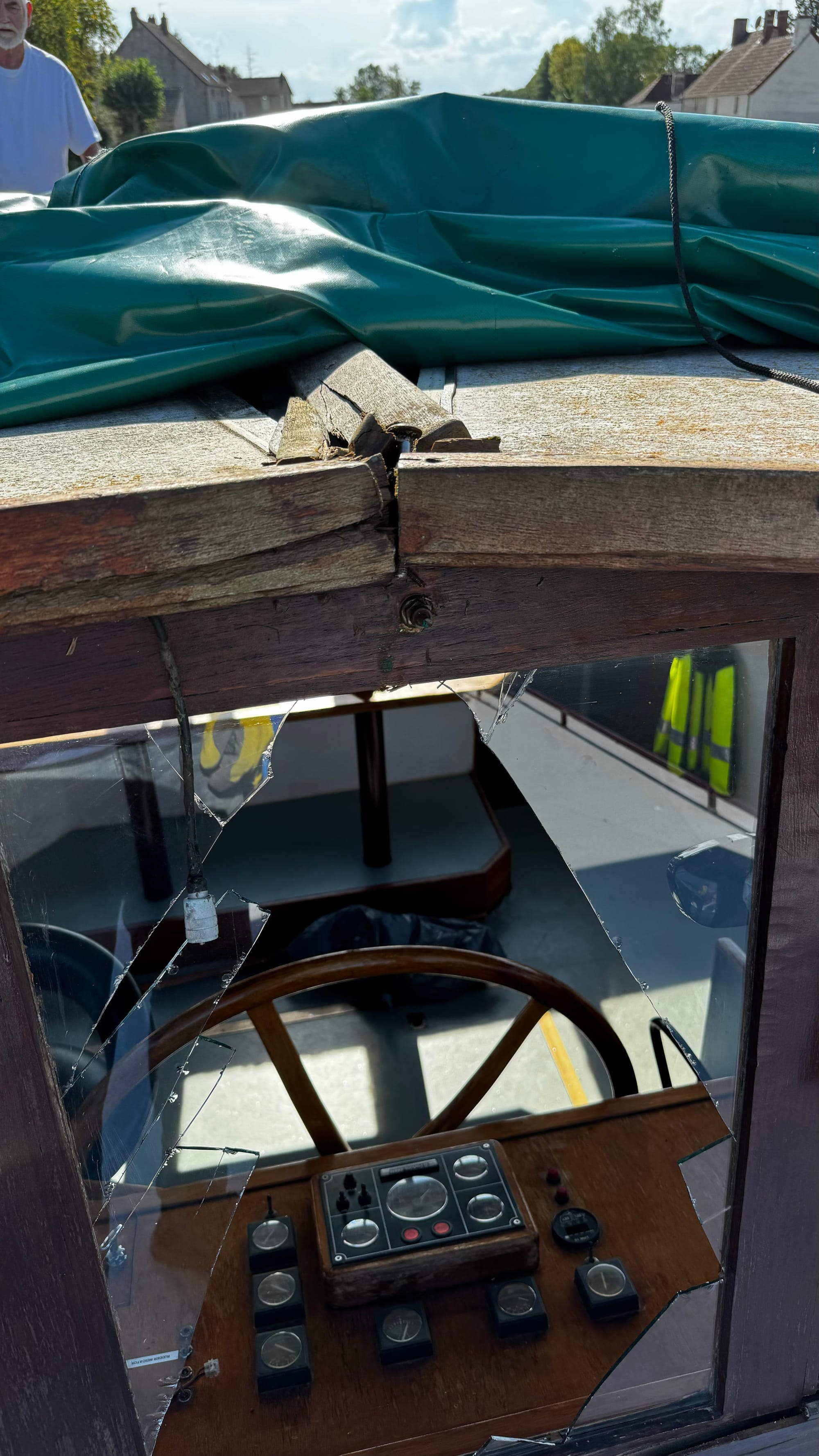
Often, the locks have road bridges at one end. This one was a little shorter than others, and when the lock wave hit us, the stern of the boat lifted, and the wheelhouse crashed into the bridge. I was on the helm, and there was a slow, inexorable sense of impending disaster. I hoped the wheelhouse would sneak under, but the lock wave lifted us. A shattering of glass followed a massive crunch. The F clamp we had holding the tarp on the roof had hit. As the windows shattered, I was showered with broken glass. I ducked and covered. As it stopped, I hit the throttle – this is counter-intuitive, but it drags the stern lower and apart from the first section at the front of the wheelhouse, everything escaped unscathed. The windows were not laminated, and giant, sharp shards of glass were everywhere.
We continued forward to the next lock and then stopped to clean up. It was a disheartening experience. The wheelhouse roof had also lifted, sitting even higher now, and the tarp brushed against several bridges. There was a very low bridge at the next town, the lowest on the canal, and the safety flag at the front brushed it. We slammed into reverse, and I backed down the canal until we could tie off on the town quay. We decided the best course of action was to drop the wheelhouse.
For the first time, we disassembled it. It was a good chance to reassess the damage as well. As we pulled everything apart, it felt like we would be able to salvage it if we could get to a hardware store.
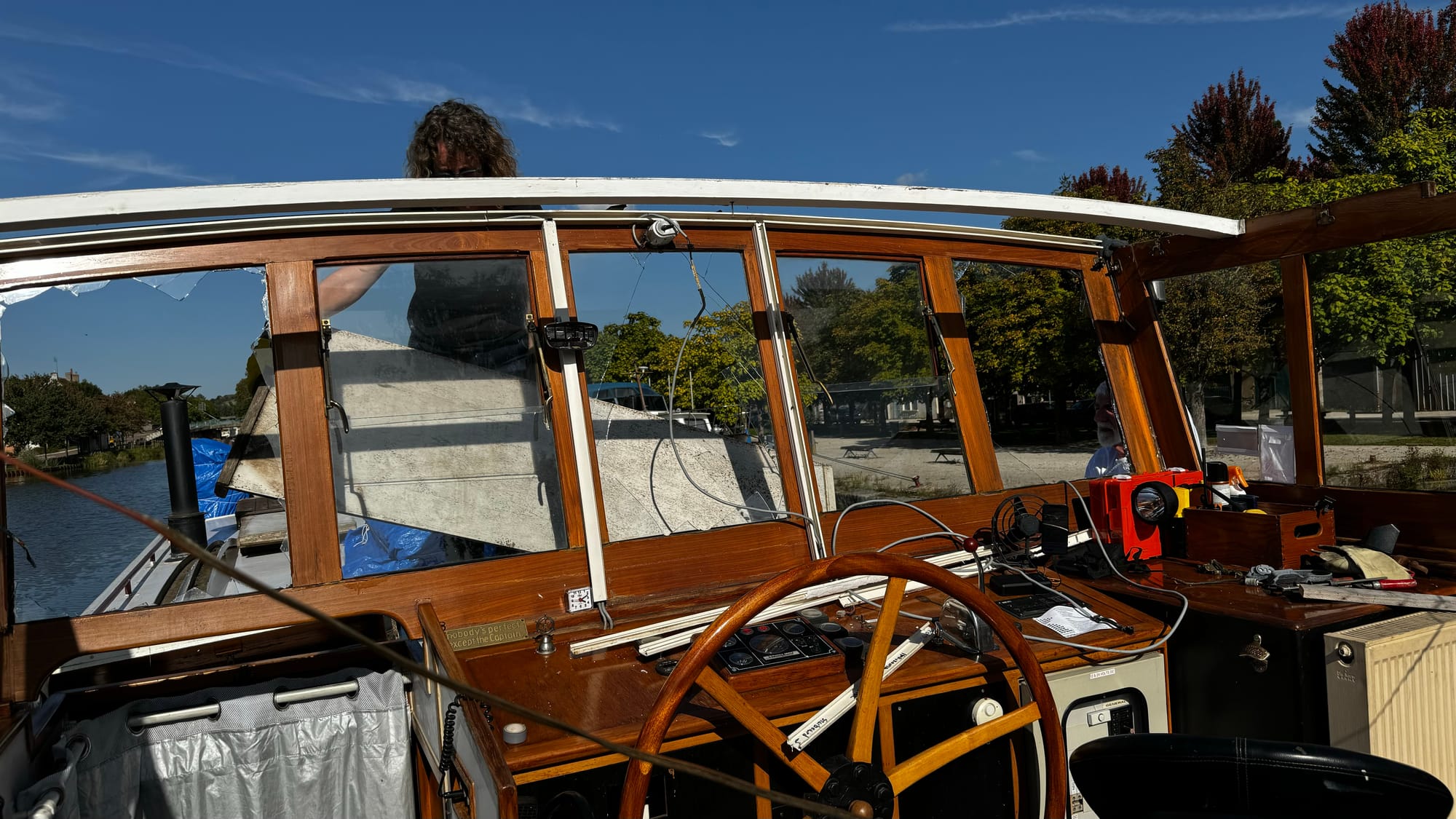
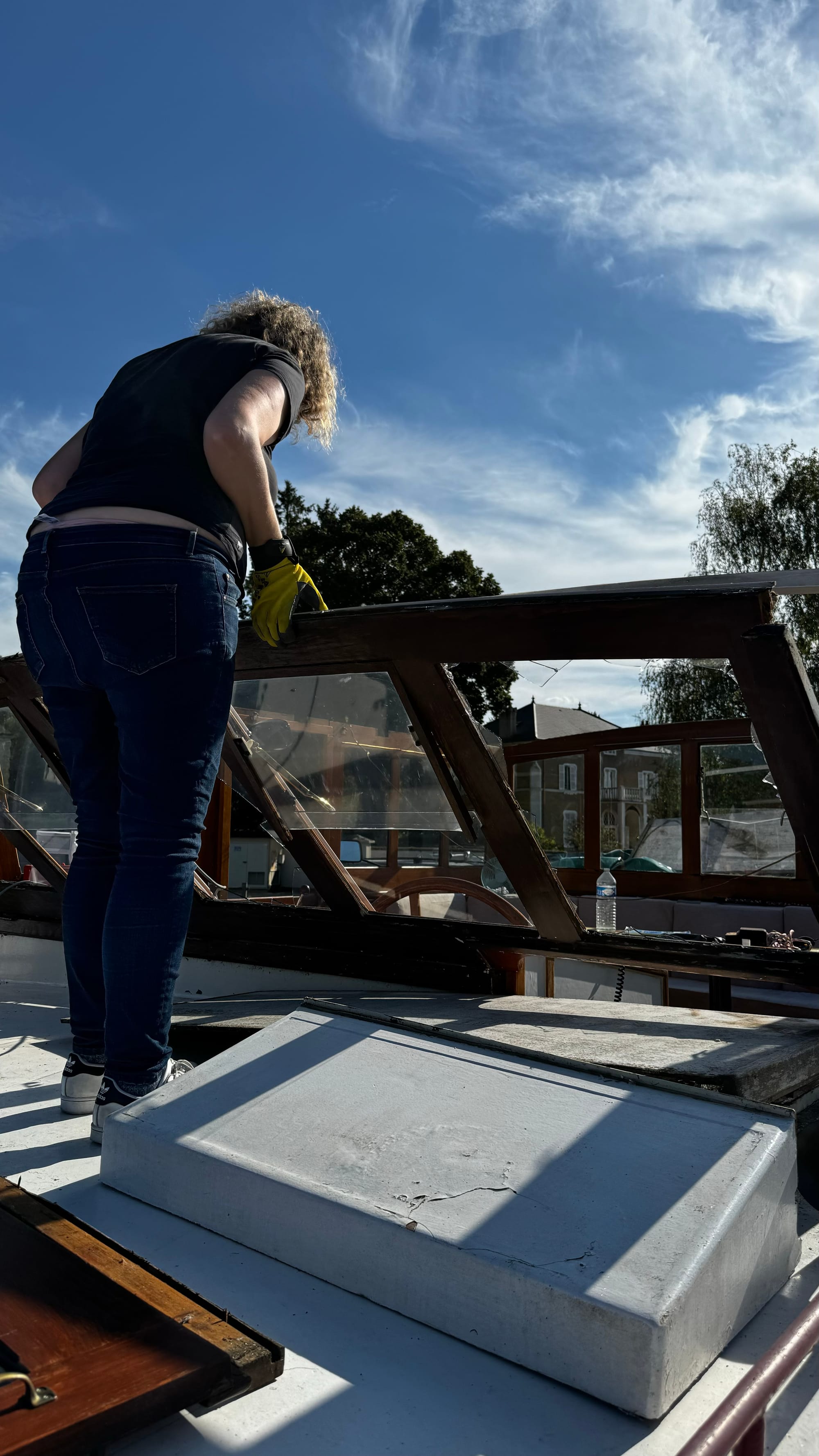
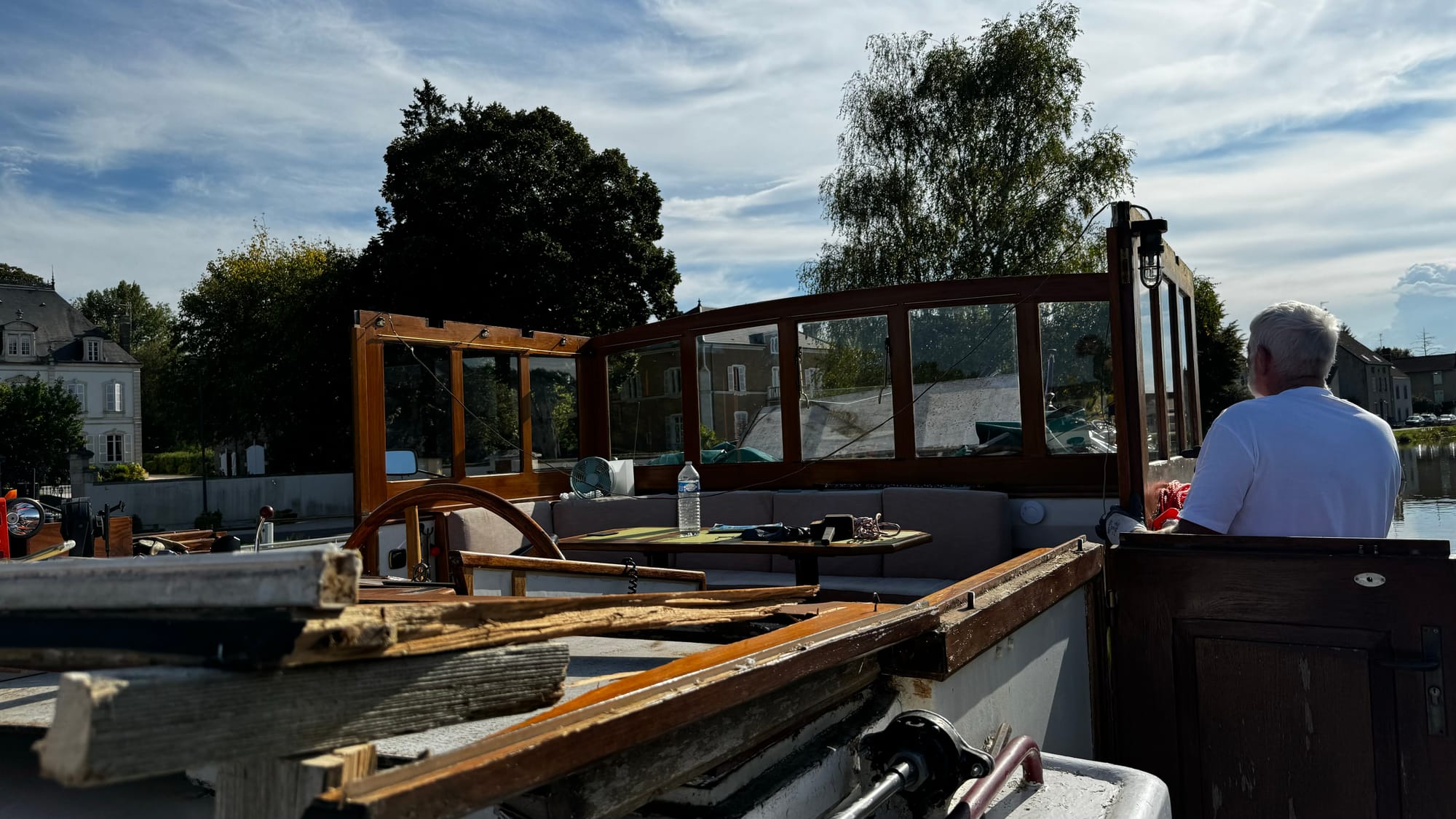
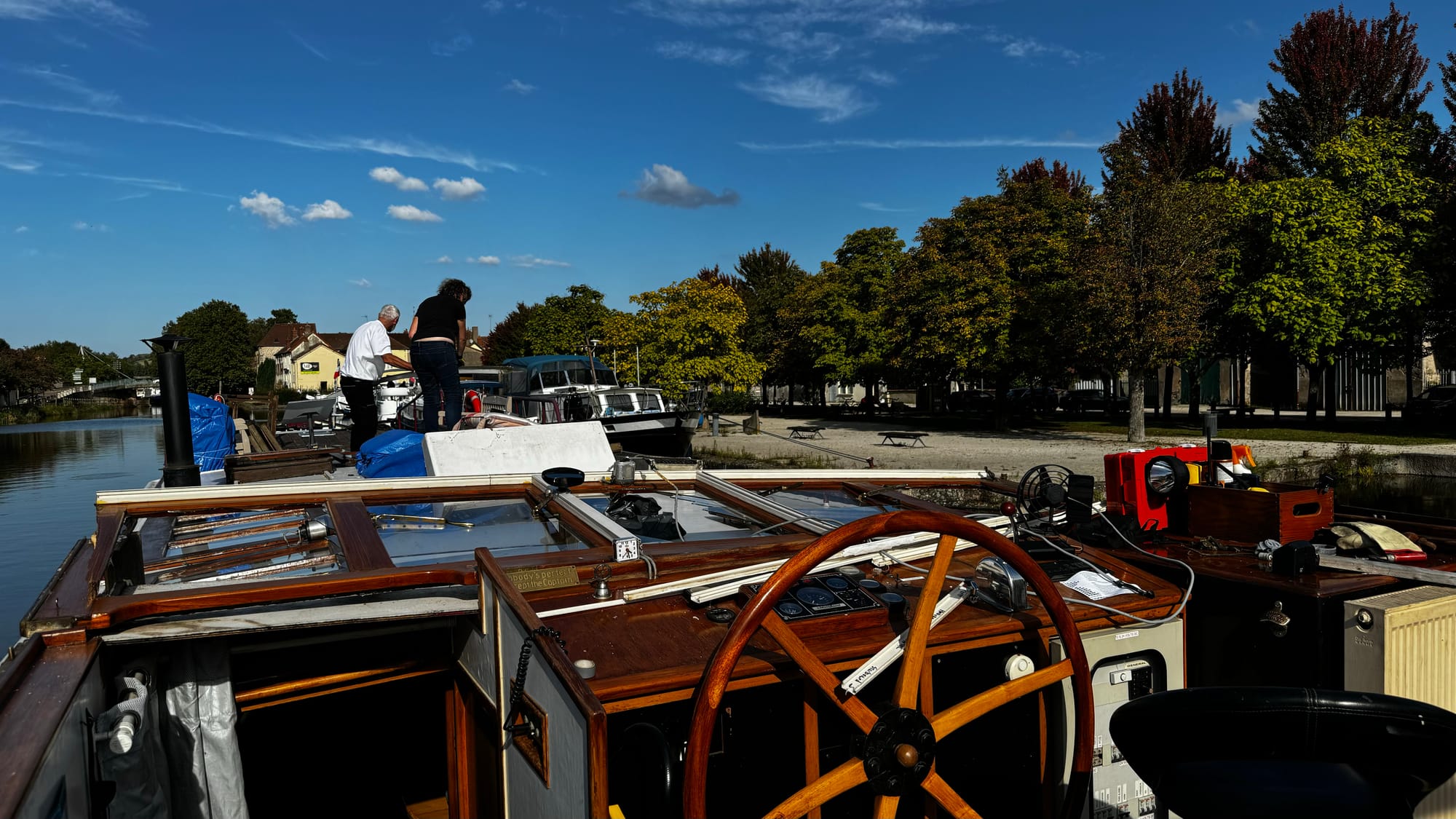
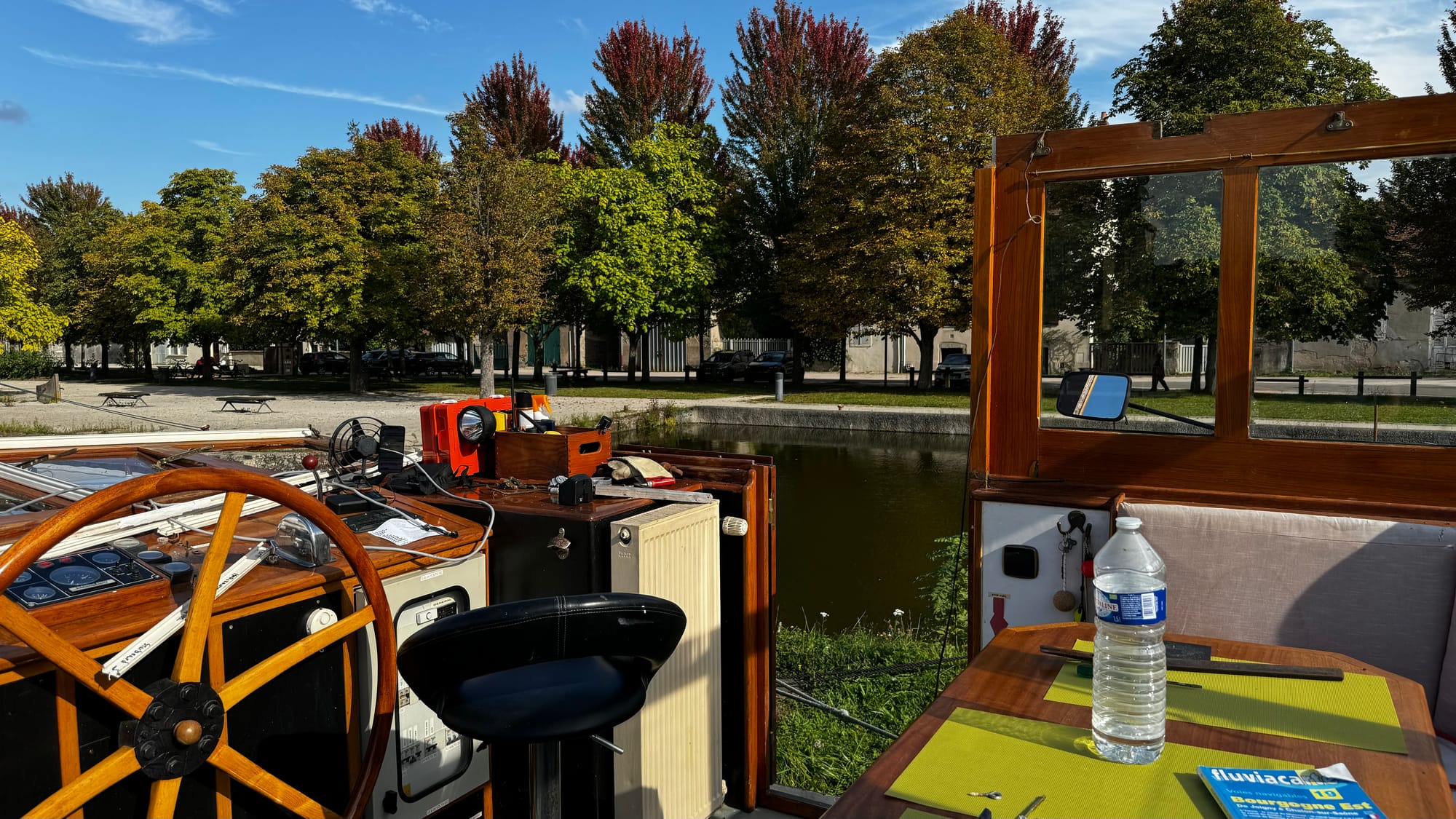
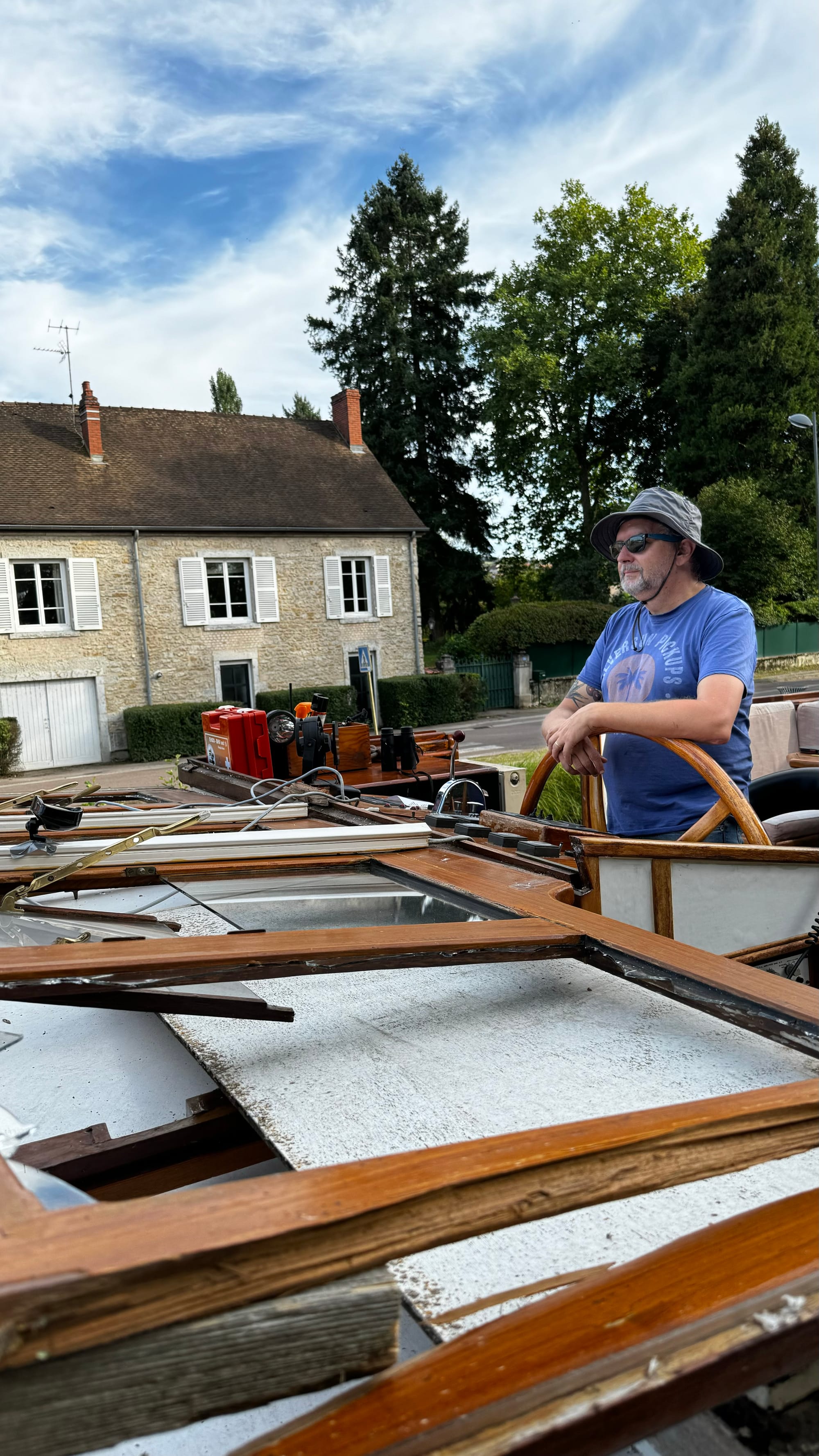
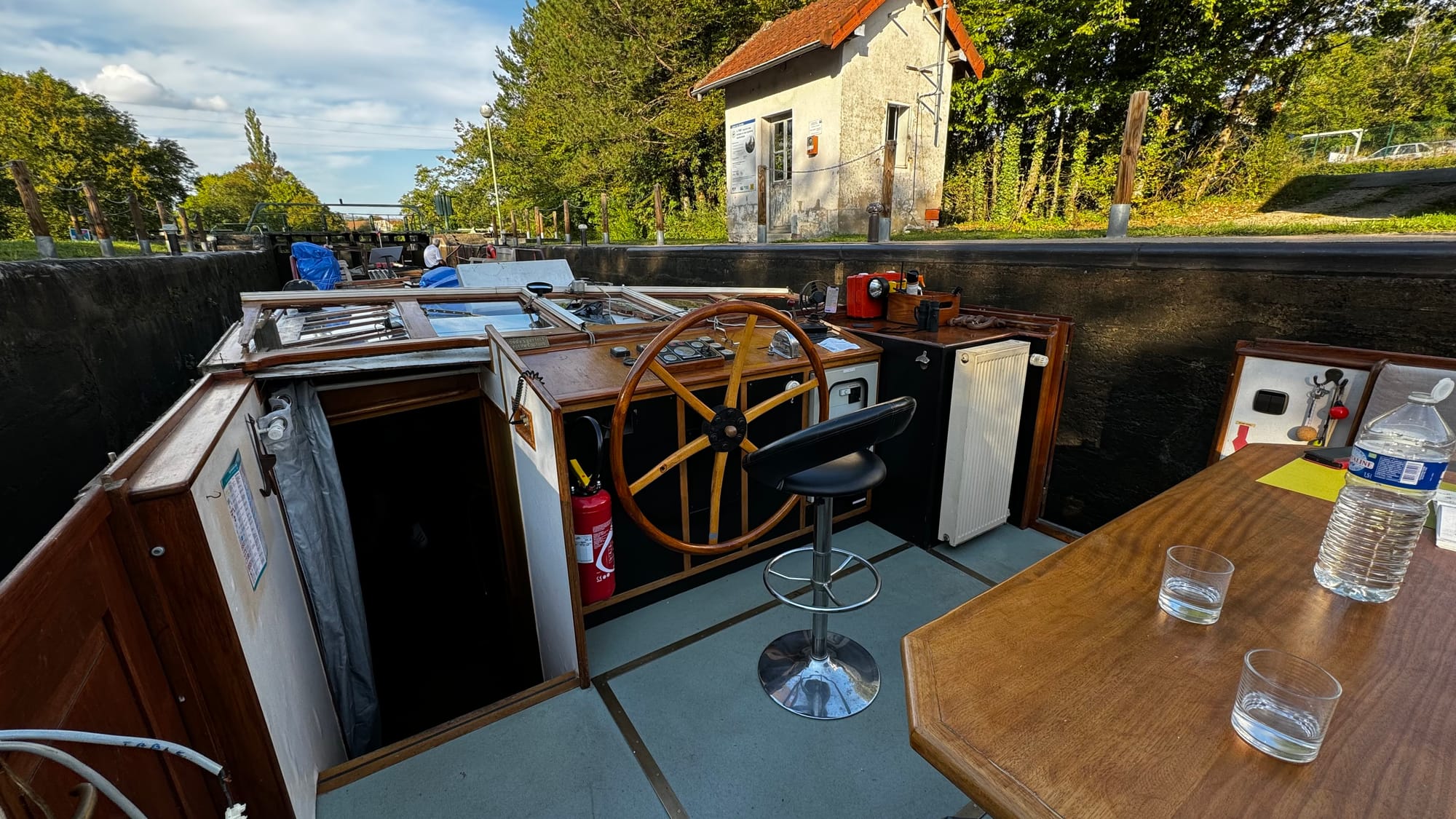
Disassembling the broken wheelhouse.
So onwards we pushed. Fortunately, it was a warm, dry day, so it was enjoyable with the wheelhouse lowered. The scenery was fantastic; if it hadn't been for the disaster, it would have been stunning.
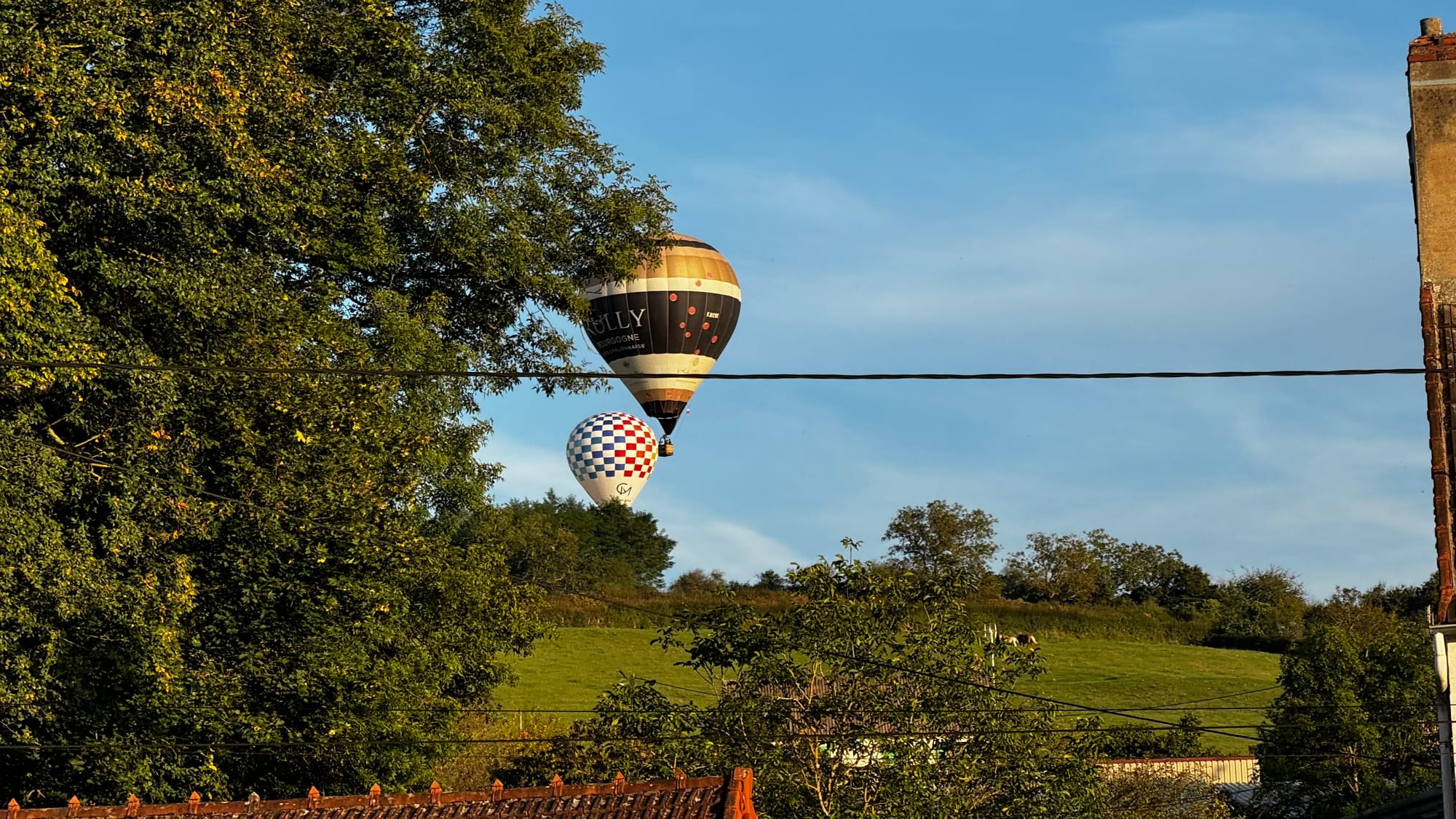
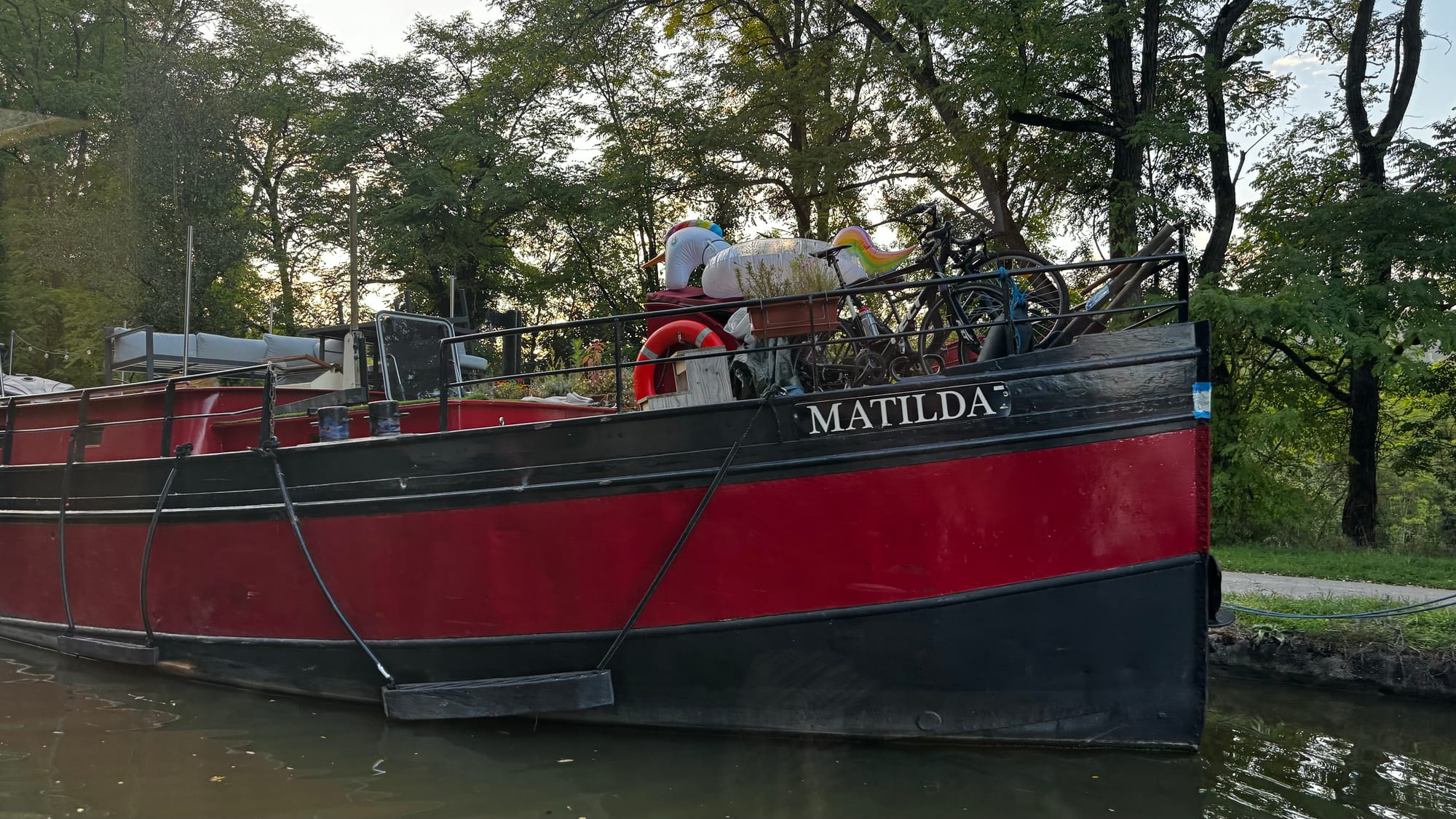
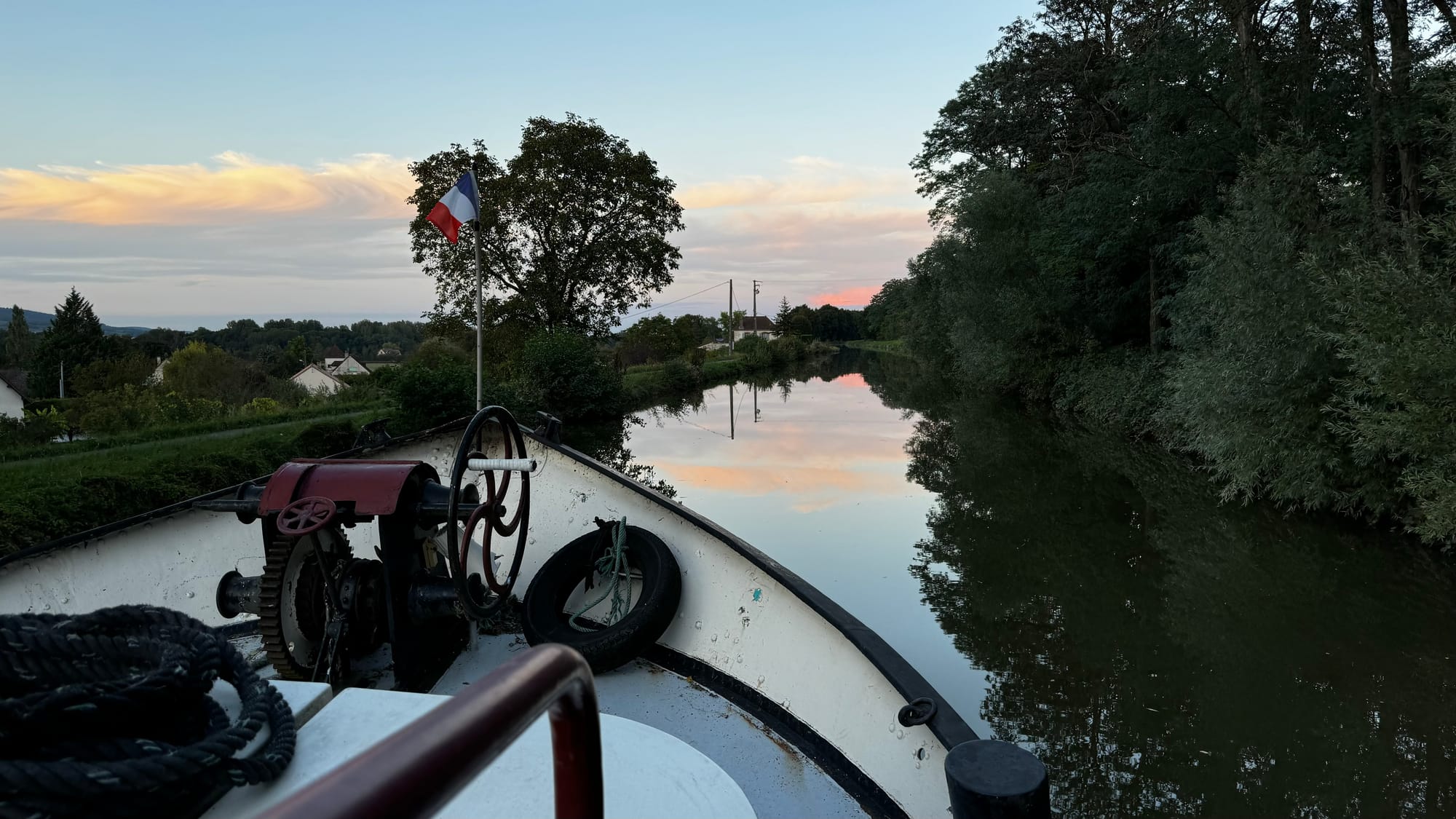
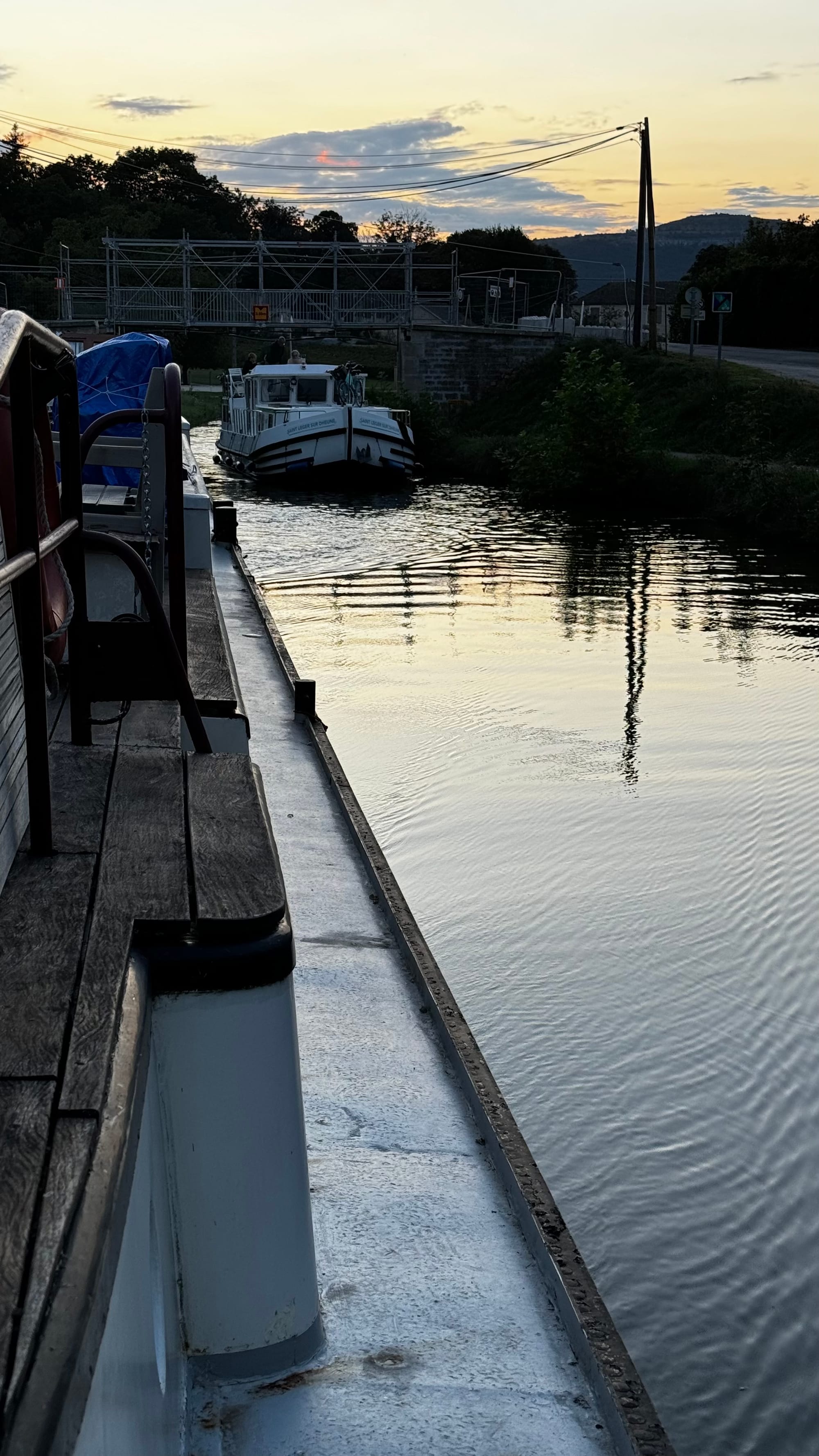
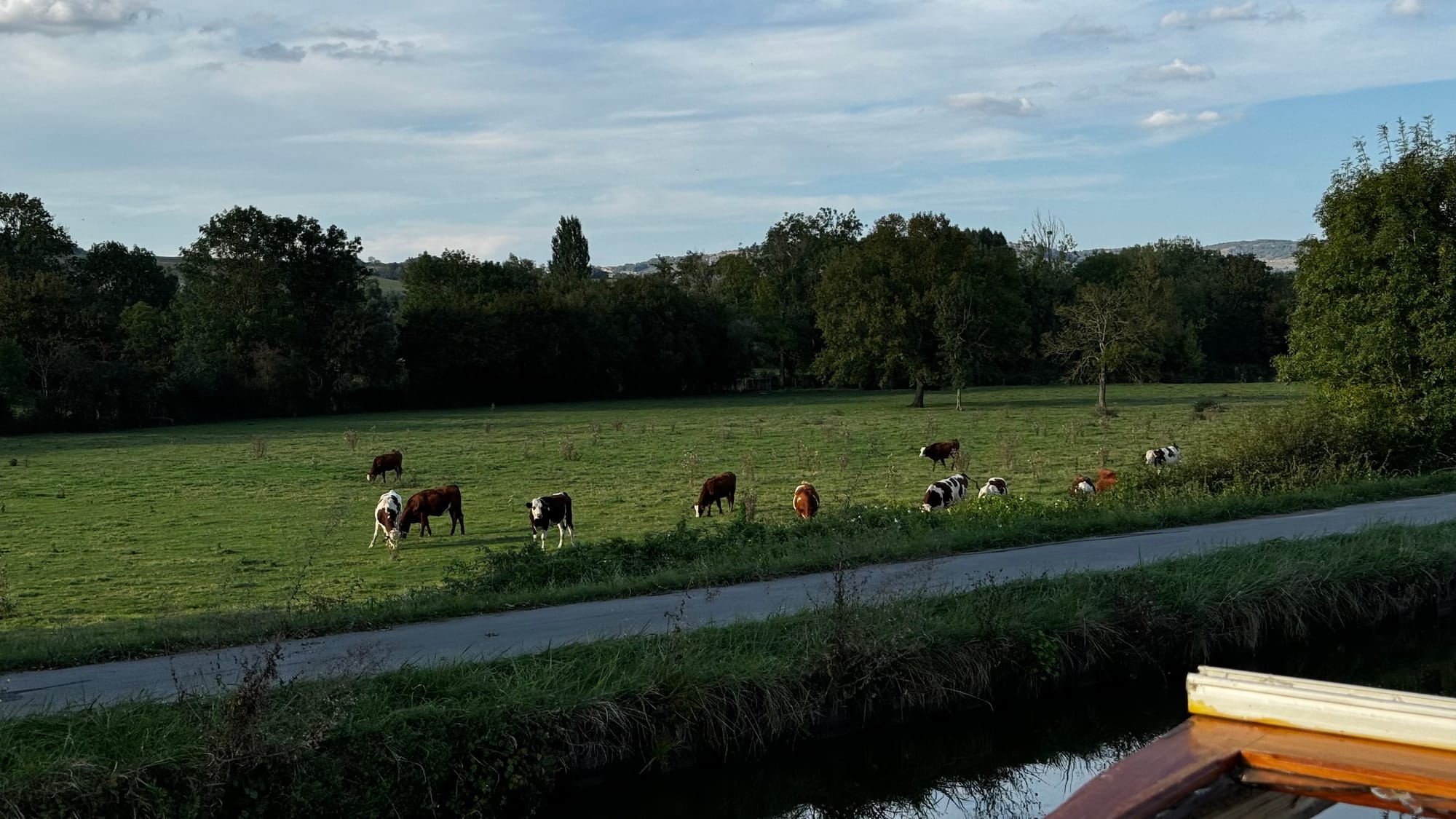
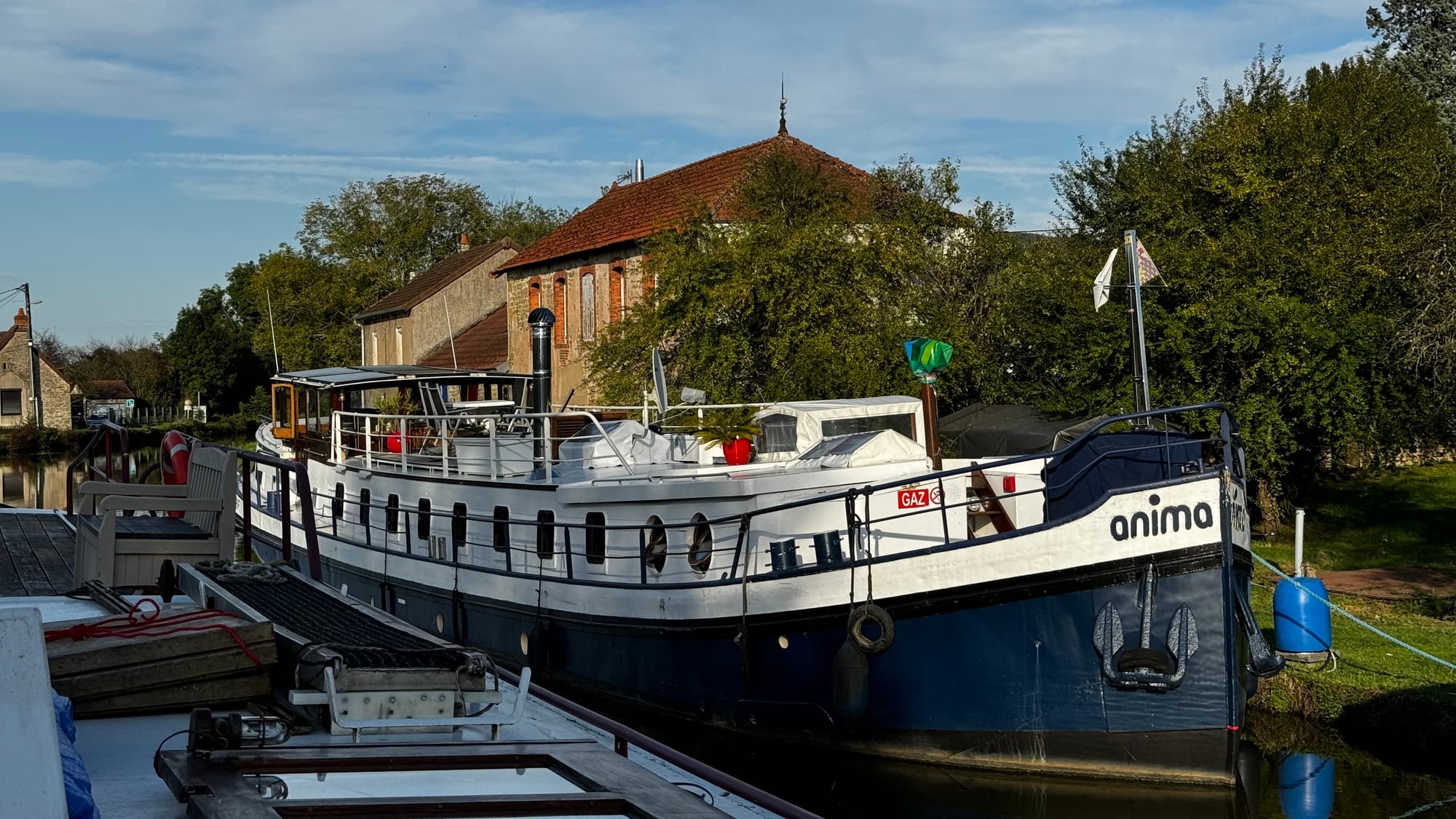
Some special sights distract us as the thought of rebuilding the wheelhouse loomed
Paul took over steering to save us time as darkness was approaching. With the wheelhouse disassembled, our nav lights didn't work, and we needed to get onto the quay. A smaller plastic rental boat overtook us on a slow corner and immediately stopped and moored, causing extra stress and an emergency break on our part. Clair de Lune is NOT an easy boat to stop. When she's going forward, she will happily continue in that direction for a very long time. If you're navigating in close quarters with a 100-ton steel boat on a narrow waterway, be patient! It's not us that's going to get squashed.
On the quay, we finally had time to eat dinner, which finished around 10 pm, and then Karina and I secured the wheelhouse with a tarp. We finally made it into bed and collapsed to sleep.
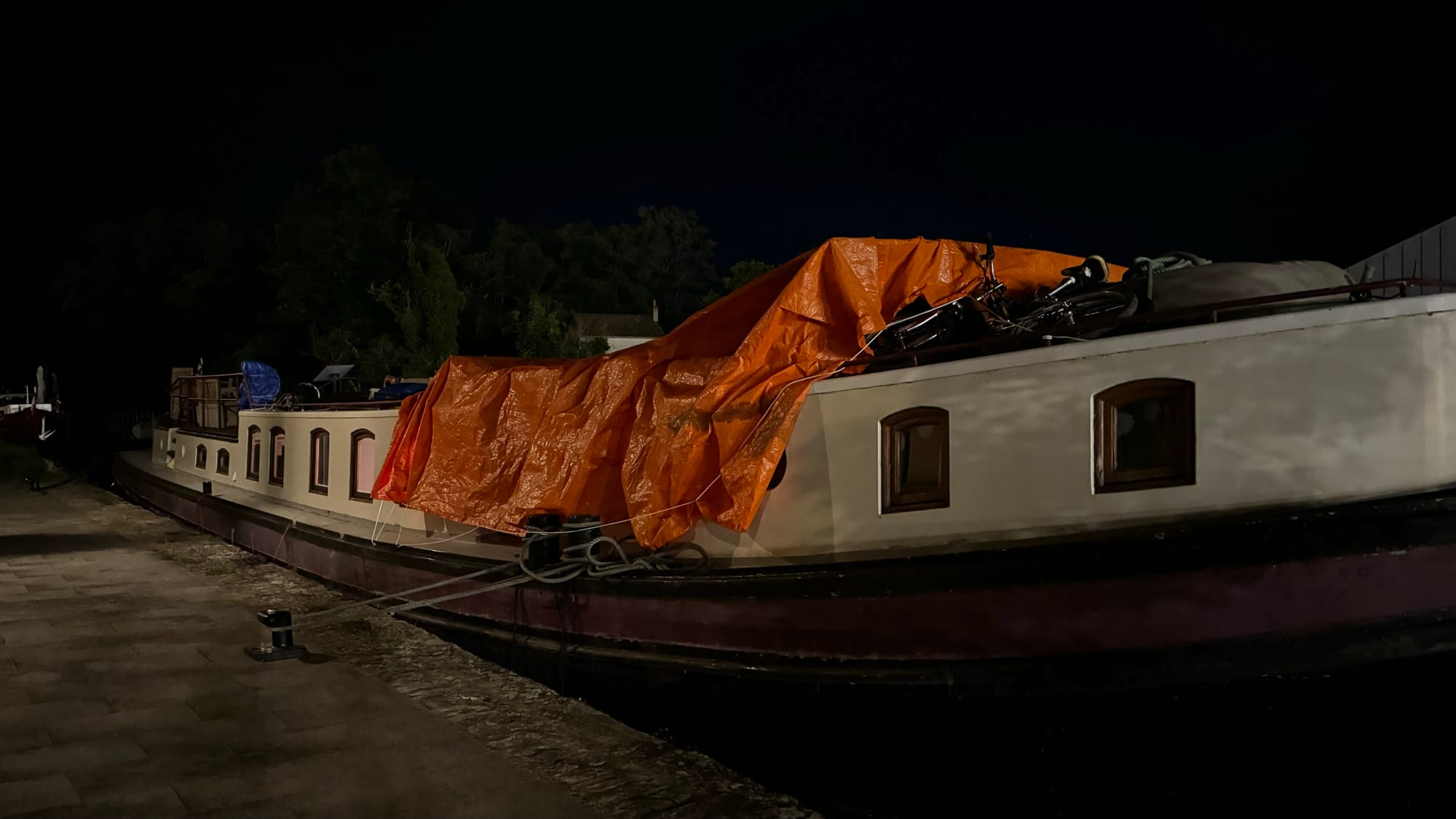
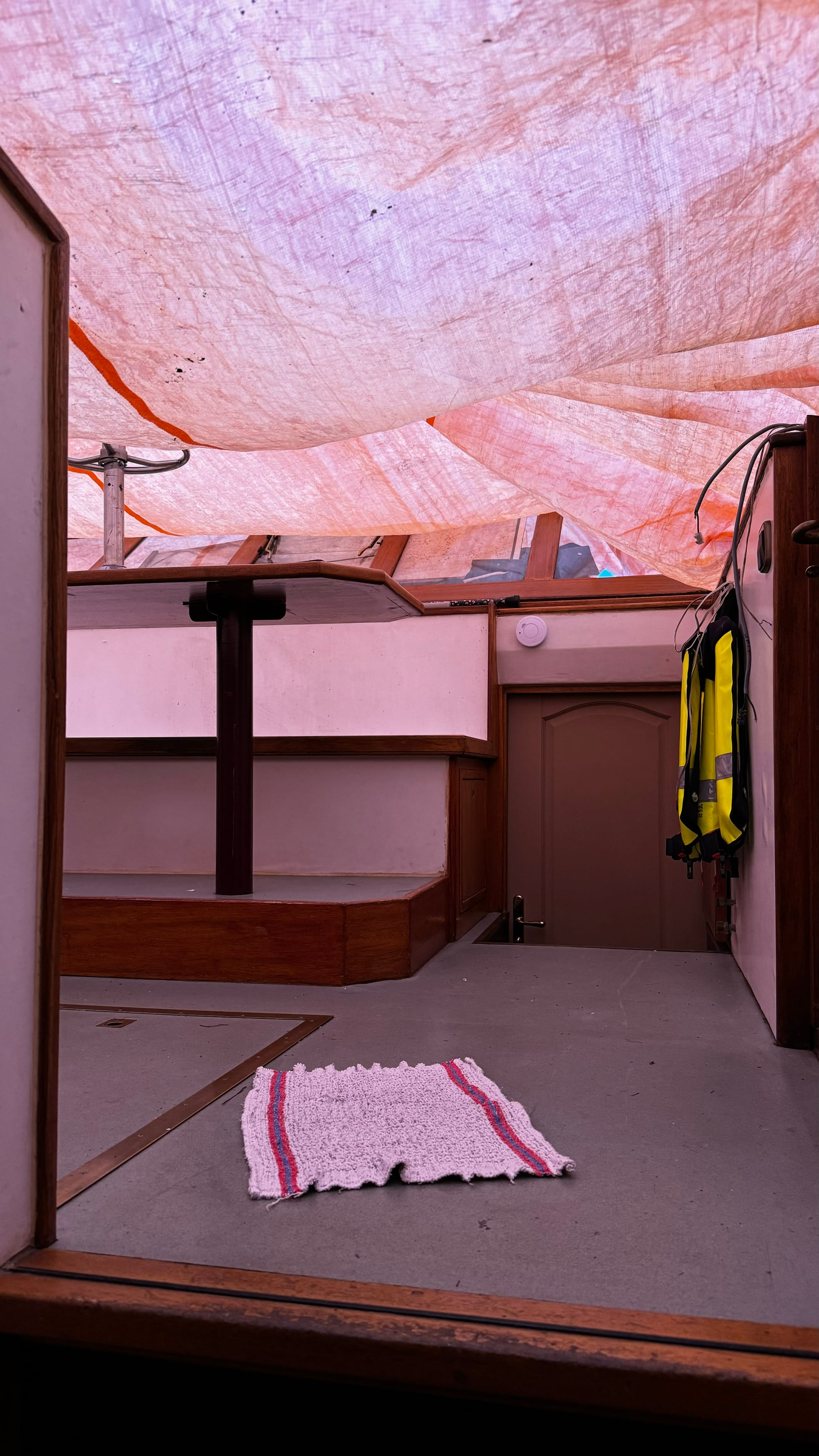
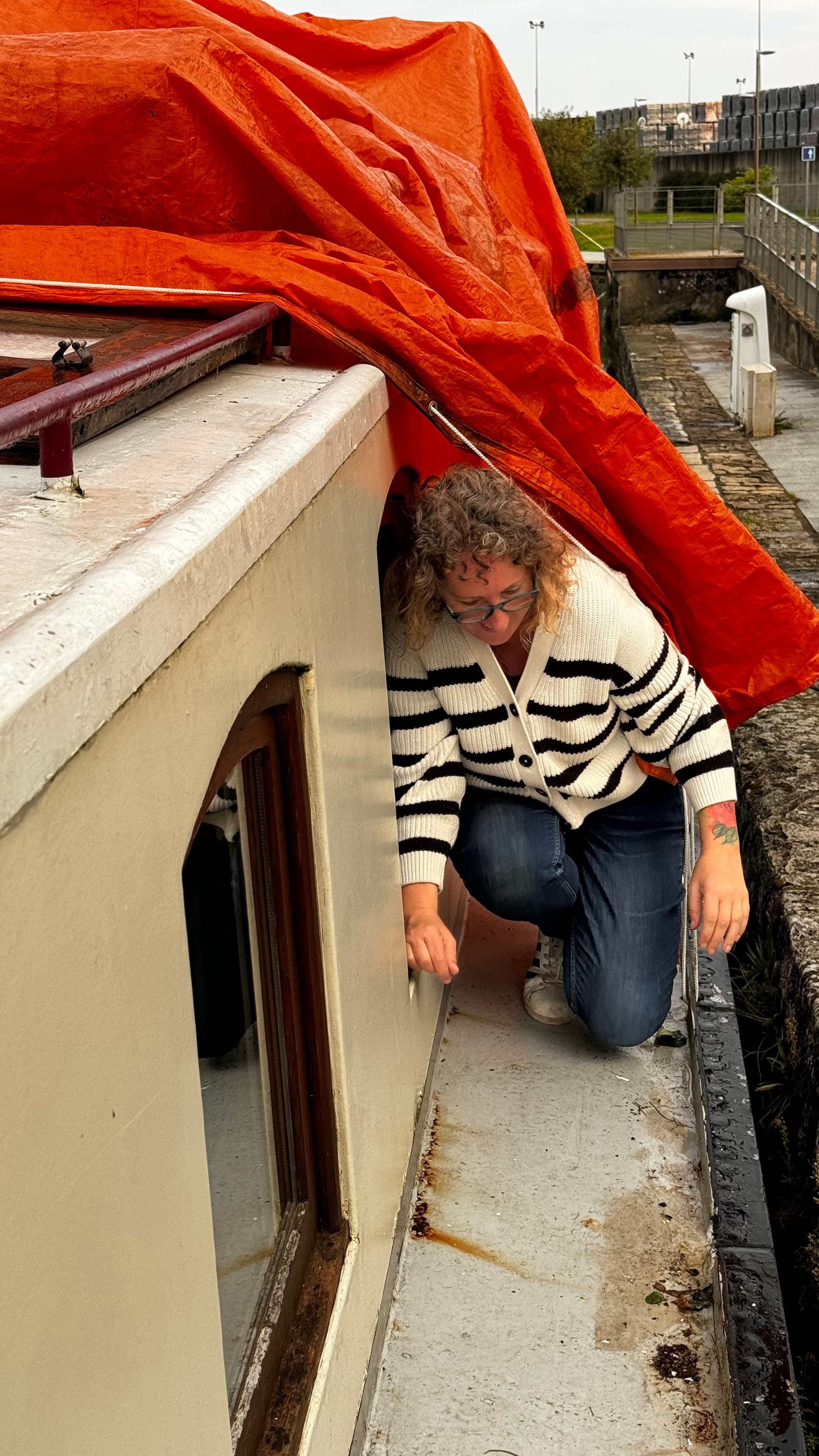
Prepared for overnight rain and a small sense of security as there is no door down to the galley, so open to curious cats or people.
I planned and schemed overnight, and by the morning, when we got up, we had a plan in place. It was off to the hardware store for wood of the correct dimensions, acrylic to fill the windows, lots of glue, screws and a few extra tools.
We started early and worked hard all day. With Paul's help, by around 4 p.m., we'd made repairs and had the wheelhouse back together. It was a relief to see it all fit back into place. In the end, there was no major damage other than to our pride.
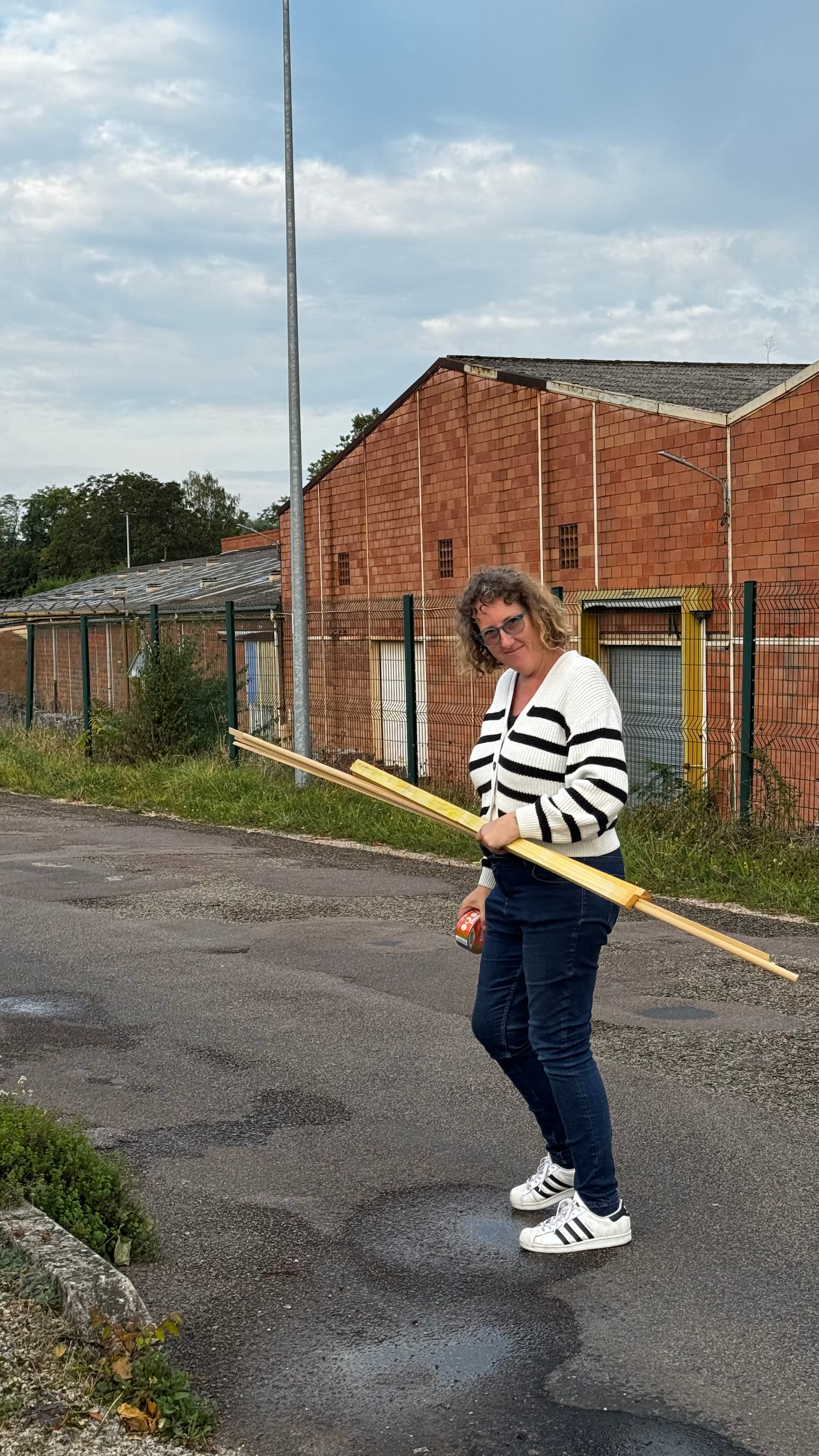
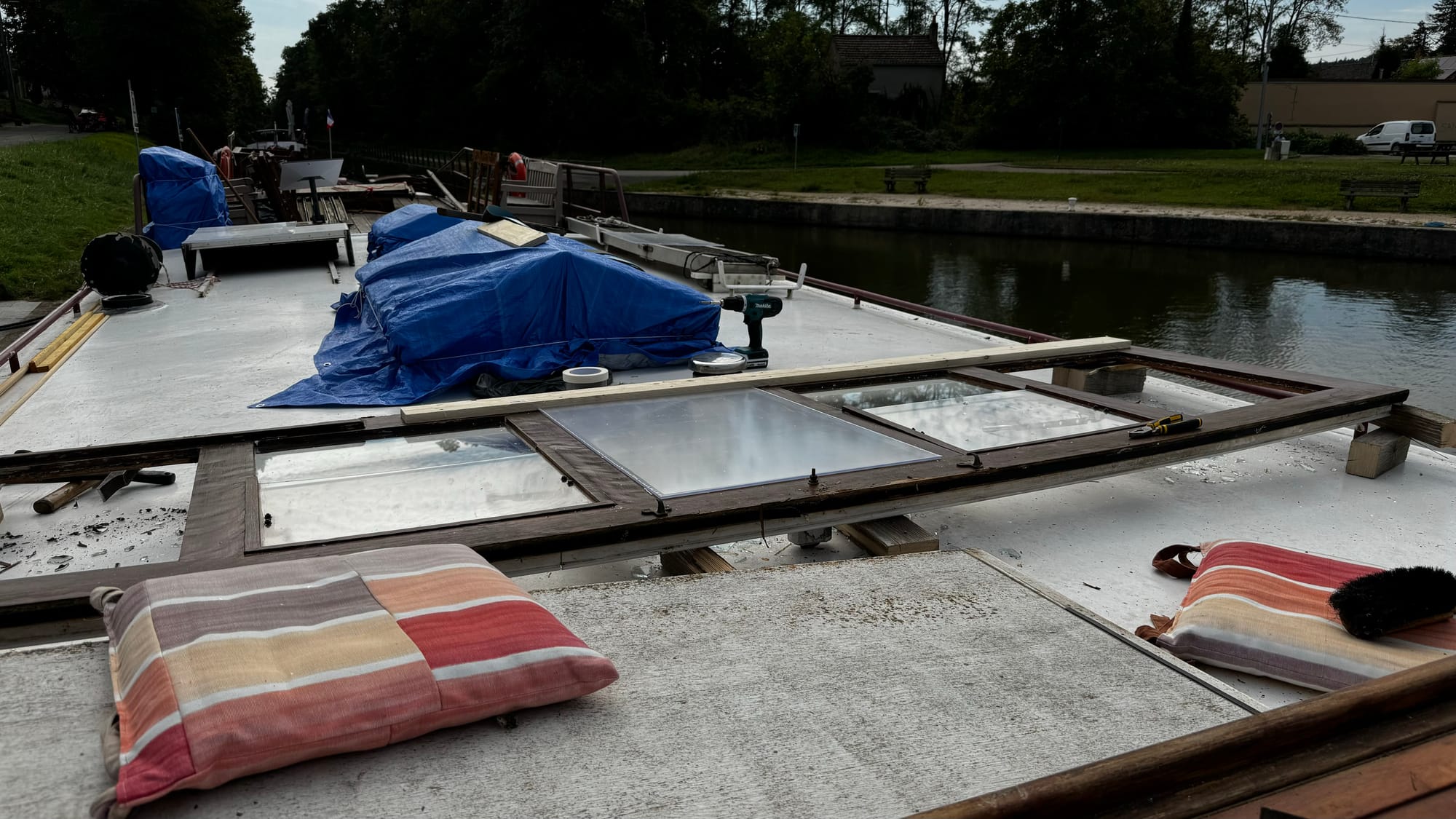
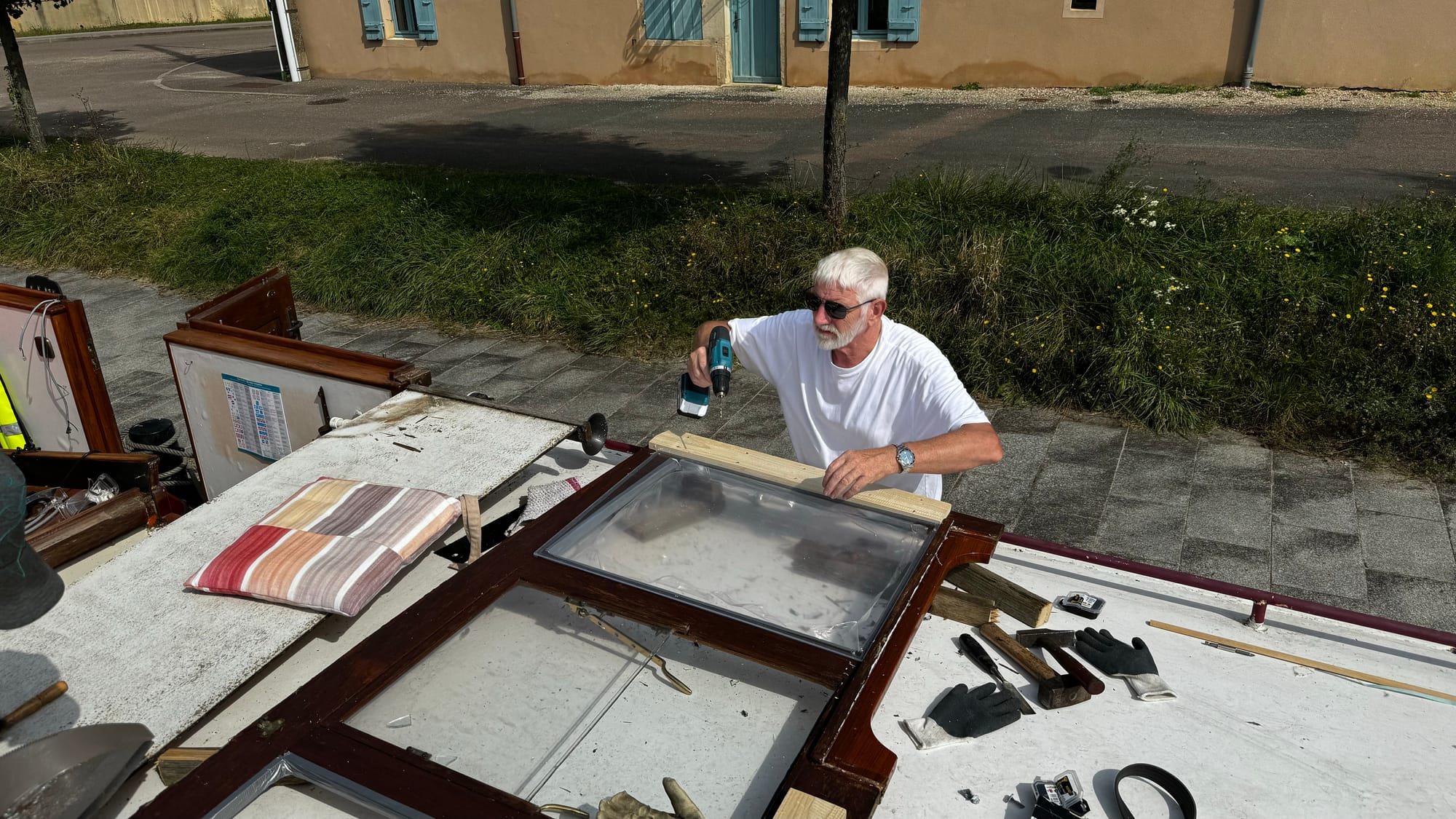
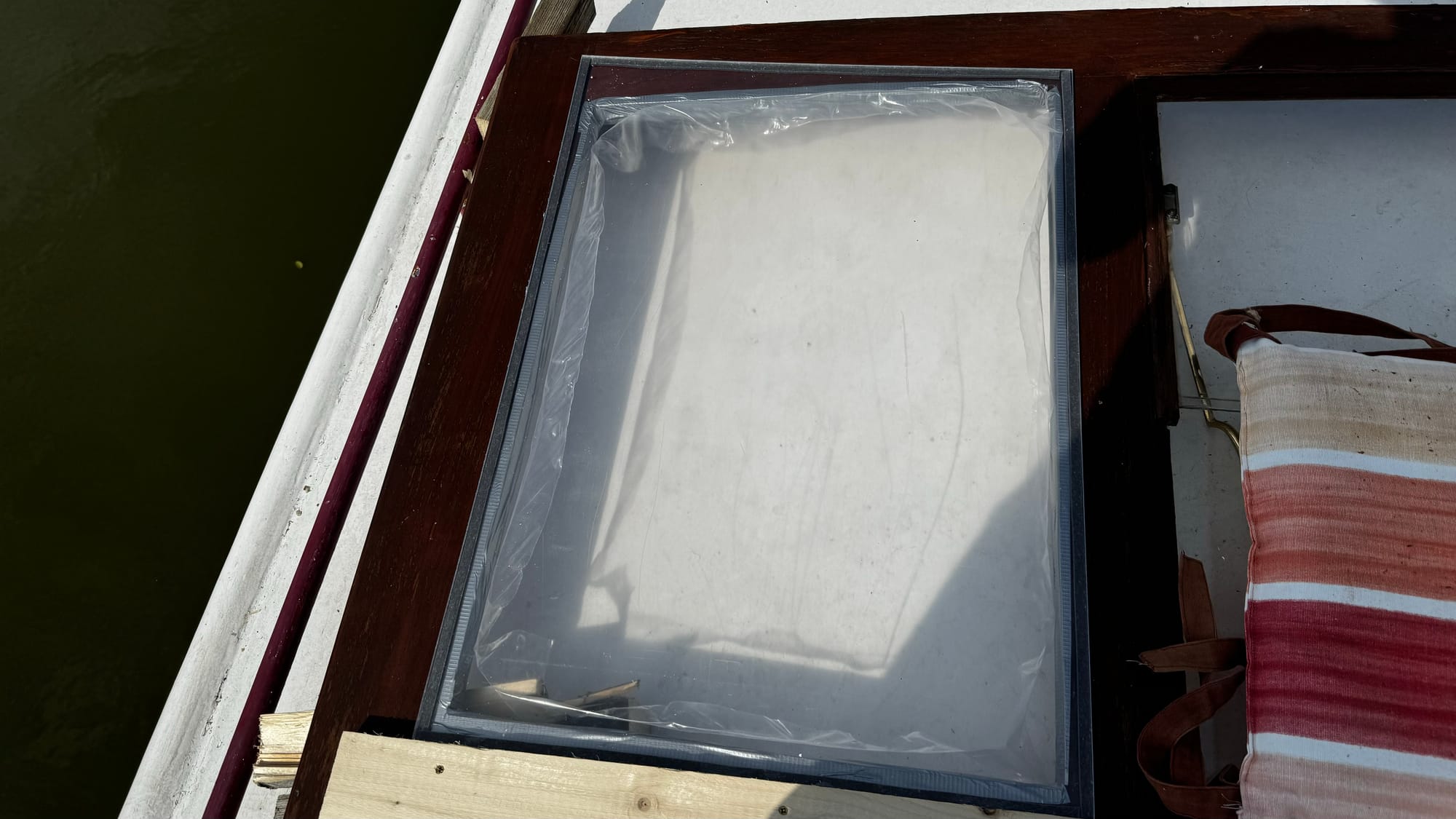
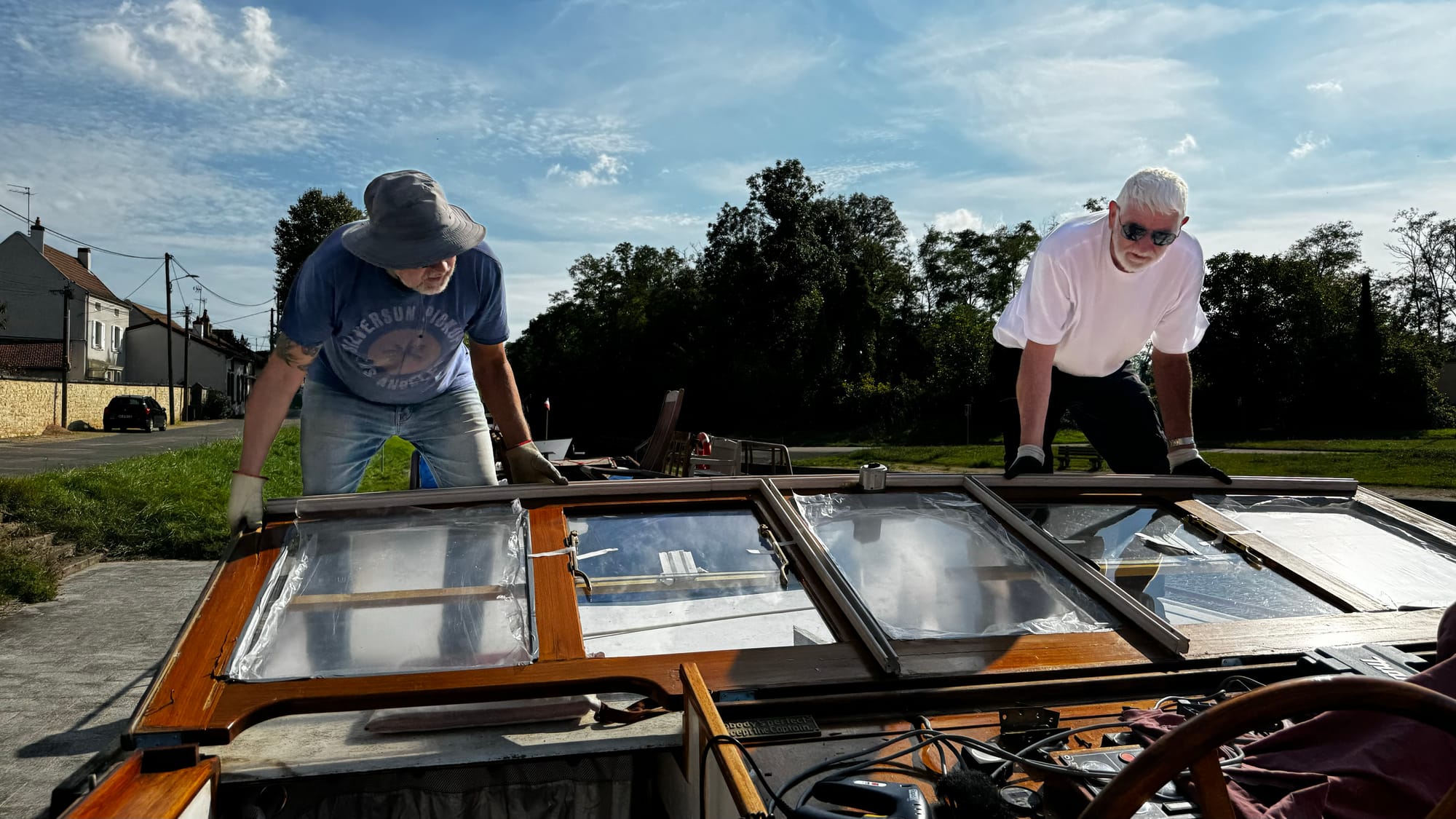
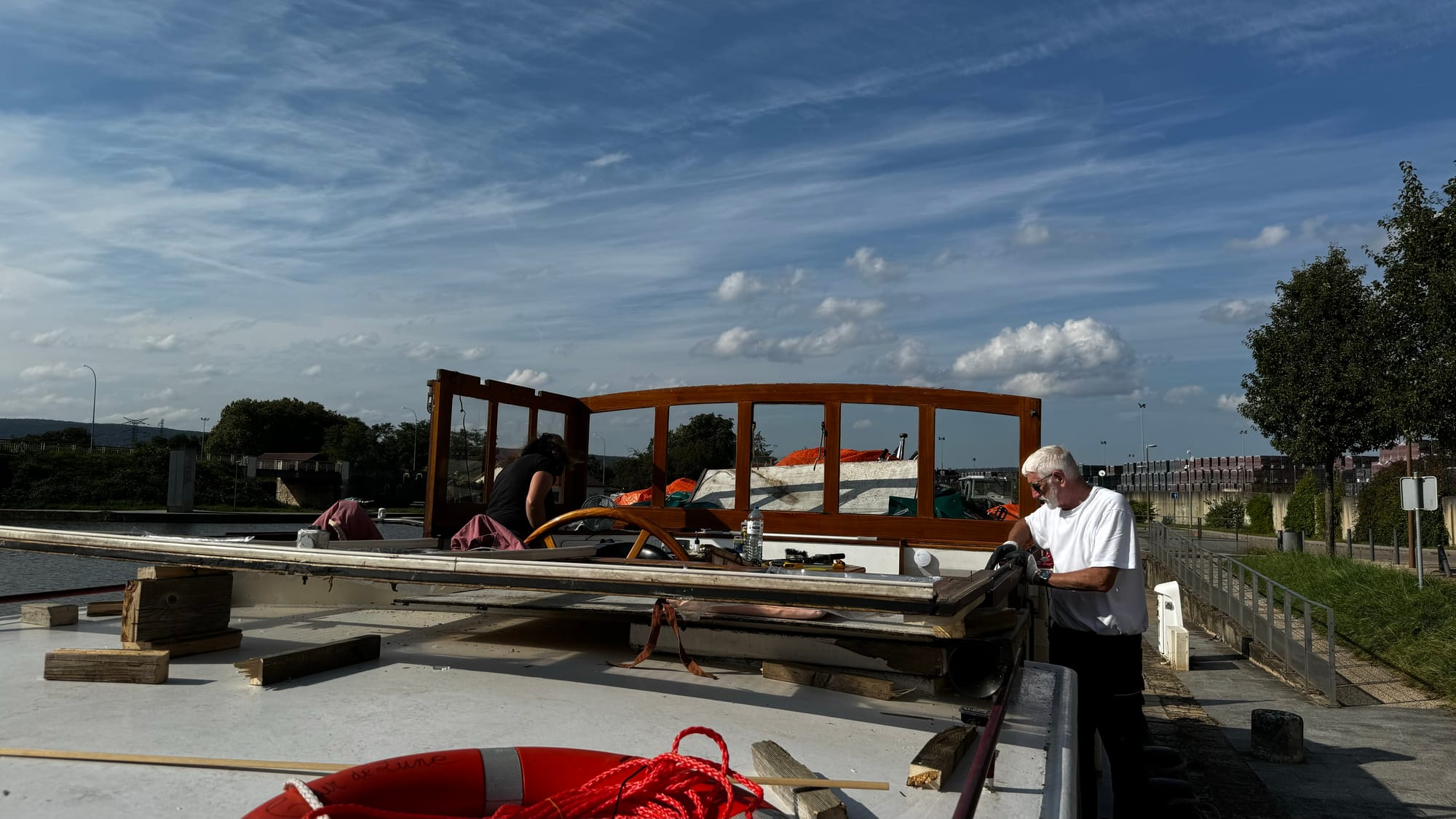
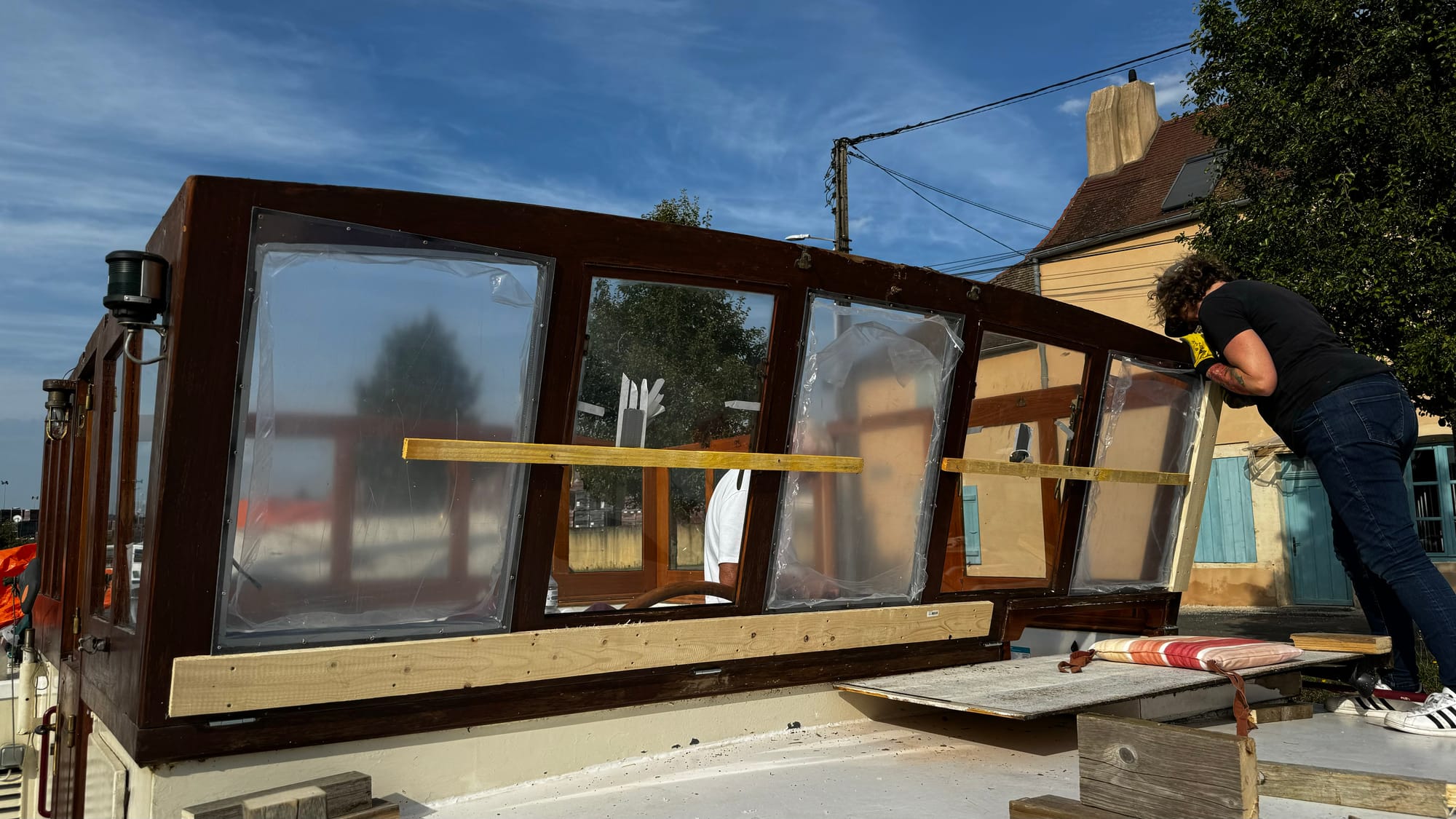
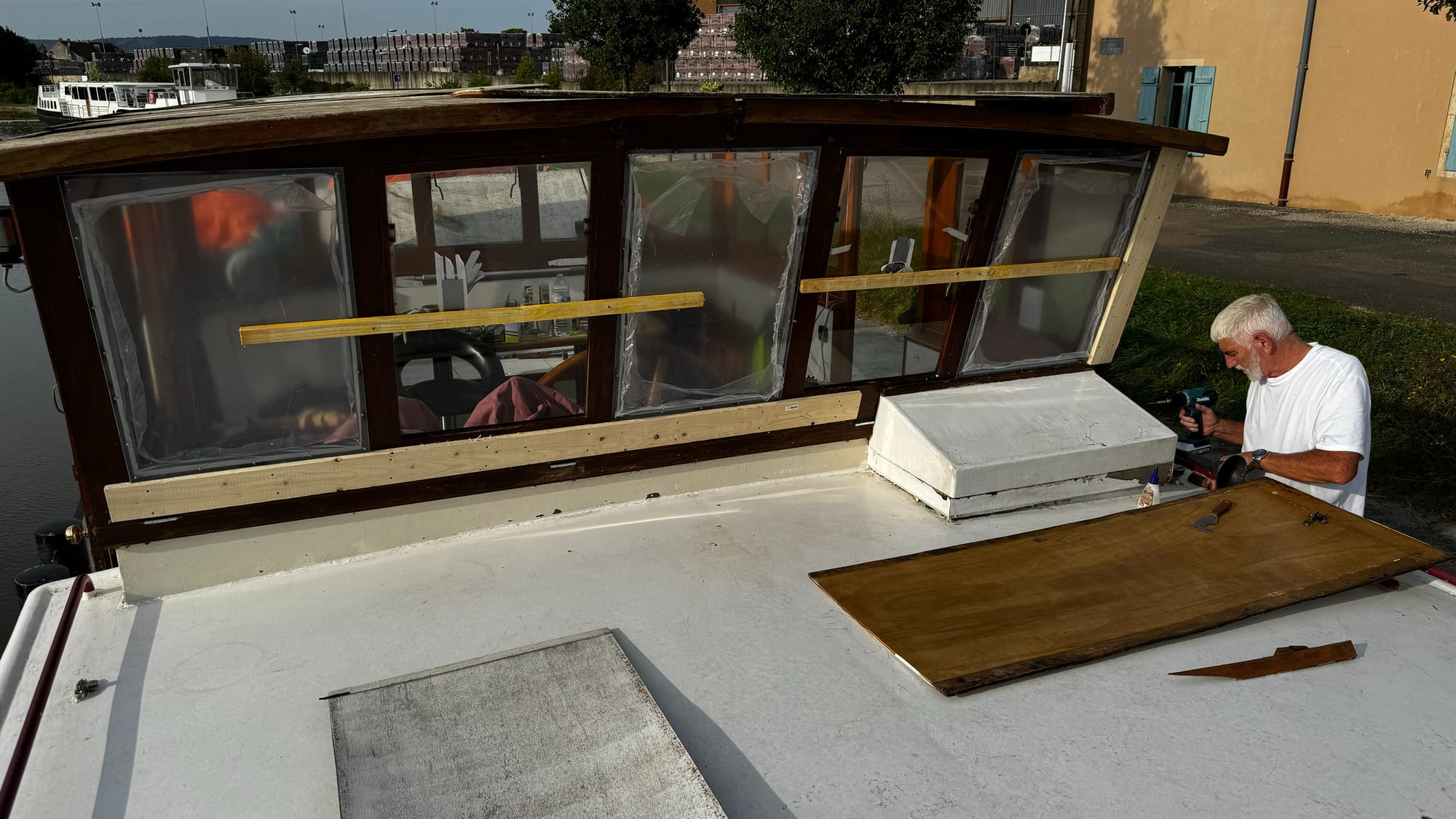
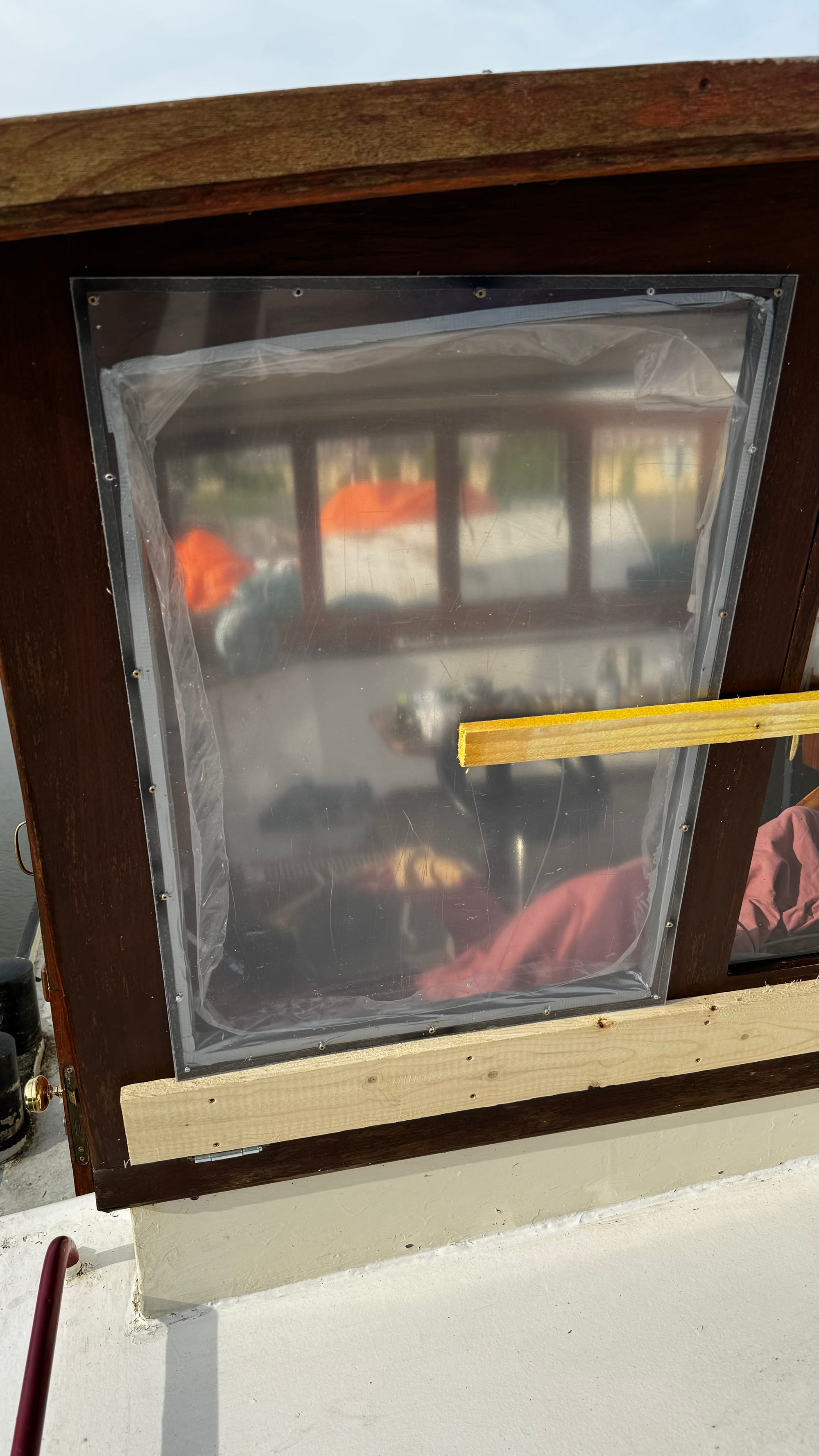
Lots of bracing, lifting and jiggling to get the jigsaw back together
It was too late to move, so we cleaned up and got ready to set off early on Sunday morning to make the first lock (the locks open at 9 am and close again around 7 pm).

Today, we've had a smooth and uneventful journey underway, with more locks and low bridges but no damage. We're relieved. That's been enough drama for our first week moving Clair de Lune.
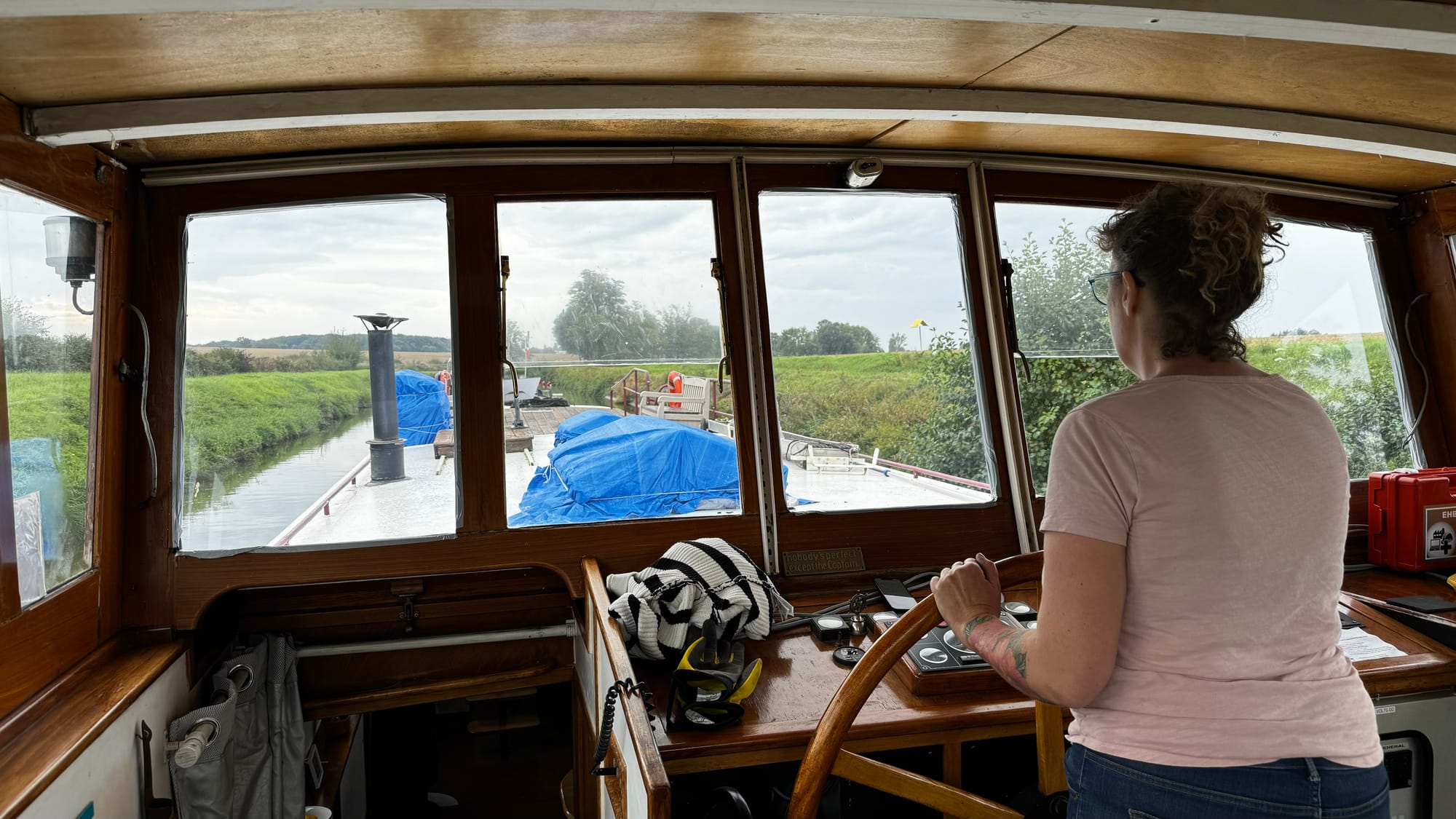
Until next time,
Tim & Karina
